new posts in all blogs
Viewing: Blog Posts Tagged with: demystify, Most Recent at Top [Help]
Results 26 - 50 of 135
How to use this Page
You are viewing the most recent posts tagged with the words: demystify in the JacketFlap blog reader. What is a tag? Think of a tag as a keyword or category label. Tags can both help you find posts on JacketFlap.com as well as provide an easy way for you to "remember" and classify posts for later recall. Try adding a tag yourself by clicking "Add a tag" below a post's header. Scroll down through the list of Recent Posts in the left column and click on a post title that sounds interesting. You can view all posts from a specific blog by clicking the Blog name in the right column, or you can click a 'More Posts from this Blog' link in any individual post.

By: Kathy Temean,
on 7/16/2014
Blog:
Writing and Illustrating
(
Login to Add to MyJacketFlap)
JacketFlap tags:
Advice,
Process,
article,
How to,
Jill Corcoran,
demystify,
Erika Wassall,
Path to Publishing,
Pitch is Concept,
Writing Tips,
Add a tag
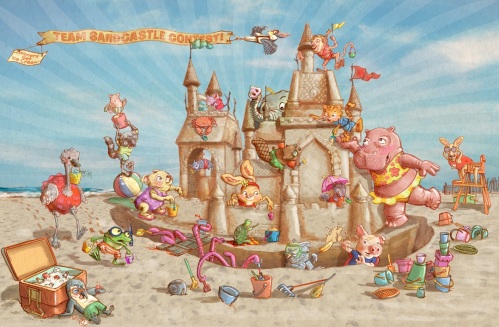
This Team Sand Castle Contest was illustrated by Jason Kirschner and won Honorable Mention Unpublished Illustrator Award at the NJSCBWI Artist Showcase. http://www.jasonkirschner.com/jasonkirschner.com/Home.html
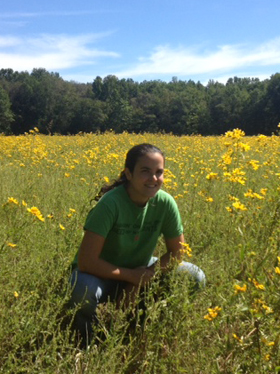 Hello all! Jersey Farm Scribe here. Last time we talked I was giving you my take away on how to Attack a Conference. I promised I’d tell you some of the specific, tangible things I learned at the NJ SCBWI.
Hello all! Jersey Farm Scribe here. Last time we talked I was giving you my take away on how to Attack a Conference. I promised I’d tell you some of the specific, tangible things I learned at the NJ SCBWI.
So here is one of the biggest:
Pitch/Concept
It seems so simple. But I hadn’t thought of it like this before.
Pitch IS Concept.
I took Jill Corcoran’s workshop on concept and selling through to readers. I wasn’t sure what I expected, but I knew Jill is revered for her grasp of plot and revisions. I’ve been over her website A Path to Publishing, quite a few times, and gotten invaluable information from her blog, so I was ready to see what she had to say in person.
One of the first things that struck me was how interchangeably she seemed to use the words “pitch” and “concept.”
To me, pitch was what you practice saying over and over to be prepared to present my idea to one of the editors and agents walking around. It was what I put in the beginning of my query letter. That elevator, two or three sentence wrap of what my book was.
Concept was…. actually, to be honest I hadn’t really thought about it.
As Jill said in the workshop, and as she explains in the beginning of her free video on PlotWriMo (Revise your novel in a month), the CONCEPT is how you’d convince someone to read your book.
Okay, so that means it’s what’s the book about, right?
Well… yes and no.
If I want to go see a movie, and I have to convince other people to want to go see it, what would I say? What makes it special? What draws me to want to see it? Why should someone else want to see it?
That’s more than going over the plot. It’s more than what happens, or who the main characters are. It’s what gives the movie meaning, substance, interest and originality.
And that’s not easy to do in a few sentences!! As Kathy has said, write it all out first. go back to cut and condense.
But how do we know if we’re cutting the right things?
In the workshop, a few of us read our “pitch” to Jill. And a common theme in her response was, “You’re not really TELLING me anything. I know you think you are. But you’re not.”
A lot of it came down to specifics. The pitch has a reader. That reader needs to know what’s going on. It’s a book about heroism! Great. But how so? The kids are going to save the world? Excellent. But WHY? What’s wrong with the world in the first place? Shelby finds herself confused and alone. Okay. But why? And who isn’t? So what’s so special about her confusion?
So how to attack punching up the concept/pitch? I learned to do three things:
1) How will a publisher SELL the book? I hadn’t really thought about this before either. At all. It was especially meaningful for me, because I have a chapter book with a surprise ending. Sure, a surprise can be great. But TOO much surprise makes for a pretty weak back flap on the back of book! How do you sell that?
I don’t want a publisher sitting there thinking. “Yeah, it’s great. But I can’t TELL potential readers why it’s so great or else it’ll ruin the whole thing!”
You’re looking for a pretty serious commitment from someone, whether it’s an agent, editor, publisher, or even the final buyer of the book. Whatever is going to make them go: THIS IS IT! This is the next book I want to my devote time and money to! That’s your concept. That’s your pitch.
Then it’s time to examine it closer:
2) One line at a time:
I read each sentence of my pitch at a time. Then ask myself, WHY?
Four fearless friends save a town from despair.
Okay. There is some element of plot in there. But honestly, the fact is, there is probably millions of stories this could be describing. So let’s see… why? Why do they do it?
What drives them to do it? How much despair are we talking about? Can I express that level of despair in just a few more words?
3) One WORD at a time:
Once I have the sentences I want to say on paper and I’m confident with WHAT they say, it’s time to look at HOW they say it. Am I using the right words?
We only have so many words we get to use in a pitch. And let’s be honest, as someone brought up in the comments of my last pitch, being specific leads to a longer pitch. It’s just a fact. So every word is even more important. Let’s look at the beginning of that same line:
Four fearless friends…….
Four: Does it really matter that there are four of them? Probably not. Maybe I can replace it with something more meaningful.
Fearless: Really? I couldn’t have done better than that? How did I ever think that sounded good?
Etc….
Every single word gets analyzed, condensed, replaced, sometimes even re-envisioned entirely, which ends up leading me back to step one and starting all over again.
Pitch.
…….Sigh. It’s definitely not my favorite part of the process.
But Jill’s workshop really made me feel like now, I have a plan of attack, a process, specific, tangible things to look for, to look at and to strikethrough.
And again, you know I’m a big believer that, well…. our manuscripts are worth it!
Thank you Erika for another great article to help all of us improve our skills.
Talk tomorrow,
Kathy
Filed under:
Advice,
article,
demystify,
How to,
Process,
Writing Tips Tagged:
Erika Wassall,
Jill Corcoran,
Path to Publishing,
Pitch is Concept 


By: Kathy Temean,
on 6/13/2014
Blog:
Writing and Illustrating
(
Login to Add to MyJacketFlap)
JacketFlap tags:
Tips,
picture books,
inspiration,
Technology,
Advice,
Process,
illustrating,
Buenos Aires,
demystify,
Illustrator's Saturday,
Marcelo Elizalde,
Add a tag
 Marcelo Elizalde was born in Buenos Aires, Argentina, in 1953. He is a self-taught, dedicated children’s books illustrator.
Marcelo Elizalde was born in Buenos Aires, Argentina, in 1953. He is a self-taught, dedicated children’s books illustrator.
At school he considered his drawings as average, but his peers and professors saw a difference that he hardly acknowledged. What really differenciated him from other children was his rather excessive love for cartoons and picturebooks. Pictures, especially those intended for children, made him dream of something that he could not fully understand.
In Argentina he contributed to the most important publishers of books and magazines, and after the year 2000 he started to work for abroad. He began by Spain, but soon he added clients in the USA, Korea, Sweden, Canada and other countries.
A few years ago, he started teaching Children’s Books Illustration at the main art school in Buenos Aires, what made him review all he knew about the craft and conceive a conceptual basis for a criticism of the images intended for children. He is nowadays writing a book about the subject, that has his mind in a state of continuous bubbling, which he says, “makes him look a little absent-minded, or deranged, if you will.”
HERE IS MARCELO:
I work with an iMac 21.5″, 8Gb RAM, OS Mavericks; an Intuos 4 graphic tablet, and an Epson V500 scanner.
The application is Photoshop CS6
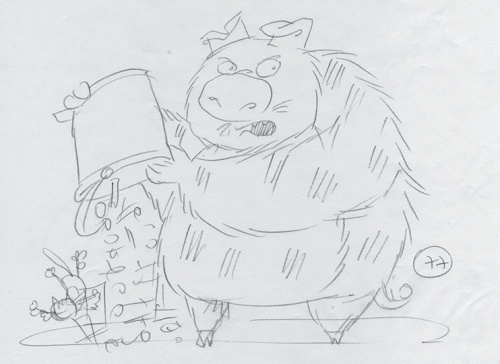
Step 1
I very rarely draw directly on Photoshop. I feel that the tablet has this limitation and that I cannot move my hand with grace to set the first ideas on paper. There are some illustrators who do not start in paper, to whom I strongly recommend to use the pencil. The sketch comes out faster and dances better.
I sketch on a light semitransparent paper that lets me trace and refine the sketch. When I have it as I wish, i.e. precise where I need and loose where I am more confident, I scan it to 300ppi.
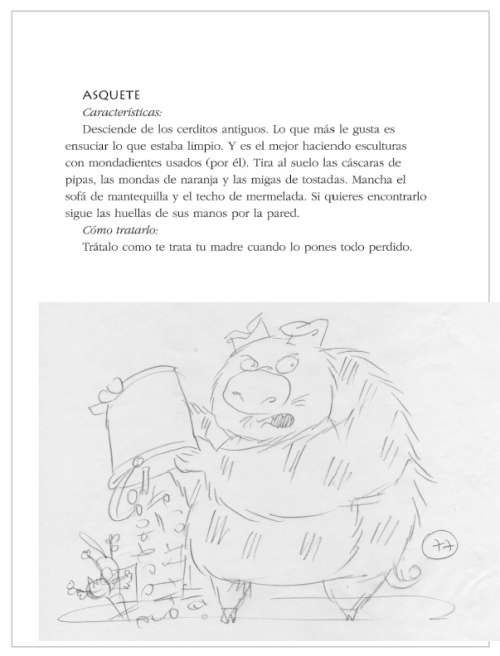
Step 2
I always work upon the very layout, to be sure that the image is always in place in relation to the whole graphic space. When needed, I do it on the spread, so that both pages talk smoothly-or at least not fight to death. For that, I open the PDF of the layout as individual PSD files and save them in this format. I paste the scan of the sketch and put it in place and resize it if needed.
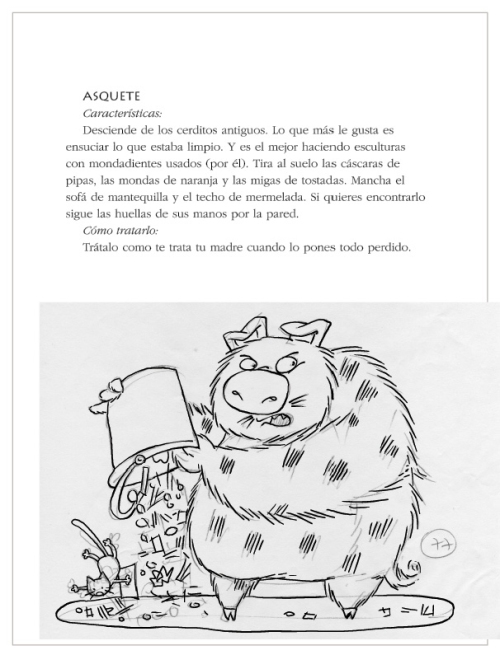
Step 3
I open a new layer, fill it white and reduce its transparency to a value that lets me trace the drawing with a black common round brush.
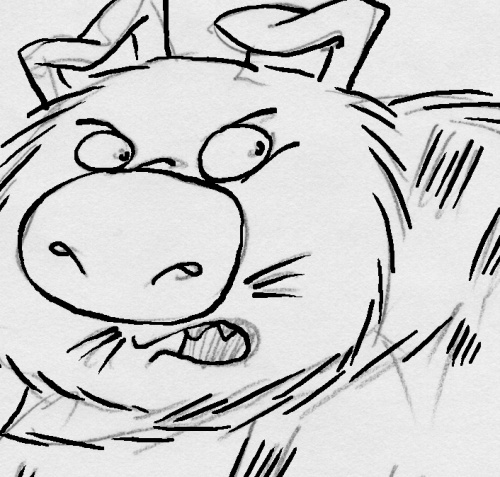
Step 4
I put a special attention in refining these lines so they have movement and profile and they don’t appear blunt or clumsy. I think that every bit of the illustration must have a beauty of its own and not depend on fellow sectors to look good.
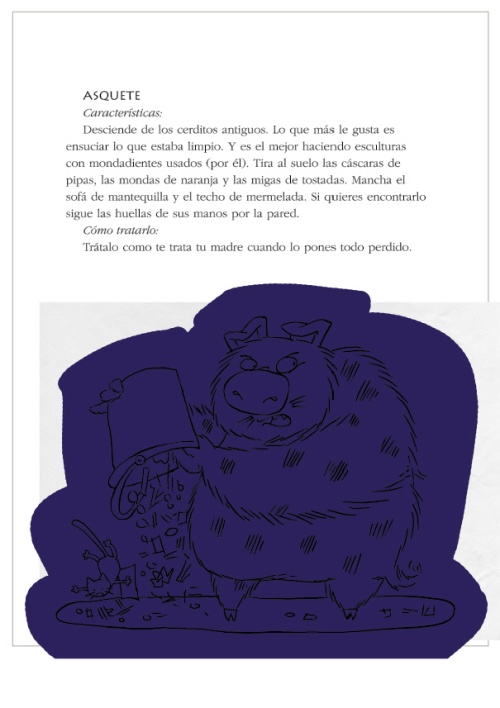
Step 5
When I´m done with the black lines, I open a new layer below this one and set a background. It can be any color, as long as it is dark enough to be visible when I “paint” the subject. I prefer dark blue, or red, or an earth hue.

Step 6
In the times when the capabilities of Photoshop to build brushes was very primitive, I made this one up for very general painting purposes. And albeit I now have a box full of gorgeous brushes, I still use this one from time to time. I named it “Ancient” in the brush presets box.
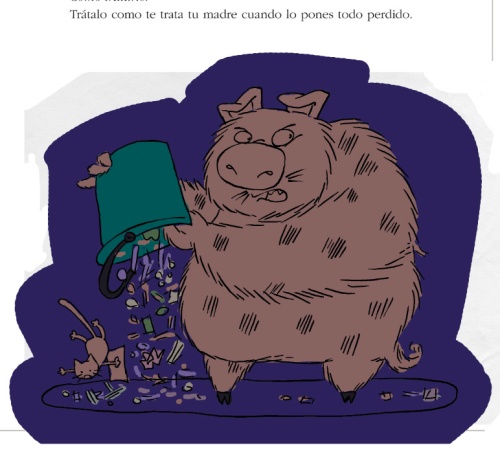
Step 7
Between the blue Background layer and the black line layer, I open a new one and I paint a background that will belong to the subject and that will give it the desired general hue. I chose a brownish color and set the layer to 50%. This I do so as to help the image have a chromatic coherence, as if working with washes of paint.

Step 8
I start the always uncertain process of applying color in steps, using the Ancient and varying the transparency with the pressure of the pen. First darker colors, then the lighter.
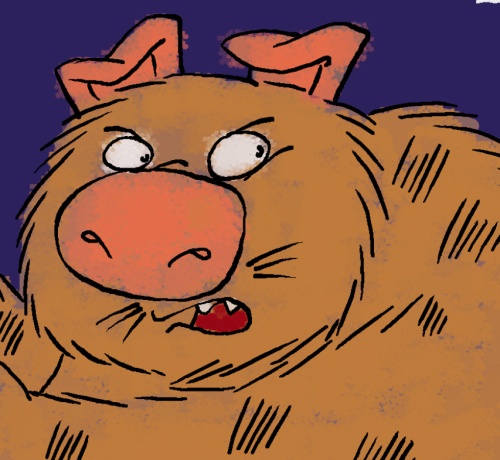
Step 9
I keep on applying layers of “paint”. You can see the blue background a little through this layer. It may not look like very important, but try otherwise and the difference will be huge.
The application allows me to go back some steps and retry and again and so forth. Luckily, you can’t see my doubts here. See that the borders f the paint are slightly loose with respect to the outline.
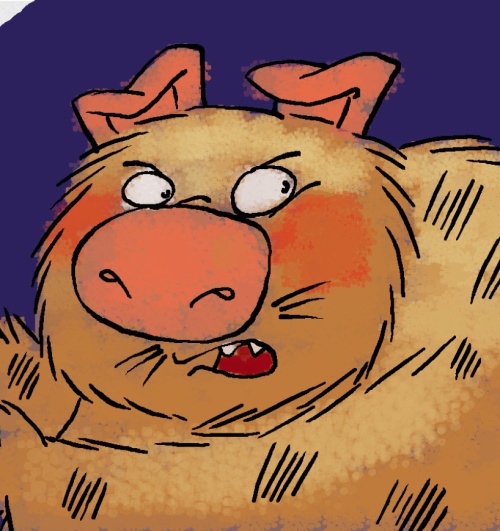
Step 10
I apply the lighter color in the illuminated parts. By default, I make the light come from above to the left.
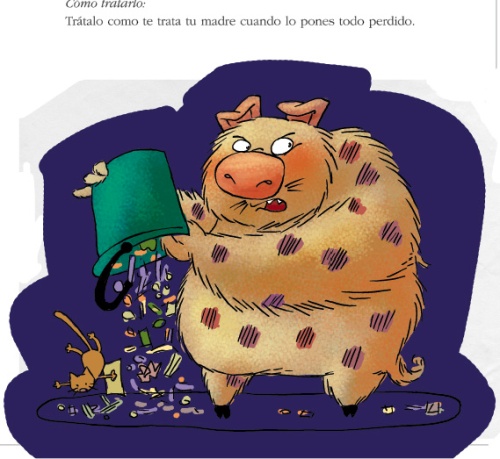
Step 11
I continue with the other subjects and objects of the scene.
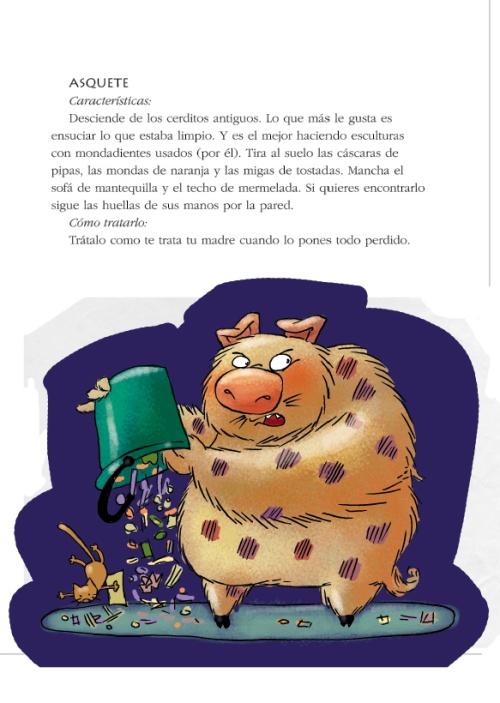
Step 12
Added the color to the ground that the subject is standing on. I apply, always in a separate layer, the highlight, generally in white.
I do it in a separate layers so as to control the intensity by varying the transparency of the said layer.
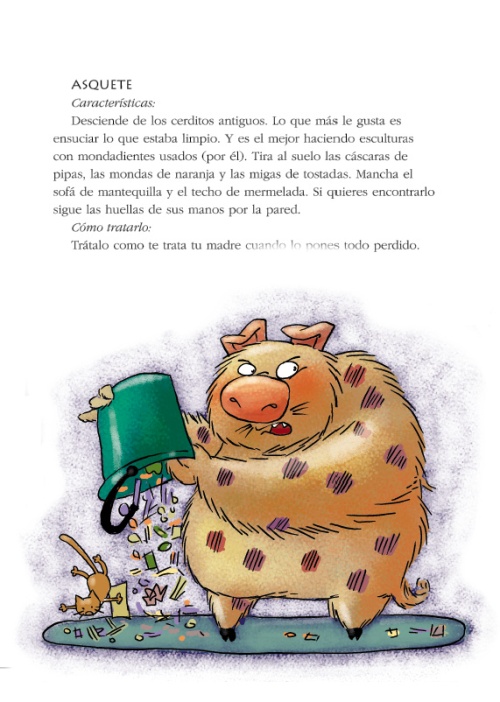
Step 13
I open a layer above the blue background and, using again the Ancient, I proceed to “smudge” it to produce a soft, textured new background, suited especially for illustrations that either don´t need a scenery or are requested as standing alone in the blank of the page.
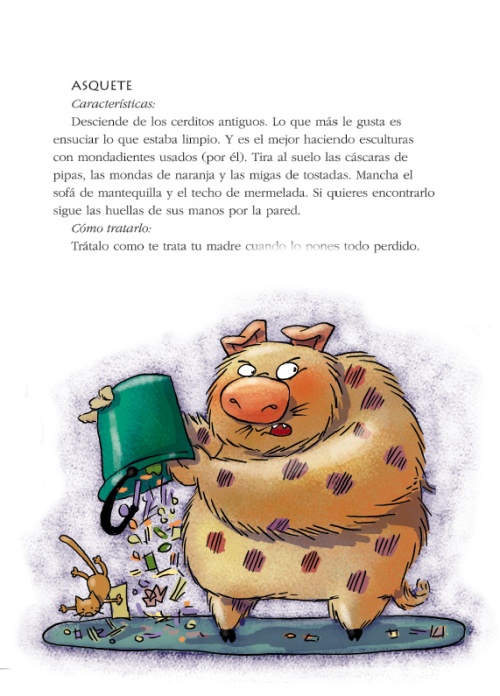
Step 14
Finally, I apply the heavy Shadows layer. For that, I open a new one and set it in Darken mode, 25-30% opacity. Then I (usually) draw flat shadows with blue C100 M100 Y0 B0.
I set it in Darken mode so the details underneath are not painted over but are modified as if under a shadow. I change the transparency according to the color of the subject and the need of stress or character.
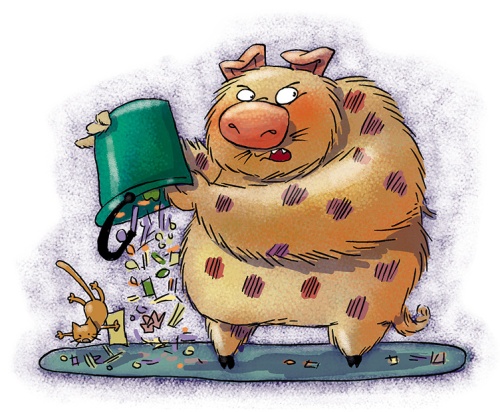
Step 15
This is the final picture as I give it in. CMYK, 300ppi, TIFF format.
I hope you like it.
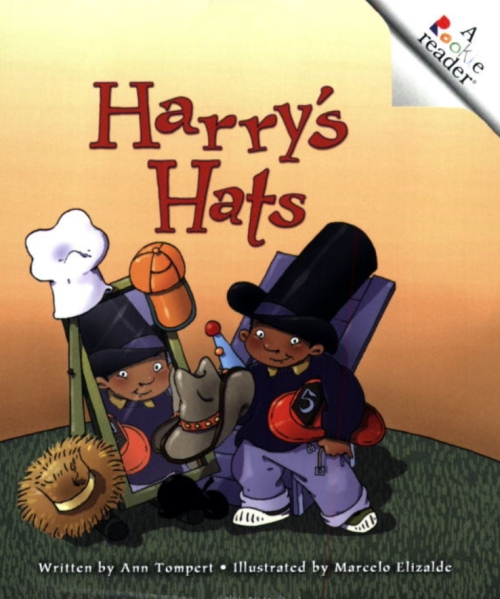
How long have you been interested in art?
I was the “artist” of the family, albeit no one knew what we actually meant by that. It was easy to see that I would drop out from any technical career, which I did.
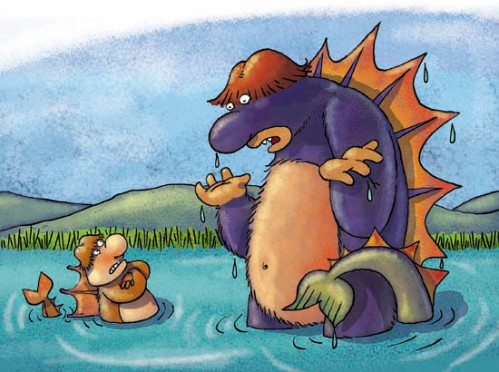
Did you study art in college? If so, what college did you attend and what did you study?
I assisted for less than a year to the Escuela Nacional de Bellas Artes (National School of Fine Arts) in Buenos Aires. In those days the syllabus was very good but rigidly classical, and Illustration was a very, very bad word. Everyone liked what I produced, but it was just illustration or it looked like such. Nobody knew what to answer to the question “So, what?”. I dropped out and went back home to teach myself.

Can you tell us a little bit about the classes you liked?
I liked especially Sculpture and Engraving, partly because the professors were very talented and open minded, and were of the idea, which I learned then, that you must try to master the technique to liberate yourself from material burden as much as possible. Their message was “do what you want, not what you can“. I forgot about Gravure, but Sculpture is still a blissful place where I want to get someday.

What was the first painting or illustration that you did for money?
The very first were a couple of single-panel cartoons for a sailing magazine. They were funny and I still like them.
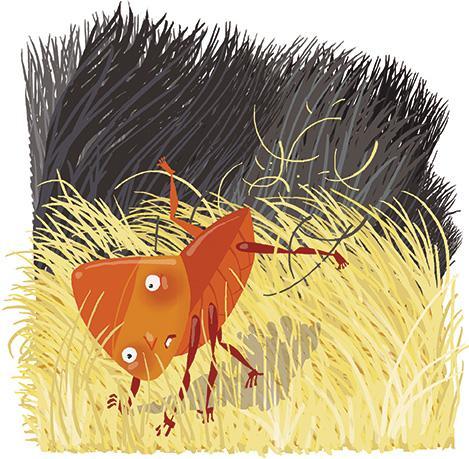
What type of job did you do right after you graduated?
I did not graduate, as I said, and the things that I did one can hardly call them a “job”. My career started out in the wilderness.
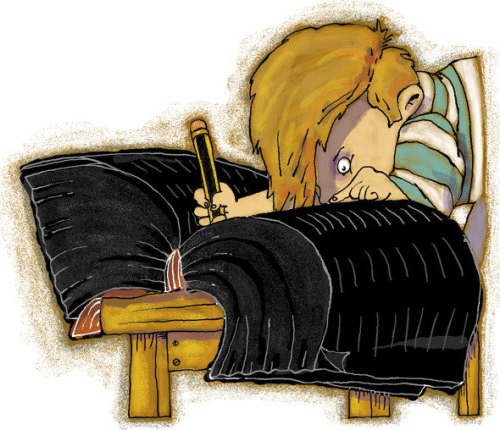
How and why did you start going digital with your art?
In the 90s I contributed to a magazine –that was the dream-come-true of my childhood– and for production reasons they encouraged us illustrators to switch to working with computers. I like gadgets, so I bought a Mac and all the peripherals one Friday, a friend helped me plug everything correctly on Saturday and Monday evening I was giving in my first digital illustration. I felt like I had been illustrating in Photoshop for years and that I could finally perform things that were impossible with traditional materials.
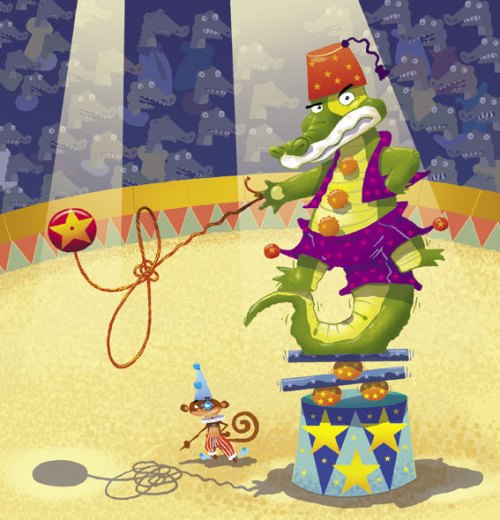
Have you always lived in Argentina?
Yes, except for a 6 month stay at Bogotá, Colombia. I moved with the idea of settling there, availing a publishing boom, but I soon found out that it didn’t smell like books but rather just like paper. That was a vaccine against any will to migrate.
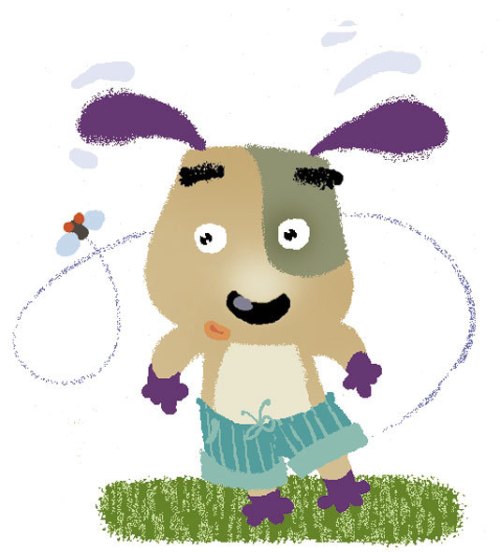
What do you think influenced your artistic style?
I have a straightforward and humorous approach to my subjects, and that I learned from Sergio Aragonés, a Cuban cartoonist that did the little drawings in the corners of Mad magazines. He knew everything about producing funny situations in black and white ink thumbnails. I also learned a lot with Richard Scarry, who conveyed humor and expression to his very simple animal characters. And for the image itself, I always loved and longed for the illustrators of the 50s and 60s, like the Provensens or Celestino Piatti or my compatriot Ayax Barnes, among many others.

What was your first big success in illustrating?
In Colombia I illustrated a cookbook for children produced by Nestlé (the swiss dairy company) to be distributed to supermarkets that sold hundreds of thousands of copies. But this I learned when I was back in Argentina, so nobody even patted my shoulder for that.
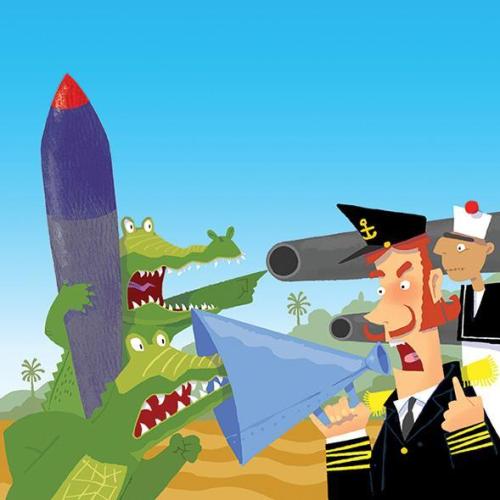
When did you decide you wanted to illustrate for the children’s market?
Nearly always, or at least since I was 17. The trouble is that I didn’t know then that that was called illustration and that doing it for children was a specialty in its own right. I always wanted to produce the kind of images that I saw in the books I read.
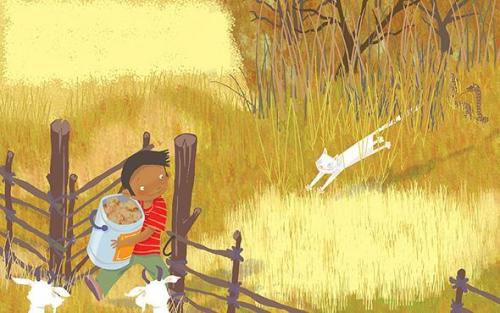
When did you do your the first illustration for children? And what was it?
In a sense, when I was 17, an age that I mentioned before, and it was in the most direct and brutal manner.
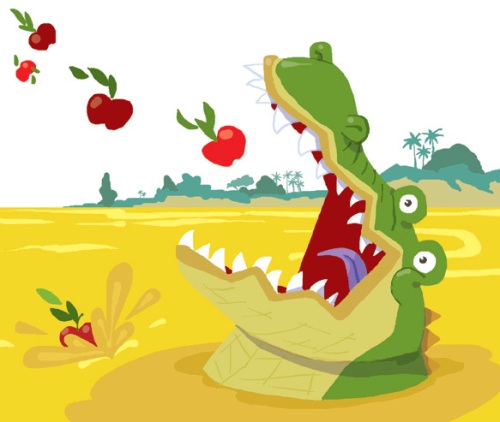
How did that come about?
I assisted to a secondary school where they thoroughly taught us English language, and the last year we had to make teaching practices within the school, to primary pupils. My first assignment was a first grade, Friday afternnon, last hour; the worst possible combination. To make things harder, the teacher was very beautiful and we were all in love with her.
The subject was The Farm. I could neither refuse nor desert so I produced a series of cutout animals and people and farm objects that the little demons had to stick to a big paper with background field and sky. Though I made this up the night before, the lesson was such a success that I could have the children quiet for 15 minutes. The cutouts were much admired and I thought “Where did this all come from? How could I do it out of nothing?” It took me ten more years to find out.
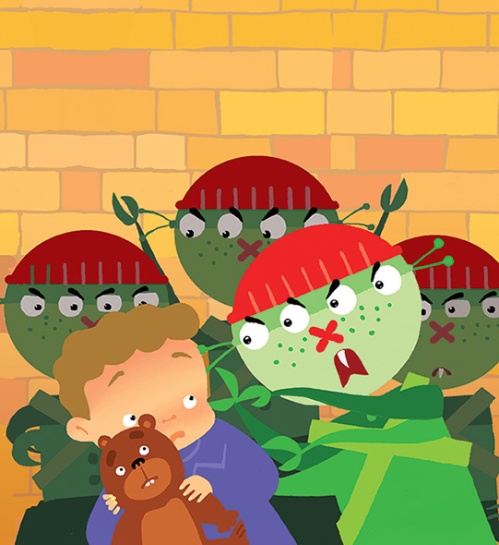
Do you have an agent to represent you? If so how did you connect? If not, would you like one?
I did have one in the UK, but it didn’t work. I would like to have one. There should be agents to get you an agent. An Uberagent.
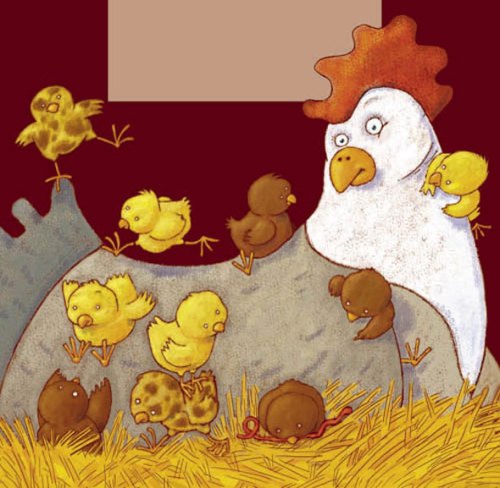
I see a few pictures that look like you sculpted a character. Is this something new you are trying out?
I started that back in 1995, blending my untested talents in sculpture and my profession. I did some works with clay, and I even took my models (yes, the very models) to the Bologna Book Fair in Italy, where I got much praise, but no assignments. The market for such technique is very, very small, as one can see in any bookstore. Anyway, my models availed me interviews at Aardman, the makers of the Wallace and Grommit series, and in the Spitting Image studios, both in the UK.
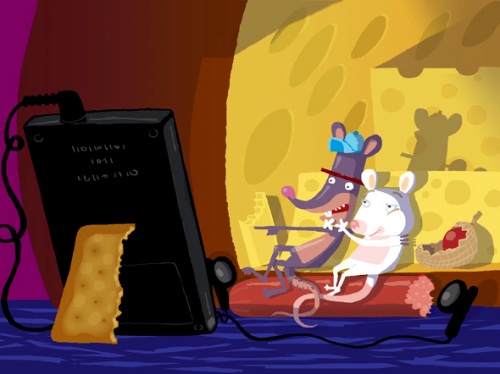
Have you published with any USA publisher? If so, who? And how did you get the contract with them?
I attended the SCBWI’s Winter Conference in 2001, where I made good contacts, particularly with Don Curry at Mondo Publishing, from whom I got my first assignment in the USA. Then came Innovative Kids, MacGraw Hill, Scholastic, Meredith, Klutz, and some more. I was assigned very interesting projects that I enjoyed a lot.
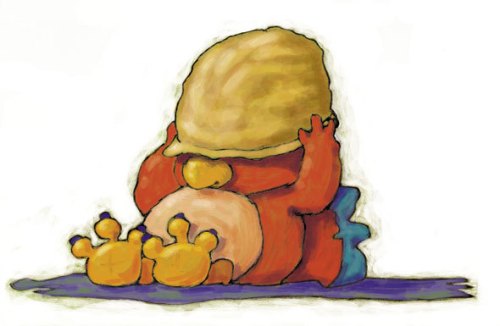
Do you have any desire to write and illustrate your own book?
Oh, yes.
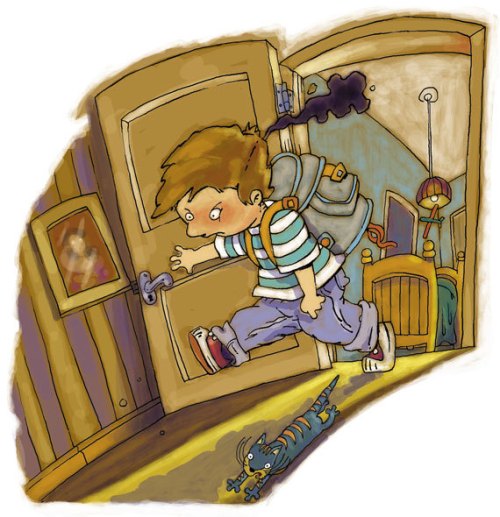
Are you open to illustrating a picture book for a self-published author?
As long as they pay me my fees, yes, why not. I stumble from time to time upon a request of this kind, but I couldn’t so far find out why these authors assume that you will do it for free, for the glory of it or for an uncertain future reward.
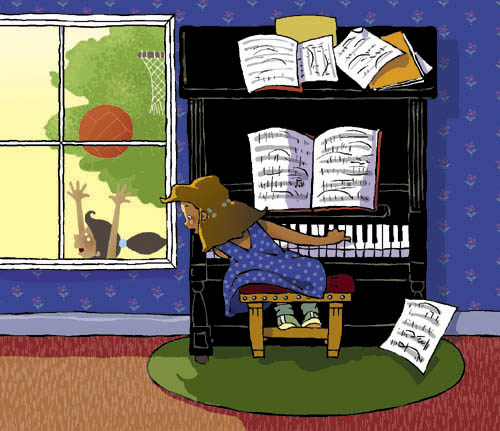
Have you worked with educational publishers?
Yes, and I particularly enjoy illustrating impossible books, like math books, and make of them a thing worth seeing. So much so that educational publishers in Argentina used to call me when they had one of those unillustratable books. This is where I apply what I learned from Sergio Aragonés.

Have you done any illustrating for children’s magazines?
Yes, and I am currently contributing to one. But for many years I illustrated for the magazine that I (and everyone else in Argentina and the region) read when I was a kid. That is a badge that still makes me proud. I also worked for newspapers, both for children and adults. I particularly enjoy this kind of quick, concentrated effort, where you have one or very few shoots to make a story. You have to be very efficient.
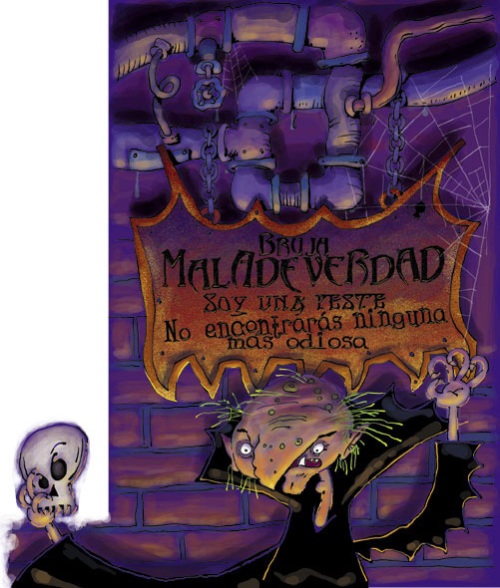
What types of things do you do to find illustration work?
My repertoire is a little limited. I have a subscription to Children’s Illustrators, and I mail the news about my recent work to clients. In fact, I concentrate my efforts in keeping my clients rather than go hunting new ones. That’s not for mere conservatism but simply because I don’t have a bold strategy to do otherwise.
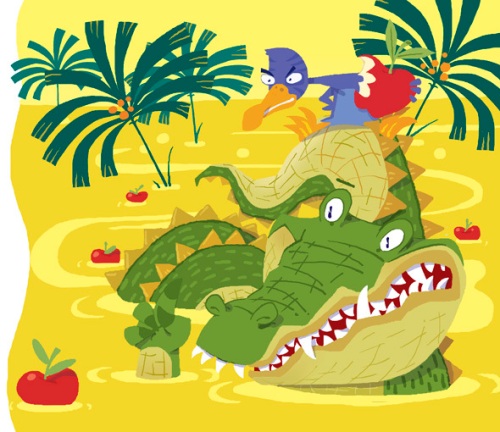
What is your favorite medium to use?
Apart from the computer I love gouache. I started my career with that medium and it made a deep impression in my style. If you look at my pictures you will see that many of them imitate that juxtaposed color planes mode, as if it were gouache. I like the smell of it, too. And I have an unconditional love for the common, old black graphite pencil of eternity.

Has that changed over time?
As I said, I started with gouache, but then I tried everything else. Watercolor, acrylic, color pencils, pen & china ink, crayons and pastels, paper cutouts, plasticine, collage and I even tried baked dough (It didn’t work).
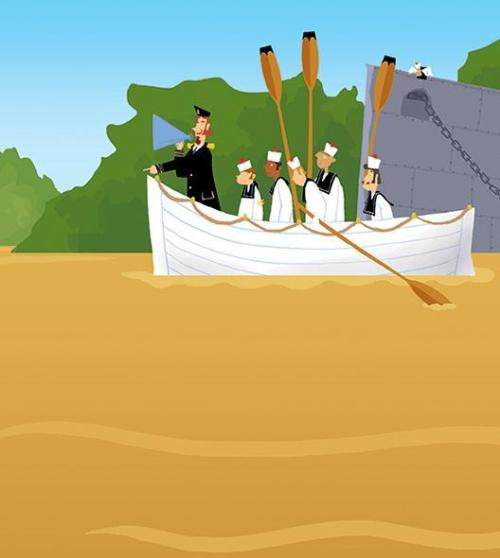
Do you have a studio in your house?
Yes, habitually. Not in this very moment. To have the studio at home is both a blessing and a curse, but I have decided long since that it is much more the former than the latter.
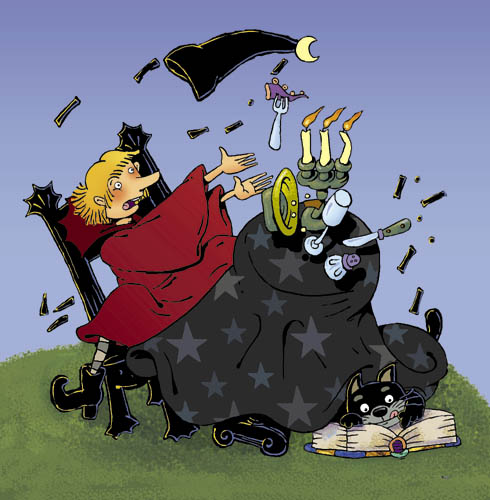
What is the one thing in your studio that you could not live without?
The radio.
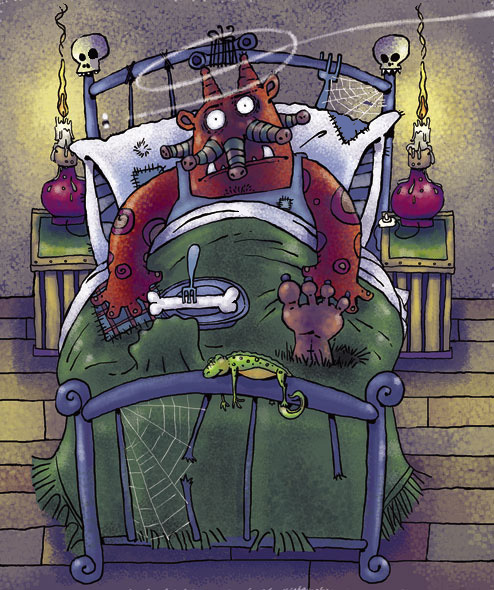
Do you try to spend a specific amount of time working on your craft?
No, I’m not that disciplined. I am a very curious person and i have a lot of interests that claim for their share of my time. I am disciplined to meet deadlines, though. As writer Douglas Adams said, “I love deadlines. I love the whooshing sound they make as they fly by”.

Do you take pictures or do any types of research before you start a project?
Yes, but to a certain point. My style does not support much documentation. It becomes very evident when I stick too much to researched images. Anyway, I do google my subjects, be it a rhinoceros or an airplane, but I usually make it just to avoid horrible mistakes or pick features that will enhance the result.
I have very seldomly taken photographs as documentation. When there was no internet, I used to go to the zoo and take some pictures when I couldn’t find the angles that I needed. Now you type “mouse-deer” and you have loads of photos to choose from.

Do you think the Internet has opened doors for you?
Not doors but gates! I could write an essay on the favorable changes that the internet brought to my work. It added extra dimensions to the creative process, the professional life, the research, the relation with colleagues, the access to other illustrator’s work, which was very limited before; the delivery of the pictures, the invoicing, the wiring, the meeting of new people from everywhere. I just cannot remember how it was to finish the work, tidy myself, dress up and go bring it to the editor. Do you remember?

Do you use Photoshop with your illustrations?
Yes. I love it. They made it thinking of me. Anyway, I would love to meet the crew someday and tell them a couple of things!
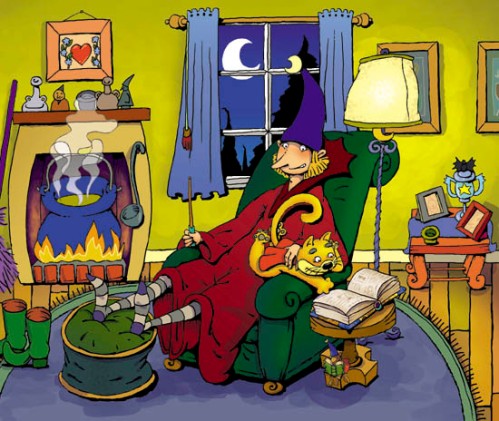
Do you own or have you used a Graphic Drawing Tablet in your illustrating?
After my first month struggling with the mouse, my Mac dealer called me and said “You should try this”.
First comes my right hand, second my Wacom, then my left hand.
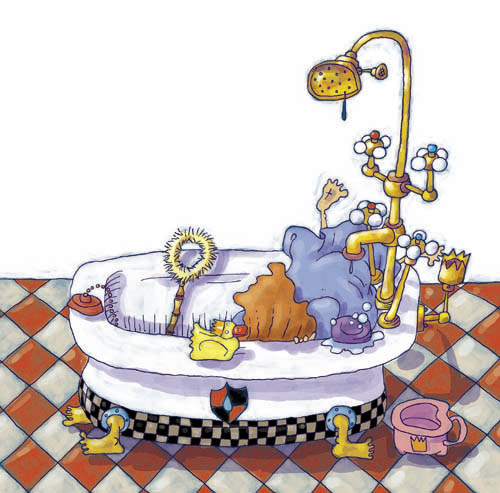
What do you think is your biggest success thus far?
I didn’t have any big successes that I can think of.
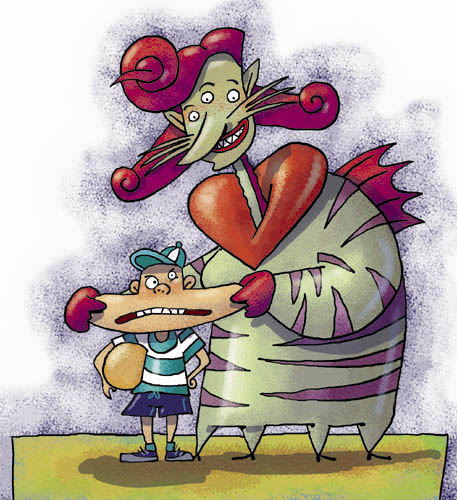
Do you have any career dreams that you want to fulfill?
I am currently finishing the research for a book I want to write about illustrating for children. Not about technique nor professional development, but about the essence of what we do. I want to give an answer to the question “What is it that we do? For what?”. I never heard of a good answer to that. I think that in reality nobody knows. Well, I think that I am slowly coming to the point and I will struggle to publish it. That is my dream.
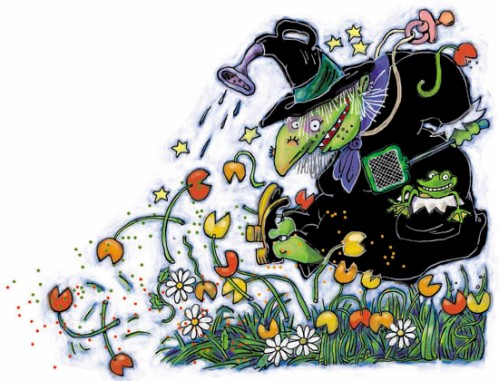
What are you working on now?
I´m illustrating the second batch of a series of books whose translation would be The Jungle Gang, obviously about the adventures of a group of animals. They are coming out funny.
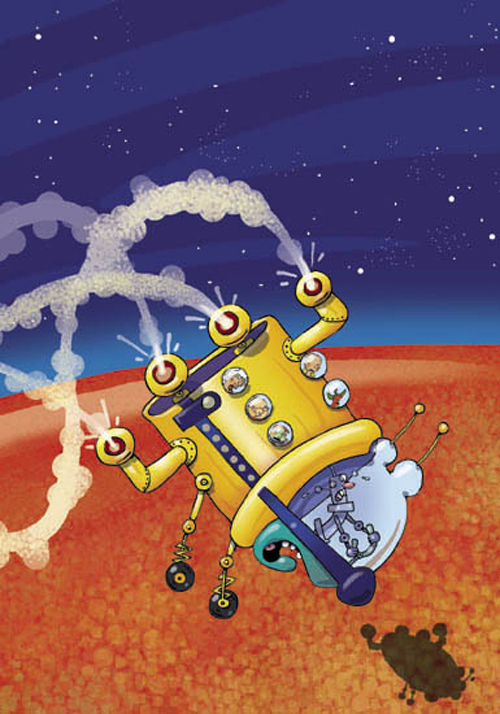
Do you have any material type tips you can share with us? Example: Paint or paper that you love – the best place to buy – a new product that you’ve tried – A how to tip, etc.
Always buy the best material that you can afford. Saving in this matter is like bandaging your fingers, or maybe banging on them.

Any words of wisdom on how to become a successful writer or illustrator?
I use to say that I had to navigate my profession looking at the stars. Now, the young illustrators have their GPSs –the internet is one of them– and there are tons of advice everywhere. But there’s one thing that I try to never forget, and that is the children; the children that see my pictures and incorporate them along with the story, and feed something into their minds, or hearts, or souls. In many parts of the world (not in the USA) the child as a viewer is being neglected and the images are becoming cold and distant, as if intended for adults, more concerned about the aesthetics of the matter than the emotions one has to help express.
To say that I mind the child within me is too commonplace and expresses nothing. I’d rather say that I work for the real, average child out there.
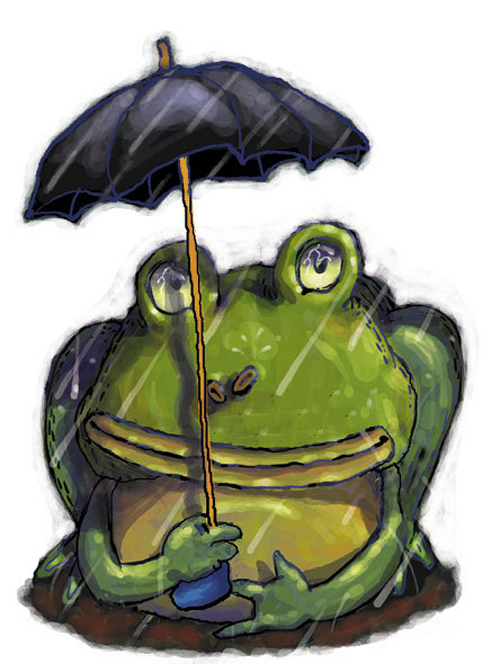
Thank you Marcelo for sharing you process, journey, and expertise with us. I know you will have many more successes in the future and we would love to hear about all of them, so please drop me a line when good things happen.
To see more of Marcelo’s illustrations you can visit him at: www.marceloelizalde.com.ar Please take a minute to leave a comment for Marcelo, I know he would love to heard from you and always appreciate it. Thanks!
Talk tomorrow,
Kathy
Filed under:
Advice,
demystify,
illustrating,
Illustrator's Saturday,
inspiration,
picture books,
Process,
Technology,
Tips Tagged:
Buenos Aires,
Marcelo Elizalde 


By: Kathy Temean,
on 5/31/2014
Blog:
Writing and Illustrating
(
Login to Add to MyJacketFlap)
JacketFlap tags:
inspiration,
Process,
How to,
Study Guide,
demystify,
Wheels of Change,
Darlene Beck-Jacobson,
Study Guide Example,
marketing,
Writing Tips,
Add a tag
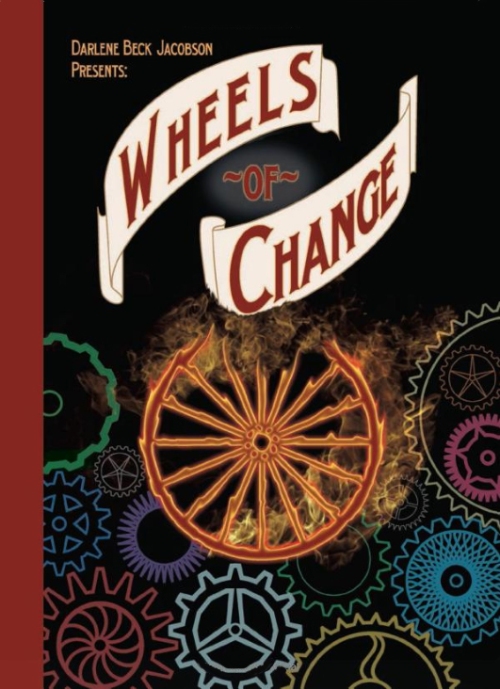
WHEELS OF CHANGE STUDY GUIDE
- Change is the overriding theme of this novel. Discuss good vs. bad change and how the characters accepted or rejected change. CCSS RL 4.9
- How did Emily’s ideas about change evolve throughout the story? CCSS RL 3.3
- What does the horseshoe symbolize? Do you think it really had power? Explain. CCSS RL 5.4
- Do you think Beatrice’s personality and behavior are her own or as result of trying to please her mother? CCSS RL 3.3
- What characteristics made Charlie a good friend for Emily? Vice versa. CCSS RL 3.3
- What do you think of Emily’s reaction to Mrs. Peabody’s comments at the tea? Was Emily justified in dumping tea in Mrs. Peabody’s lap? Explain why or why not. What would you have done? CCSS RL 4.3
- 1908-09 was a time in history when segregation was common. Do you think Mr. Soper was courageous in employing an African-American? Explain. CCSS RL 3.3
- Was life easier or harder in 1909? What did you like about the time period?
- The roles of males and females were more sharply divided in the early 20th Century. Do you think Emily’s resistance to learning proper lady-like behavior was typical for girls her age? Why or why not? CCSS RL 4.3
- How did Emily’s relationship with Mama change? CCSS RL 5.2
- The story takes place when there were fewer luxuries in everyday life – especially regarding entertainment. What would you do if you had no radio, television, telephone, electricity or car, like most of the people in the story? CCSS RL 4.9
- Learning skills and being self-sufficient was important during this time in history. Why? Do you think these values are still important today? Explain.
- Emily and Charlie were expected to help the family by doing daily chores. If they weren’t completed, the household and family suffered. Does your family depend on you to do certain jobs? What would happen if you didn’t do them? CCSS RL 4.9
- What did Emily expect President Roosevelt to do for Papa? CCSS RL 4.3
- What did you think of Emily’s suggestions for changing Papa’s business? What might you have done to help? CCSS RL 4.9
- Do you think it was foolish or brave of Emily to stay in the barn during the fire? What would you have done? CCSS RL 3.3
- There were limited opportunities for women at the turn of the 20th Century. Single women who were not from wealthy families could teach, work long hours in a factory under awful conditions, or work as maids, governesses, or servants to wealthy families. Once married, they were expected to stay home and care for their husband and children. Do the opportunities enjoyed by women today make their lives easier or more difficult? Explain. CCSS RL 4.9
- When Mama first meets Mrs. Jackson, they seem ill as ease with one another. Why? CCSS RL 5.2
- Do you think it was unusual for Emily’s best friend to be a boy? Why or why not?
- If the story took place today, do you think it would be easy for a girl to become a blacksmith? Explain.
Hope this gives you some ideas of how proceed when you publish your book.
Talk tomorrow,
Kathy
Filed under:
demystify,
How to,
inspiration,
marketing,
Process,
Writing Tips Tagged:
Darlene Beck-Jacobson,
Study Guide,
Study Guide Example,
Wheels of Change 


By: Kathy Temean,
on 5/15/2014
Blog:
Writing and Illustrating
(
Login to Add to MyJacketFlap)
JacketFlap tags:
Agent Marie Lamba,
inspiration,
Advice,
revisions,
authors and illustrators,
opportunity,
demystify,
First Page Critiques,
Free Fall Friday - Results,
Add a tag

I want to thank Agent Marie Lamba from Jennifer DeChiara Literary Agency for taking the time out of her busy schedule to critique 4 first pages that were sent in for May. Having her share her expertise is a huge help to all of us.
QUINLAN LEE, Agent, Adams Literary will end MAY with her four critiques posted on May 30th. Deadline to submit: May 22nd.
Here are the Results:
Jennifer Kirkeby / PEACEFUL ACRES / YA Magical Realism
“David, we’re here.” The voice jolts me awake. The bus driver’s eyes stare back at me through the large mirror they always use to catch kids smoking, eating, making out, or punching each other. Her eyes are glassy and tired with dark bags hanging underneath them as proof. Must have been a long drive. Below the mirror swings an assortment of crucifixes that she begins to untangle.
I wipe the drool off the side of my mouth and scan the inside of the bus. I’m three rows back on the right side, and unless someone’s sleeping in one of the seats, the only passenger. Weird. I look outside to my right, and am surprised to see a huge white mansion. Gardens out front, a gigantic fountain – real Great Gatsby stuff. Squeezing my eyes shut, I shake my head trying to rattle my brain cells into functioning order to tell me where I am. When I open them, I have a vague memory of going somewhere to do community service.
“Do you need help with your bags?” the bus driver asks while rubbing the back of her sizable neck.
“Uh, no. I got it, thanks,” I tell her, while looking around for my stuff. Noticing my confusion, she points to the floor under the front seat where I see my suitcase and backpack. Guess I’m staying a while. When I stand up, my body alerts me that I’ve been sitting forever. My legs practically fold underneath me, my muscles hurt, and my head throbs. I slide my bags out while the driver opens the door. The swooshing sound is like a giant vacuum seal releasing me into the unknown.
“I’ll see you in six months, David. Stay strong.” My stomach drops. Six months? Her eyes are apologetic. In seconds, her face shifts to genuine concern, and then… is that fear? What does she know that I don’t?
HERE’S MARIE’S THOUGHTS:
PEACEFUL ACRES
This first page raises lots of questions for the reader, which is always a good thing. It makes me wonder where he is and why? What will happen next? That’s the sort of thing that might make me want to read on. The other piece of that “want to read on” puzzle consists of character. Who is this character? Why might I care or worry about him? Get that right, and you’ll definitely have me on board to continue.
But in this first page (which, I realize, is just ONE page), I know far more about the bus driver and the setting than about the boy. So make sure your focus in this scene is where you truly want it to be.
The boy’s character is starting to be revealed when he describes the mansion as “real Great Gatsby stuff” – I like that. That’s the sort of detail seen through the character’s eye and said in his voice that not only reveals what he sees, but starts to reveal who he really is. I’d love to see more of his point of view.
First person can be tricky. It results in lots of “I” sentences. I wipe the drool… I look outside… I slide my bags… Make sure you vary your sentence structure throughout, or this will grow tiresome quickly. Also, once you’ve quickly established that something is in first person, you don’t have to say “I look outside to my right…” Just say, “Outside to my right…” He’s your point of view character, so how else would he see that? You can pull out most, if not all, of the “I see” and “I look” and “I notice” in a story by keeping this in mind. Also try to avoid phrases like, “When I stand up, my body alerts me…” Instead, consider something more direct like, “When I stand, my legs practically fold underneath me…”
My favorite line in this is: “The swooshing sound is like a giant vacuum seal releasing me into the unknown.” It’s a great lead in to a mysterious tale.
_______________________________________________________________________________________
GAMBLER’S DAUGHTER, YA Novel, by Orel Protopopescu
PART ONE: January, 1968/ Chapter One
Six days out of seven, I didn’t know if my father would come home. Sometimes he stayed in the city, gambling, for three nights in a row, nights I was often alone in our house on the edge of a parkway in the middle of Long Island. But every Friday evening he met my train at Penn Station, took me to his club and some place for dinner, and then drove me home by dawn. This routine was my idea. One day a week, at least, I knew that he’d quit before the sun came up, no matter how much he’d lost. One day a week, we’d share a meal and a few laughs.
Plenty of girls would think I was lucky to be so free, those who didn’t know what it was like to be your own mother and father. They’d probably never met anybody like my dad, who’d let me do as I pleased since I was fifteen. If he ever found me in bed with Jimi Hendrix and his guitar, he’d just ask Jimi, politely, if he would play us a song. But my Jimmy wasn’t singing to me, unless you count choir practice, when he sang for everyone and no one. He wasn’t even talking to me anymore, so there was little chance of him ending up in my bed and there was nobody else I wanted to share it with. The world was full of boys and men, but I only longed for a boy who wasn’t even a friend anymore and a father who was almost never home.
It could have been worse, I told myself. Some kids were orphans, living in shelters, foster care, or even on the streets. That happened to the unlucky ones. But I could look across a table at my dad, no matter how late or early, and know that I still had a sort of family. That’s why I was making my way over the icy sidewalks between my high school and the train station on a freezing Friday afternoon. The winds were so fierce, I bowed my head to tunnel my way through them. This wasn’t the hard part. Being at the club would be harder. I was tired of being my father’s luck.
HERES MARIE”S THOUGHTS:
GAMBLER’S DAUGHTER
Right away, I was drawn into the voice and point of view here. Very important elements to sustain a novel, so this is a great thing!
One thing I suggest, though, is that the story start out within a scene, instead of with narration. I really feel I could have been pulled firmly into this tale better at the outset if it had instead started out with the line: It could have been worse, I told myself as I made my way over the icy sidewalks. Then pepper the action of the scene with the needed details and we are all on our way, instead of stuck on pause, waiting for the scene to form and begin through narration.
Two other suggestions. One: I might change the boyfriend’s name from Jimmy to something different, since I found myself stumbling over the Jimmi-Jimmy reference. Also, I thought that the character was a bit too self-aware when she said: “The world was full of boys and men, but I only longed for a boy who wasn’t even a friend anymore and a father who was almost never home.” Part of the fun of a novel is that the characters (like real people) aren’t so self-aware and through the course of the novel we, and they, start to learn how they really tick and why. I personally think it’s more intriguing to have the story and the character nibble around the edges of these sorts of facts.
But overall, a solid start.
______________________________________________________________________________
Middle Grade novel: THE WOUNDED BOOK by Laurel Decher
In the year of our Lord 1006, on the eve of Ascension Day, the morning star rose over Arezzo, and Bella jumped from her window into the back of the woolman’s cart. The driver glanced over his shoulder.
Had he seen her?
He crossed himself, scolded his donkey, and drove a bit faster.
Bella wriggled herself in between two firm sacks of wool, and pulled her knees up to her chin. It had been easy enough to leap out the window of Uncle’s house. Had Papa passed as easily through heaven’s gate? Bella hoped so.
A tuft of wool tickled her nose and she sneezed. She held her breath. If the driver threw her off, how could she get to the market and back before the bells rang for Terce, so that Uncle did not notice her absence?
The cart slowed. Bella still did not dare to breathe. The cart stopped. She pressed her hands over her mouth and nose, praying that she would not be discovered. The driver called out. The cart turned the corner and rumbled on.
The rush of Bella’s pent-up breath set wool puffs dancing. She caught them, rolled them into balls, and pelted the woolsacks, singing under her breath. The third time through the Agnus Dei—backwards and a bit louder—she laughed.
“Do all you woolsacks think I am singing to you? Does every lamb think it is the Lamb of God? Come, I will sing you a psalm.”
Bella crooned three verses and stopped on the Paths of Righteousness, well before the Valley of Death. She laid her cheek against a rough sack.
HERE’S MARIE’S THOUGHTS:
THE WOUNDED BOOK
First of all, LOVE the title. How cool is that? And this story starts off fun too, raising good story questions. Why is she jumping out her window?
Who wouldn’t want an answer to that?
Some things could use tightening and clarifying here. Like – was the cart moving when she jumped into it? I had no idea and was a little thrown when I read “drove a bit faster.” Another thing that confused me was how at first she was so afraid to be discovered that she “did not dare to breathe,” but then she’s singing under her breath, then laughing, then talking, then crooning. What happened? No cone of silence here, right?
There are a number of sentences that start with “She,” so the writer could vary her sentence structure a bit more. And at one point the character spells out the stakes: “If the driver threw her off, how could she get to the market and back before the bells rang Terce, so that Uncle did not notice her absence?” I think this info could be conveyed a bit more artfully by pulling away from telling and putting the thought more into the scene and keeping the reader more engaged. Something like: If the driver threw her off now and she were late getting back… She shivered imagining her Uncle, his face red with fury, his hand raised in anger.
Intriguing start.
_______________________________________________________________________________________
When Storms Surge in August by Lauren Rizzuto
In August, the heat always arrived before the sun did. It didn’t mind that the sky was still dark; the light would get there soon enough. Meanwhile, the heat was content to settle in, unannounced, easing into the streets and lawns and sidewalks, all the way up to the doors and windows of the houses. It didn’t knock because–well, it didn’t need to. Like a too-early guest, the heat just made its heavy self at home before anyone was prepared to wake up and greet it properly.
Inside the house at 39 Thornton Drive, an eight-year-old Ernestine Deveraux kicked off the covers to the double bed she shared with her little sister, Sarah. Her oversized tshirt stuck to her skin with sweat, bunching around her middle. Yanking it down, she flipped over onto her side and ferreted about the pillow with her cheek, trying to find a cool spot, but the cloth was too warm to be comfortable anymore. The clock on her nightstand read 5:56 a.m. Sighing, she turned onto her back and stared pointedly at the ceiling. She might as well get up. It wouldn’t do to be late on the first day of school.
Next to her, Sarah grunted sleepily. “You awake?” Ernie asked. No reply. Sarah never seemed to have as much trouble sleeping in the hot little room. Carefully, Ernie brushed her sister’s hair back from her damp forehead, with intentions as tender as they were curious. It looked like that birthmark was getting even weirder looking. Unfortunate.
“You can sleep for a little while longer,” Ernie whispered. Sarah continued playing possum, and so, being older and bigger, Ernie felt compelled to shove her, just a little, as she inched her way out of the bed and walked to the window. If she squinted, she could just make out the plump figure of Mrs. Demares, who was similarly standing and watching from inside her dark house, blowing cigarette smoke through her screen door.
HERE ARE MARIE’S THOUGHTS:
WHEN STORMS SURGE IN AUGUST
This first page, while clearly written and showing touches of the lyrical, is slow on the start. We writers often tend to write ourselves into a scene. Zooming from a large shot (the weather, the landscape), into a room (entering the house), focusing on a still unnamed child (an eight-year-old), and starting at the moment of the day beginning, but not, really, the beginning of the true story. I’m a writer too, and I’ve done this myself – and in very nearly the same form – on a middle grade manuscript I wrote early in my career.
Here’s what I found out through my own writing: most, if not all of this lead-in stuff can be cut.
Chances are good that this story will start cooking for real on page two or even further along. It’s always great to start right there with the character, and right at the inciting incident, or as close to it as the writer can begin. That doesn’t mean there won’t be room to add details about the heat or the neighborhood as the story moves along, but with tightening up the story the reader won’t have to wonder what is new or interesting here.
Imagine how potent this start would be if it instead started with something revealing and active like your heroine tugging her sister down the street, telling her, “Come on. You know what’ll happen if we’re late.” Then we are hearing her voice, we are in motion, we sense tension, we have questions we want answered. We turn the page.
In this sample, an intriguing detail involves that birthmark. I’m guessing it’s significant. Is this some paranormal sort of mark? A hint of illness? Something that will lead to teasing? Right now I have no idea, but it does add a question mark in my mind, which is always good. The title and the word choices hint at literary, but aren’t firmly in that genre either, so I’m not sure what sort of journey is being promised. You DO want the reader to have a sense of that.
One other thing to note: I’m assuming this is a middle grade novel. If so, the 8-year-old main character is very young. While middle grade is aimed at the 8-12 year old reader, kids typically want to read books about kids who are older than they are. So, by setting your character at age 8, you are cutting off a decent share of this market and editors must be very mindful of who will be reading this book – and if it will be profitable. That’s why you’ll find 7- and 8-year-old heroes starring more in chapter books and easy readers. If this is, indeed, a middle grade novel, then do consider making your main character older. Just something important to keep in mind.
Talk tomorrow,
Kathy
Filed under:
Advice,
authors and illustrators,
demystify,
inspiration,
opportunity,
revisions Tagged:
Agent Marie Lamba,
First Page Critiques,
Free Fall Friday - Results 


By: Kathy Temean,
on 5/9/2014
Blog:
Writing and Illustrating
(
Login to Add to MyJacketFlap)
JacketFlap tags:
Interview,
Tips,
inspiration,
Advice,
Process,
Children's Illustrator,
illustrating,
demystify,
Illustrator's Saturday,
Denise Clemmensen,
Add a tag

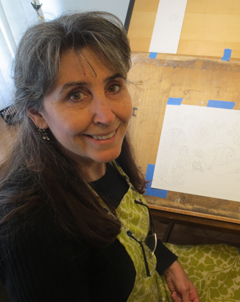 Denise Clemmensen has been an artist from the moment she tore open her first box of crayons. In fact she became a drawing maniac. She drew on everything. Her parents finally bought her a little table where her coloring passion could be unleashed a little less destructively. Being a very shy child during her school years, she kept her passion for art quite. Though, one time in fifth grade, while helping out on the class history mural, her fifth-grade teacher noticed she could draw. For the rest of the week her teacher asked her to work on the mural while the rest of the class studied math.
Denise Clemmensen has been an artist from the moment she tore open her first box of crayons. In fact she became a drawing maniac. She drew on everything. Her parents finally bought her a little table where her coloring passion could be unleashed a little less destructively. Being a very shy child during her school years, she kept her passion for art quite. Though, one time in fifth grade, while helping out on the class history mural, her fifth-grade teacher noticed she could draw. For the rest of the week her teacher asked her to work on the mural while the rest of the class studied math.
Artistically, Denise has worn many hats; she has done both fine and graphic art, and has even made handmade rag dolls. But, throughout her artistic journey, her love of children’s books has never wavered.
In 2011, Denise illustrated the award-wining picture book, “Just Because.” This is her first picture book and in 2013 it won the prestigious Gelett Burgess Children’s Book Award. And, in 2012 it won the Young Voices Award, The Mom’s Choice Gold Award, and was named a Book of the Year by Creative Child Magazine.
She has illustrated artwork for various traditional and Internet-based educational publishers, and produces illustrations and character designs for many private clients.
Denise lives in the San Fernando Valley, a suburb of Los Angeles, with her husband, and for the time being, her grown kids, grandkids, two dogs, two cats, and three fish!
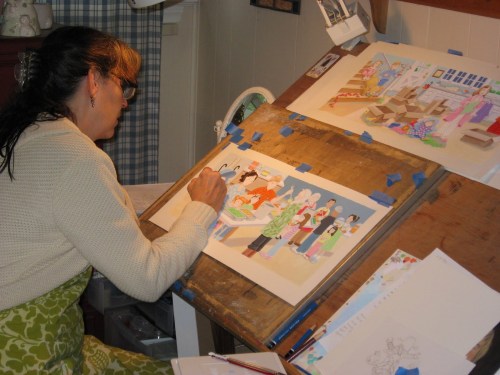
Here is Denise explaining her process:
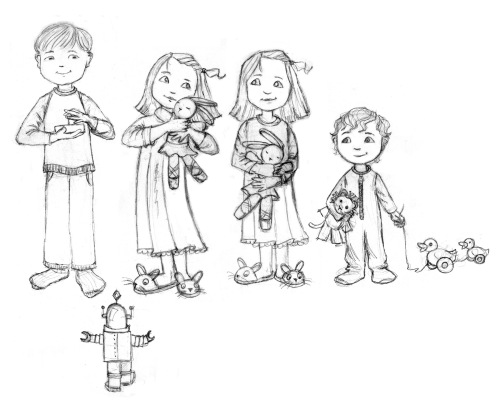
Sketch of the kids. Sometimes when I start a project I do character sketches. That way I can get to know and shape the different characters and their personalities. Here are three children from “Just Because” and their favorite toys.
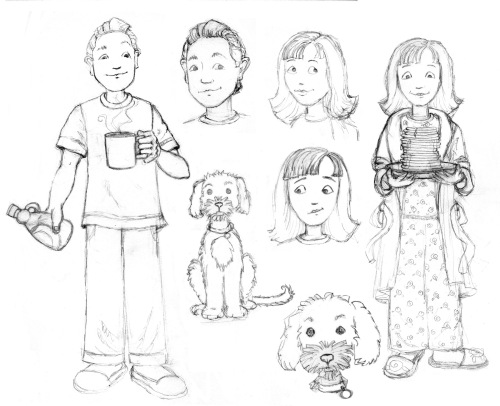
Sketches of Mom and Dad. This is the rest of the family getting ready for breakfast. The family even has a fluffy dog.
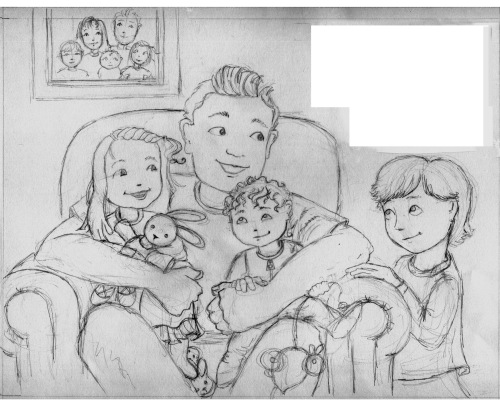
Sketch of page 9-Dad holding the kids in a chair. Here is the finished sketch of the kids sitting on their dad’s lap that was used in the book “Just Because.” The white square is where the text will go. I always put in the text, so I can make sure that the words and the picture fit together well.
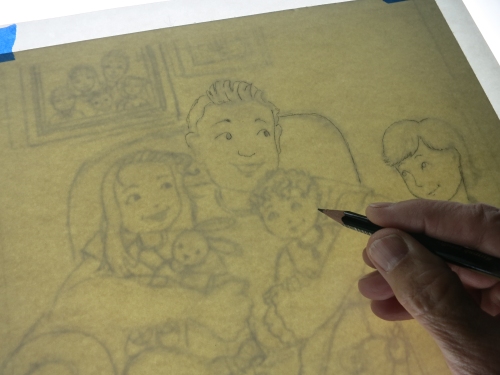
Light box. Once the sketch is finalized I transfer it on to watercolor paper by using a light box. My favorite watercolor paper is Canson 140lb cold press.

The start of painting. I use either acrylic matt or gouache paints.

The second picture of the painting. I paint in layers so I can build up the colors and add depth.
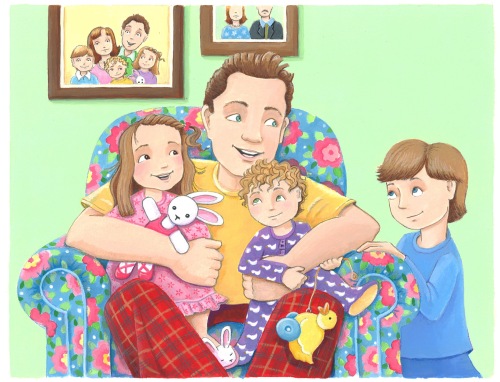
The final painting. After I finish painting I go in with colored pencils to help bring out the details.
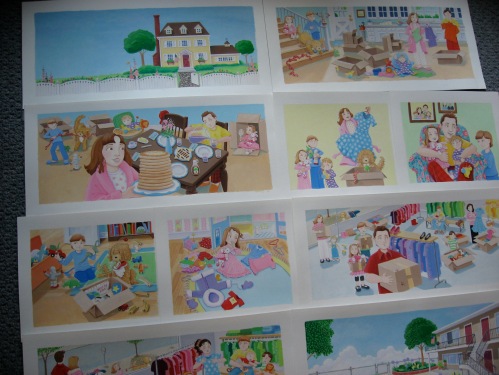
All the paintings together. When I do a project that has more then one illustration I like to work on all the paintings at the same time. I rotate my time on each one so I can keep a constant color palette.
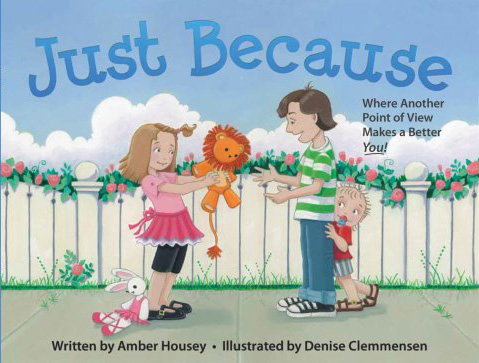
How long have you been interested in art?
All my life, I even remember as a small child having a drawing table in my bedroom. 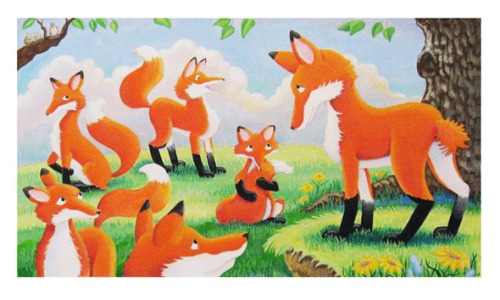
Did you study art in college?
Yes, I was a Fine Art major all through college.
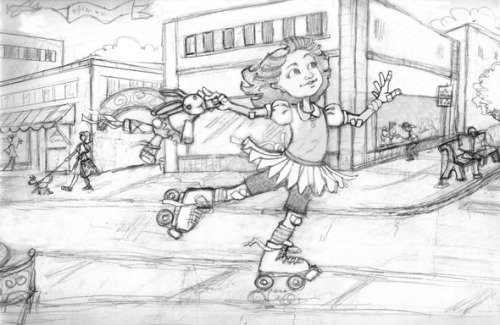

Did you study to be a librarian?
No, being a librarian is something I just kind of fell in to. I was a stay-at-home mom for many years and when the time came that I needed to go back into the work force, a friend of mine, who was a library aide with the Los Angeles School District, suggested I might like it.
Before I was a mom I had been a graphic artist, but with the coming of the computer age, I no longer possessed the skills needed to compete in that market. So I have been a library aide for 14 years now and I really enjoy the job and the kids. Plus I am surrounded by children’s literature, how great is that?

What was the first painting or illustration that you did for money?
In my early twenties I tried selling my artwork at local craft shows. I did a bunch of pen and ink fantasy drawings. I think the first one I sold was of a baby unicorn.
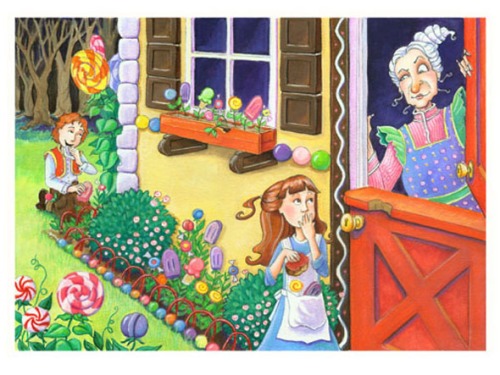
What type of job did you do right after you graduated?
I never quite graduated from college. You know that old story. I was only taking a semester off, I meant to go back and finish, I only had a year left, but life got in the way. My first art job was as a graphic artist. When I took graphic art in college I really didn’t care for it, my heart was really in the fine arts. That quickly changed, I learned so much more on the job and it turned out that I really enjoyed being a graphic artist. By the way, I learned everything old school: T-squares, triangles, French curves, mechanical pens, rubdown type, and so on. It was right before the onset of computers.
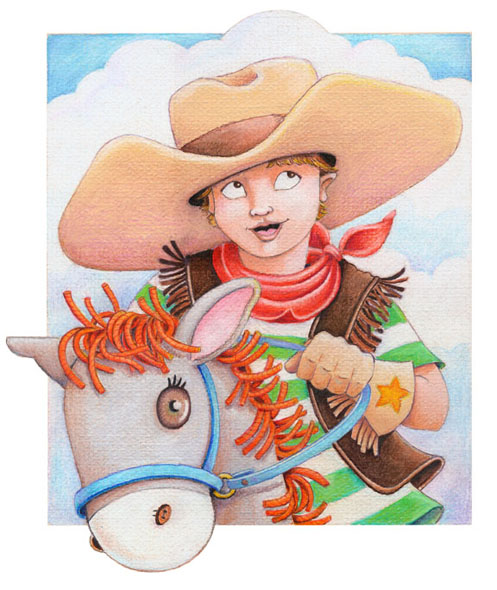
What do you think influenced your artistic style?
I have always loved animated movies. I hate to admit it, but I think Disney had a lot of influence on me, and so did getting married and having a family. Before I met my husband, my artwork was always a little sad and dark.
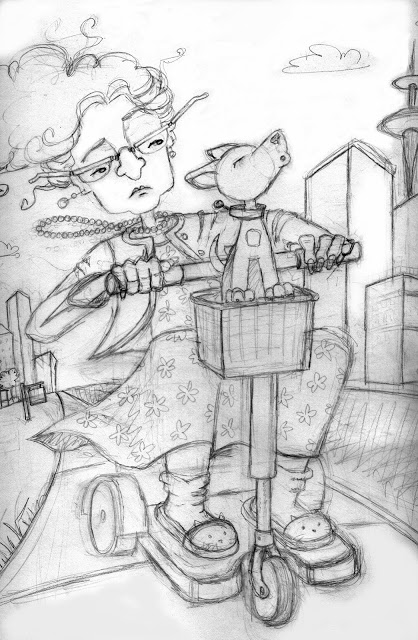
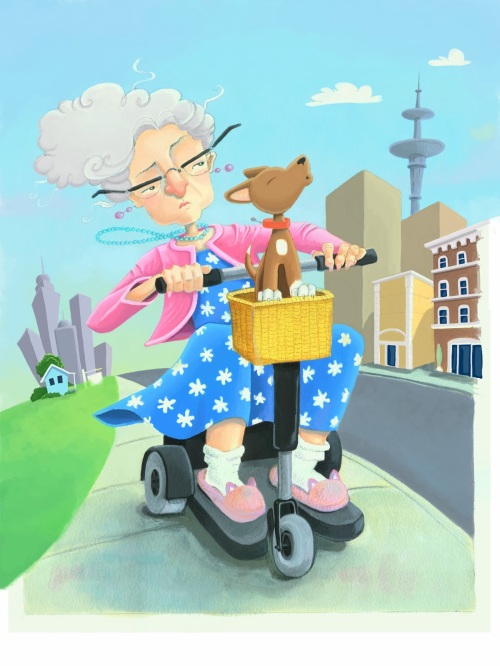 When did you do your the first illustration for children?
When did you do your the first illustration for children?
While I was a stay-at-home mom, I still did some freelance illustration jobs here and there. I was hired to do some black and white line drawings for a science book for children.
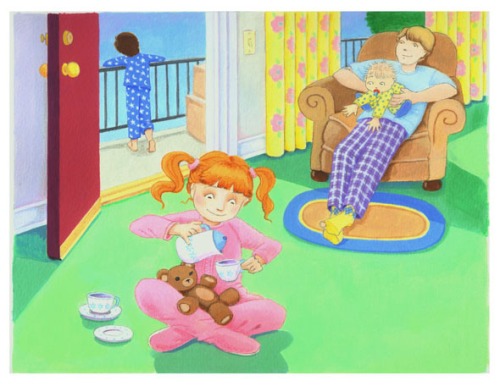
How did that come about?
A friend of a friend knew the gentleman who was writing the book and knew that he was looking for someone to do some of the artwork. They introduced us.
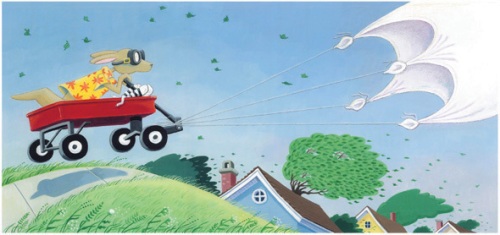
When did you decide you wanted to illustrate a children’s book?
I think this is something I have always wanted to do, but in my early twenties I took an extension class, How to illustrate Children’s Books, through Cal State Northridge, and that cemented it.

How long did it take you to get your first picture book contract?
It took a long time to get the first book contract and then there was a fourteen year gap between “Aides: first facts for kids” and “Just Because.”
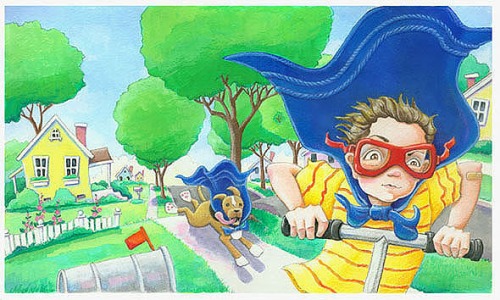
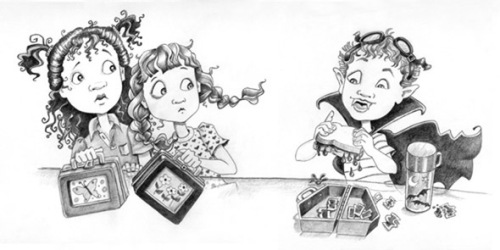
What was your first book that you illustrated?
My first book was an educational book “Aides: first Facts for kids” written by Linda Schwartz. All of the illustrations where done in pen and ink.
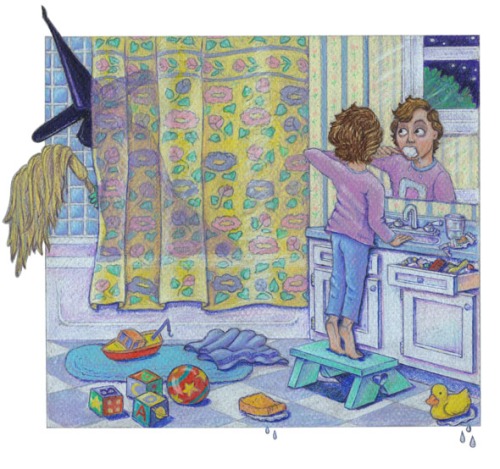
Was it a self-published book
No, the book was published by The Learning Works, Inc., a small publisher in Santa Barbara, Ca.
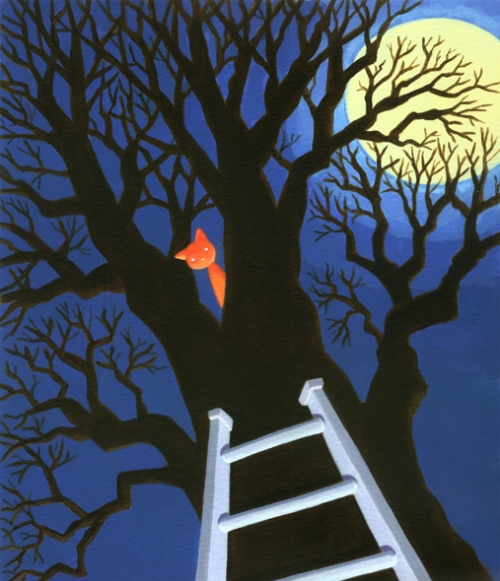
Are you open to illustrating a self-published book?
Yes, the second book I illustrated “Just Because” written by Amber Housey was self-published.
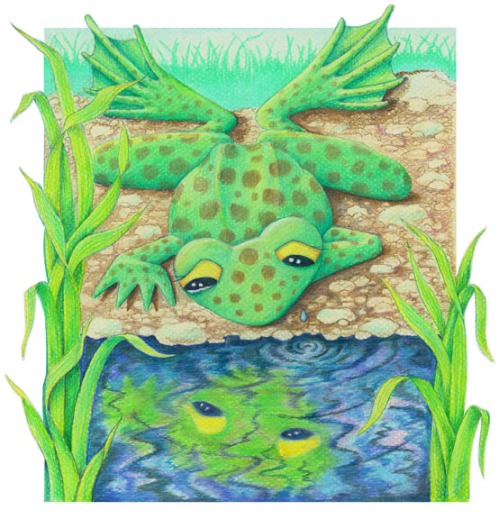
How did you get the contract to illustrate JUST BECAUSE?
The author found my illustrations through a website that I belong to. She then contacted the self-publishing house she was using and they in turn contacted me.
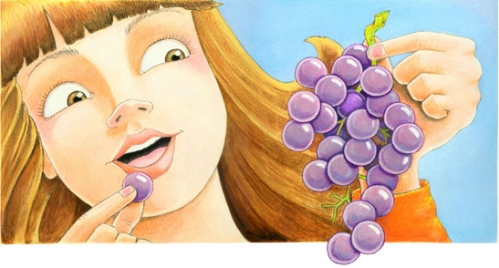
Have you worked with educational publishers?
Yes, I just recently did four illustrations that will be included in an educational textbook and a few years ago I did two eight-page booklets written for English learners.
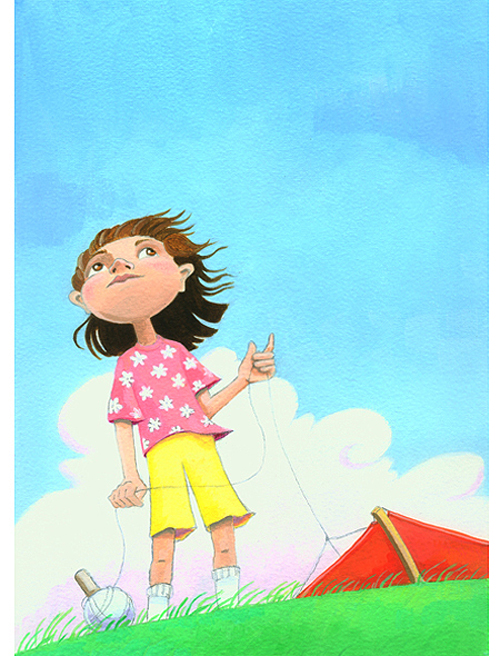
How many children’s books have you illustrated?
To date, I have done four books, but only one is a traditional 32-page picture book.
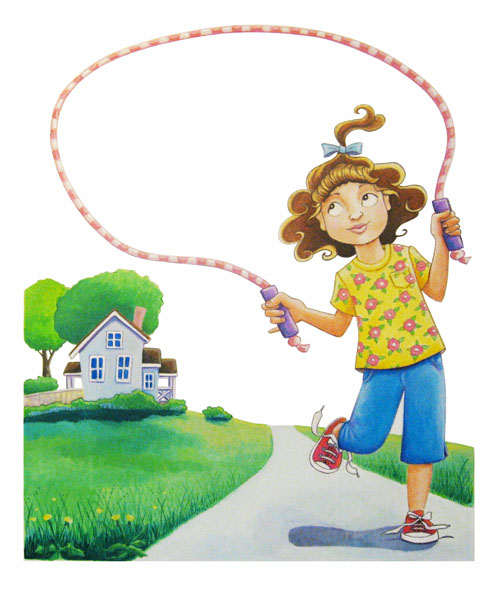
Do you have any desire to write and illustrate your own book?
Yes, I have a few stories that I have been working on.
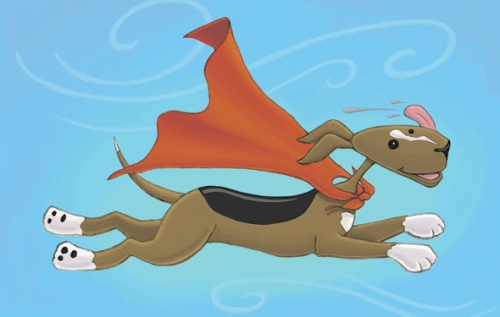
Have you done any illustrating for children’s magazines?
No, not yet, but I am hopeful.
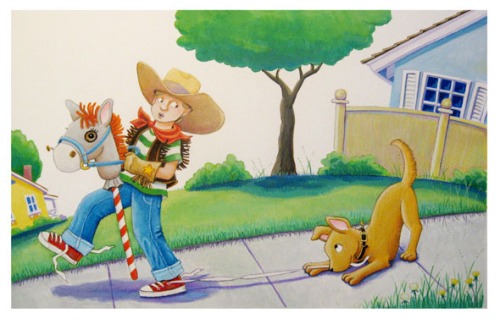
Do you have an agent to represent you? If so how did you connect? If not, would you like one?
No not at this time. I did submit my portfolio to an agency once. They were very polite and helpful but were not interested. I might try again because having an agent does allow more doors to be open for your work to be seen. Though, I believe even if one does have an agent they should still self-promote.
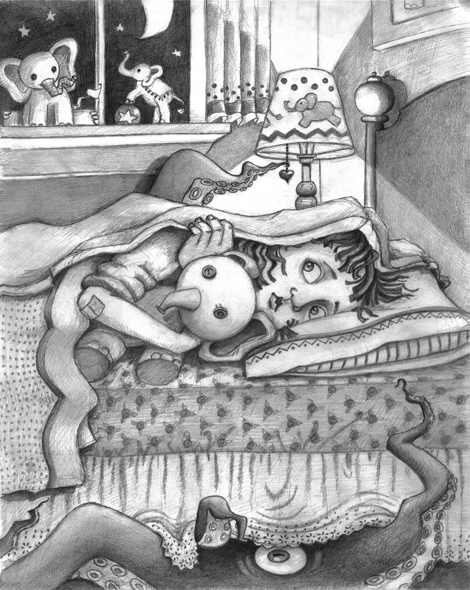
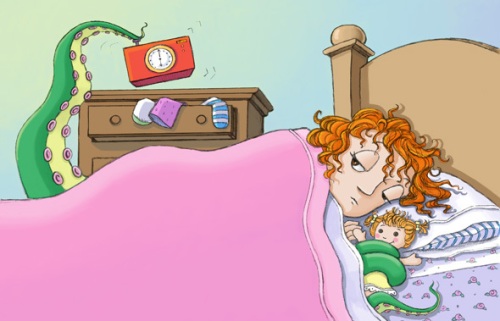
What types of things do you do to find illustration work?
I have a website and a blog. I also advertise on a Children’s illustrators website and I send out post cards to publishers and editors. SCBWI has a spot on their website for illustrators to show their work. Last year, I also ran an ad in the Directory of Illustration.
 What is your favorite medium to use?
What is your favorite medium to use?
I would have to say pen and ink, and colored pencil.

Has that changed over time?
Yes for me there has not been much demand these days for just pen and ink and colored pencil is very time consuming. In order to save time I started to use acrylic paints with the colored pencil (though I am not sure if any time is actually saved) and I have just recently started to explore painting in Photoshop.
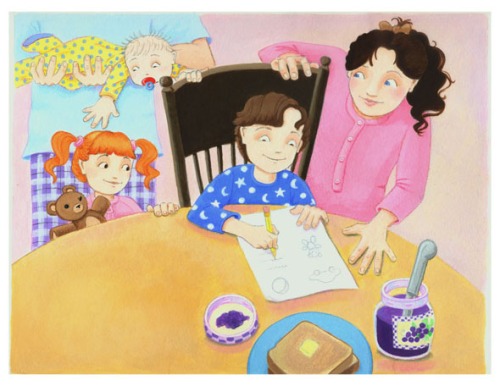
Do you have a studio in your house?
For years my studio was the kitchen table, then I was able to set up a drawing table in the corner of my family room. Two years ago, one of my children moved out, and I was able to turn that room into my art studio.
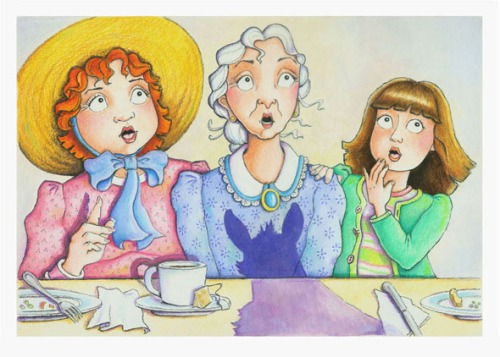
What is the one thing in your studio that you could not live without?
My eraser.
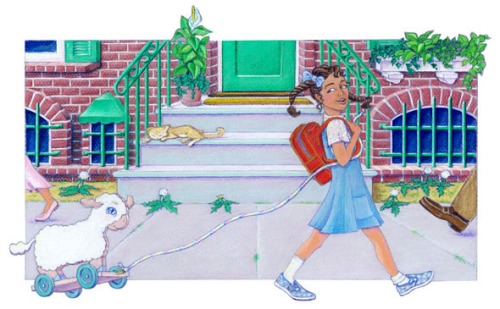
Do you try to spend a specific amount of time working on your craft?
Yes, I look at it as another job. If I am not working on a project for someone I am working on something for self-promotion. I work everyday.
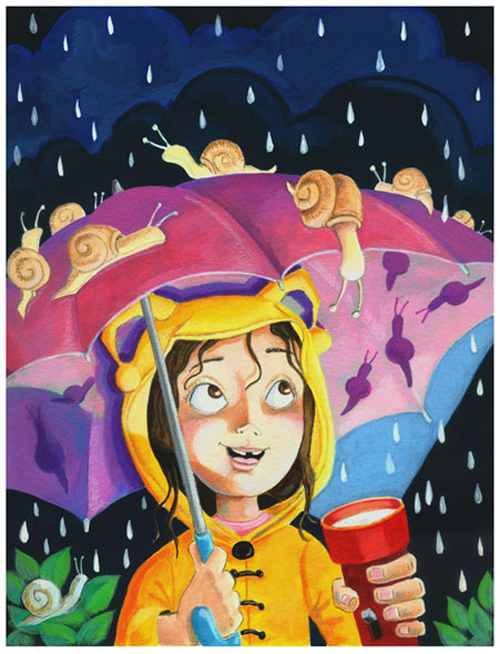
Do you take pictures or do any types of research before you start a project?
Yes, I have taken lots of photos and I do online and book research. Whenever I go on vacation somewhere I always end up taking photos of all the different plants I come across. Sometimes at home when I am working on a sketch, I will physically put myself in the character’s pose to see how it looks and feels. I even have a small mirror next to my drawing table to reference hands or facial expressions.
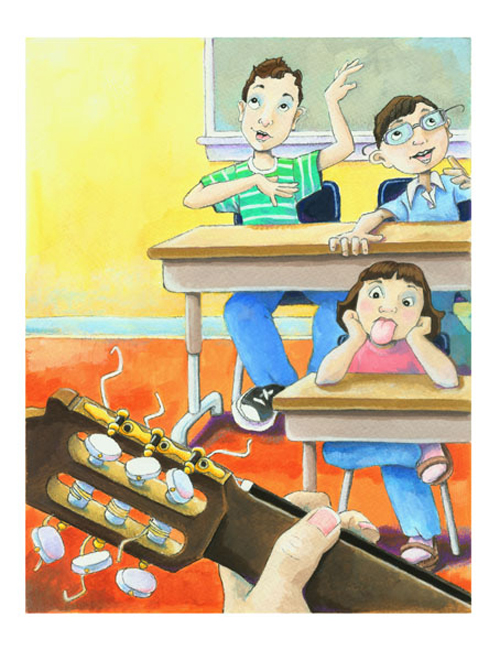
Do you think the Internet has opened doors for you?
Most definitely, it allows me to show my portfolio to more perspective clients than I could before.
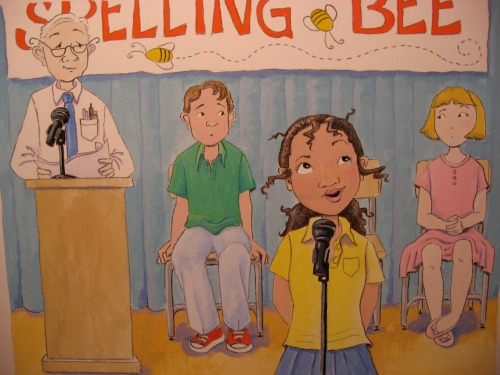
Do you use Photoshop with your illustrations?
I have just started playing with Photoshop. I bought a Wacom Tablet a little while back and I have been experimenting with it ever since. It’s fun and I have put a few of my digital works up on my website and blog.
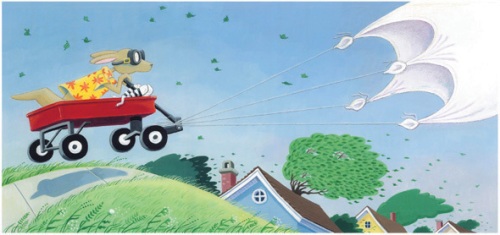
Do you own or have you used a Graphic Drawing Tablet in your illustrating?
I have just started using the Wacom tablet and for right now, I have just been scanning in my pencil sketches into Photoshop.
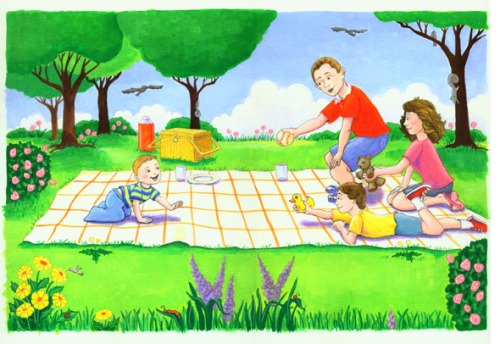
Do you have any career dreams that you want to fulfill?
I would like to illustrate a 32-page picture book from a traditional publisher and I also think it would be great fun to do the cover and inside drawings for a children’s chapter book.
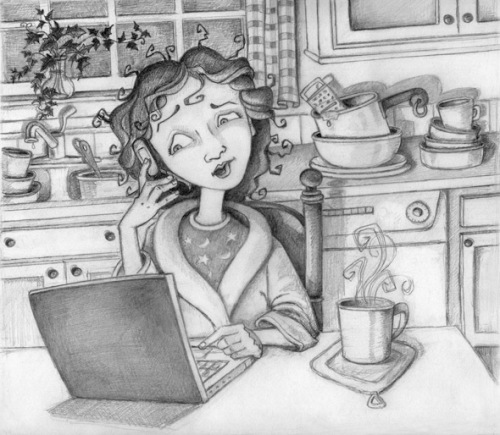

What are you working on now?
At the moment, besides learning Photoshop and the Wacom tablet, I am busy finishing up some new illustration to add to my portfolio.
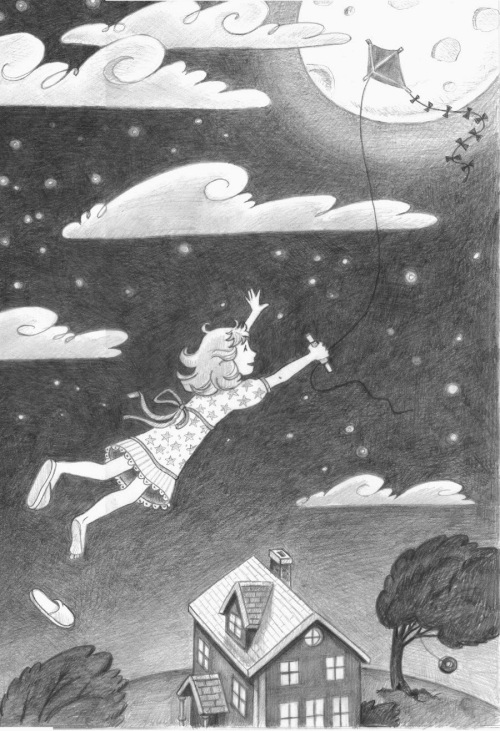

Do you have any material type tips you can share with us?
When I was working on “Just Because” I bought a light table and that was the best investment I ever made. It took one step out of the process of transferring the sketch on to the watercolor paper. I have found that anything that saves any time when working on a project is great, because deadlines are always so tight.
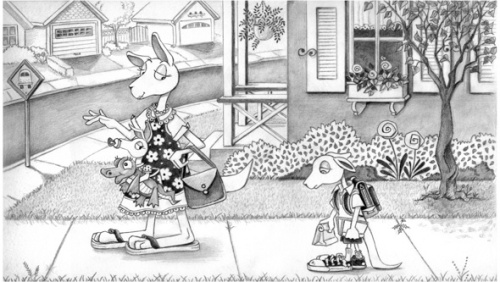
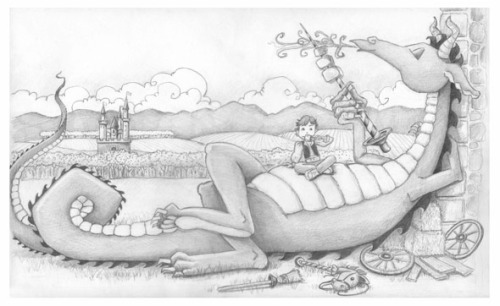
Any words of wisdom on how to become a successful writer or illustrator?
Never give up. Work hard. Keep learning and honing your skills, and most important illustrate what you love.
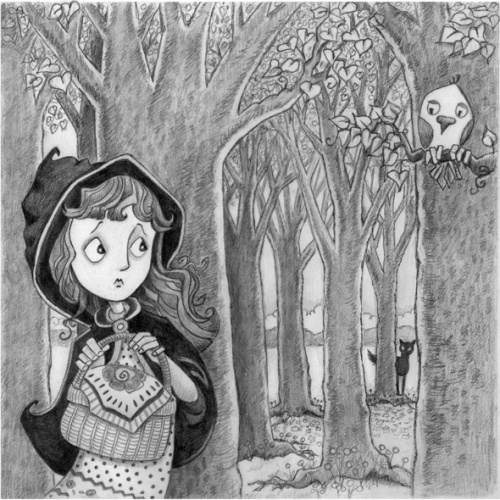
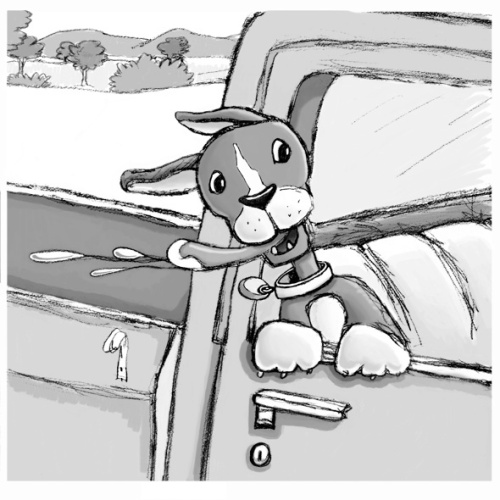
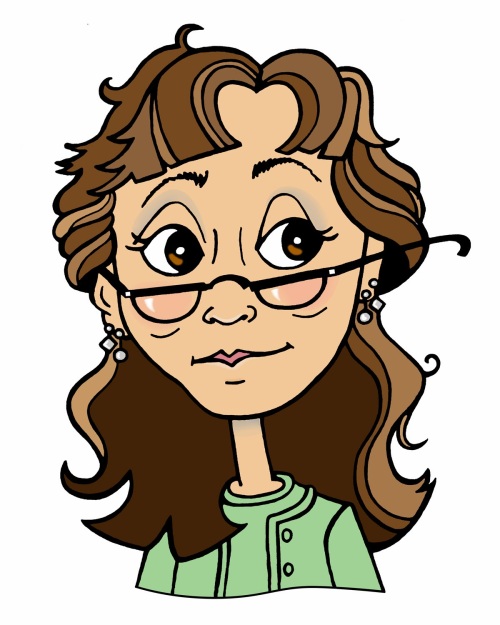 Thank you Denise for sharing your illustrations, journey, and process with us this week. We look forward to following your career, so please let us know about your new books and all of your future successes.
Thank you Denise for sharing your illustrations, journey, and process with us this week. We look forward to following your career, so please let us know about your new books and all of your future successes.
You can visit Denise and see her work at http://deniseclemmensen.blogspot.com/ Please take a minute to leave Denise a comment. I am sure she would love to hear from you and I would appreciate it, too. Thanks!
Talk tomorrow,
Kathy
Filed under:
Advice,
demystify,
illustrating,
Illustrator's Saturday,
inspiration,
Interview,
Process,
Tips Tagged:
Children's Illustrator,
Denise Clemmensen 


By: Kathy Temean,
on 5/8/2014
Blog:
Writing and Illustrating
(
Login to Add to MyJacketFlap)
JacketFlap tags:
demystify,
First Page Critiques,
Free Fall Friday - Results,
Jenna Pocius,
Editor,
inspiration,
Advice,
Editors,
revisions,
Bloomsbury,
opportunity,
Add a tag
CALL For: May/June Illustrations – 500 pixels wide

I want to thank Jenna Porcius from Bloomsbury for sharing her expertise and donating her time to help all of us.
Below are the results for the four first pages critiqued by editor Jenna Porcius from Bloomsbury.
Next Friday May 16th Agent Marie Lamba from Jennifer DeChiara Literary Agency will critique 4 first pages.
QUINLAN LEE, Agent, Adams Literary will end MAY with her four critiques posted on May 30th. Deadline to submit: May 22nd.
Here are the Results:
Carolyn Clark, MG Fantasy: MISSION TO THE SKY: THE ODIN EXPEDITION
Tiny Mitchell of 18 Hummingbird Lane was the only one in her family with any sense of magic and wonder. Her parents were scientists, and they only believed in things they could see, touch, and count.
No matter how much they insisted magic didn’t exist, Tiny knew they were wrong. She knew that her great-great-great grandmother Petunia Wilson put spells on people and animals to make them behave. Once, she even worked for the President of the United States and helped him catch thieves trying to steal all the gold in Ft. Knox. Tiny admired her great-great-great grandmother and wanted to be just like her, maybe even help the President. She just didn’t know how to go about it.
Tiny’s older brother, Jamie, didn’t believe in magic either, although he did believe he ran the universe, especially her small corner of it. She knew that wasn’t true either, despite the fact he kept trying to prove he did.
“Okay, shrimp, where do you think you’re going?” Jeans full of holes and covered with ballpoint pen drawings of everything from cars to trees and flowers, Jamie stood in the front doorway, sneakered feet ready to pounce. He grabbed for her arm, but missed when she ducked around him.
Being fast and small helped Tiny a lot in the big brother department.” None of your beeswax where I’m going, toad breath, and my name’s Tiny.” Well, her name wasn’t really Tiny. Her parents named her Theresa, but Tiny suited her just fine.
She raced down the steps, jumped on her bike, and pedaled as fast as her legs could go, because she knew Jamie didn’t give up that easily. And, she was right. Paper clips bounced off the thick rubber band in his fingers and whirred around her head, but she couldn’t let them stop her.
HERE IS JENNA’s Comment for MISSION TO THE SKY:
I love the idea of this little girl who believes in magic even though no one else does—it’s a sweet notion that feels perfect for young middle grade. I also really like the family element, and the mention of her great-great-great grandmother has me curious to find out more about the nature of this family magic. But the introduction of her brother and their fighting shifts the focus a bit in a way that is not quite as engaging. I’d love to see more focus on Tiny in these first pages to help set up the plot and give the reader a better sense of where the story is going.
_____________________________________________________
The Edge, By Angela Larson – Middle Grade
“…Our final announcement this Monday morning comes from Mr. Bennett. All science fair forms are due today by noon. A reminder to all scientists: There is a strict ban on explosive demonstrations this year.” My face grows so hot I’m sure I’m turning red. The announcer didn’t need to say, “We’re talking to you Felix Mathew,” for the whole school knows those last few words are aimed at me. We all just know it. You’d think that they’d be over it — that I’d be over it –I mean, it’s been a year already. Come on, my right eyebrow grew back three months ago.
I should probably tell you what happened. Last year, specifically, on the one day a year that the athletic teams of Einstein Scientific Junior Academy give up their precious gym for the school science fair I, Felix Mathews, rocketed a potato across the gym at 236 miles per hour. I imagined it would be one of those awesome moments where everyone would stop and be wowed by my brilliance. I was even prepared. I had practiced outside once before the fair.
It was a stunning moment at the fair last year. Everyone was stopped by my demonstration. It was just the screams that I hadn’t expected.
My launch pad was stable and strong, my practice run went well, and my confidence was high. But a small nudge by one of the judges a split-second before lift off changed the projectile. With a loud bang, the potato shot out its adjusted path at stunning speed and completely destroyed the gymnasium’s scoreboard. While everyone else watched the scoreboard shatter and fall, I smacked my right eyebrow, extinguishing the flaming hairs lit by the launch.
After the shower of plexiglass stopped, the judges showed no interest in my poster explaining combustion theory. I had labored over it for hours. And standing alone with my poster, at rocket speed I was hit with the certainty that I wasn’t going to be invited to the Monday morning school assembly to show off my prize-winning demonstration. Another attempt at greatness dashed – by just one potato.
HERE IS JENNA’S Comment for THE EDGE:
I really like the classic boy middle-grade humor here, and I laughed out loud when I read “Come on, my right eyebrow grew back three months ago.” But I do think the opener would be stronger if it didn’t lead with the announcement. Situating Felix in the school first (maybe he’s walking to class, sitting at his desk, etc. doing something characteristically Felix) and then bringing in the announcement, for example, could help with pacing and build. Also, there’s some repetition here of information about the fair and what happened last year, so tightening that up will help make sure that the story is packing a tight, funny punch.
____________________________________________________
THE RIGHT STUFFING by Margo Sorenson - Picture Book
Jared picked up Carrots and his baseball glove.
Jared’s big sister Sarah frowned. “Don’t take that old stuffed bunny outside,” she said. “Aren’t you too old for him, anyway?”
Jared whisked Carrots out the door quick as a bunny.
“Good catch, Carrots!” he shouted.
Next, it was time to go to the grocery store. Jared sneaked Carrots into his car seat in the car.
“You shouldn’t bring that old stuffed bunny inside,” Sarah scolded. “Ick!”
But Jared raced up and down the aisles with Carrots tucked safely under his arm.
He stopped in front of the vegetables bin. “Look, Carrots!” he said, pointing. “There’s your name!”
At dinner, Jared squeezed Carrots next to him in his booster seat at the table.
“You’re not bringing that old stuffed bunny to dinner again, are you?” asked Sarah. “If you really have to have a bunny around, I’m going to tell Mom and Dad to get you a nice, new one.”
Jared scrunched Carrots down behind him. Only Carrots’ ears stuck up.
“Lettuce decide what dressing you want,” Jared whispered.
Next, Jared got in his pajamas, grabbing Carrots’ paw.
Sarah sighed, “You can’t take that old, dirty bunny to bed! Oh, my gosh. You’re too old for this bunny stuff.”
Jared snuggled Carrots under the covers next to him.
HERE IS JENNA’S comment for THE RIGHT STUFFING:
Myself and my stuffed animal dog, Doggy (who I’ve had since I was three) thank this author for understanding the importance of the child-stuffed animal relationship. J In all seriousness, though, this is definitely something kids and parents can relate to, and Jared and Carrots are an adorable pair. But the action here feels rushed, and the arc not fully fleshed out. I’d love to get to know Jared and Carrots a little more, and it’d be great to see them have a moment where they do something that gets them a positive response from the people around them to make the story a little more dynamic.
_____________________________________________________
Eye on the Fly by Shiela Fuller - Picture Book
Bentley spied the fly.
It was on the screen door as Mom left the house.
The fly took off.
Bituzz…bituzzzz.
Bentley had his eye on the fly.
It landed on the rocking chair.
Bentley jumped.
The fly took flight.
Bituzz…bituzzzz.
Bentley kept his eye on the fly.
It landed on the trash can.
Bentley pounced.
Off went the fly.
Bituzz…bituzzzz.
Bentley saw the fly.
It landed on the blueberry pie.
Bentley darted.
Away went the fly.
Bituzz…bituzzzz.
Bentley had his eye on the fly
HERE IS JENNA’S comments for EYE ON THE FLY:
I think this is a creative idea, but the repetition is making it hard for me to get into the story. I’m not sure where the story’s going, and more importantly I’m not sure why I should care about Bentley and this fly. Widening the focus beyond following the fly—maybe establishing why Bentley is so focused on following the fly, for example—could help to develop the story.
__________________________________________________
Here are the submission guidelines for submitting a First Page in May: Please “May First Page Critique” or “May First Page Picture Prompt Critique” in the subject line. Please make sure you include your name, the title of the piece, and whether it is as picture book, middle grade, or young adult, etc. at the top.
Attach your first page submission using one inch margins and 12 point font – double spaced, no more than 23 lines to an e-mail and send it to: kathy(dot)temean(at)gmail(dot)com. Also cut and paste it into the body of the e-mail and then also attach it in a Word document to the email.
DEADLINE: May 22nd.
RESULTS: May 30th.
Use inch margins – double space your text – 12 pt. New Times Roman font – no more than 23 lines – paste into body of the email and attach.
Talk tomorrow,
Kathy
Filed under:
Advice,
demystify,
Editors,
inspiration,
opportunity,
revisions Tagged:
Bloomsbury,
Editor,
First Page Critiques,
Free Fall Friday - Results,
Jenna Pocius 


By: Kathy Temean,
on 4/13/2014
Blog:
Writing and Illustrating
(
Login to Add to MyJacketFlap)
JacketFlap tags:
reference,
Queries,
How to,
demystify,
Carol Schulman,
Leslie Zampettis,
Links to resources,
Rear in Gear,
Writing Tips,
list,
Add a tag

This illustration of the cute girl with pink glasses above was sent in by Carol Schulman. She is the author of two books on art, both now represented by Schulman Literary in NY. The first, “The Creative Path: Process and Practice” is a look at creativity from philosophical, psychological and practical points of view. The sequel: “Art Smarts: A Book to Help You Become a GR8 Artist” is a sequel for children. See more at: http://www.carolynschlam.com/Art_Pages/Illustration/Illustration_info.html
Leslie has been focusing on querying agents and looking for places that had good information about navigating this process. She decided to share some resources she gathered from various writing friends on her blog “Rear in Gear”. She says, “I’m always thankful for their help, and thought I’d pay it forward in a small way.”
Queries Not Questions
Here is Leslie’s list, in no particular order:
AgentQuery
Chuck Sambuchino’s Guide to Literary Agents
Successful Queries (a subsection of the above guide)
Preditors and Editors
Publishers’ Submission Guidelines
JacketFlap
SCBWI BlueBoard
8 Steps to Finding the Right Agent
Critiquing First Pages and Queries
10 Questions to Ask an Agent
Kidlit.com – Queries
How to Write the Perfect Query Letter
Query Shark
Query Tracker
Writers Market *This is a subscription service. IMHO, well worth it.
Children’s Writer Newsletter *Another subscription service. Articles often contain market bib biographies, and every issue contains market profiles. Also well worth it.
-
 Leslie Zampetti has had stories published in online children’s magazines and is now querying agents for her middle grade fantasy novel. A childhood spent in Florida has this transplanted New Yorker frequently dreaming of sunshine – but she enjoys the whirl of the city and its riches, not least of which is the New York Public Library.
Leslie Zampetti has had stories published in online children’s magazines and is now querying agents for her middle grade fantasy novel. A childhood spent in Florida has this transplanted New Yorker frequently dreaming of sunshine – but she enjoys the whirl of the city and its riches, not least of which is the New York Public Library.
According to most successful authors, the best way to succeed is to plant your tushy in your seat and write. Leslie’s been doing that for some years now and is beginning to see the seeds of her labor blossom. Interested in knowing more? Stop by her blog, “Rear in Gear,” at http://zampettilw.wordpress.com.
Thank you Leslie to sending this to me. It is nice to have a list and it is nice that you were willing to share the wealth. I am sure everyone will bookmark this one.
Talk tomorrow,
Kathy
Filed under:
demystify,
How to,
list,
reference,
Writing Tips Tagged:
Carol Schulman,
Leslie Zampettis,
Links to resources,
Queries,
Rear in Gear 


By: Kathy Temean,
on 4/11/2014
Blog:
Writing and Illustrating
(
Login to Add to MyJacketFlap)
JacketFlap tags:
Illustrator's Saturday,
Christopher Denise,
Anika Denise,
Baking Day at Grandma's,
Sleepytime Me,
Patty Gauch,
Tips,
inspiration,
illustrating,
authors and illustrators,
demystify,
Add a tag
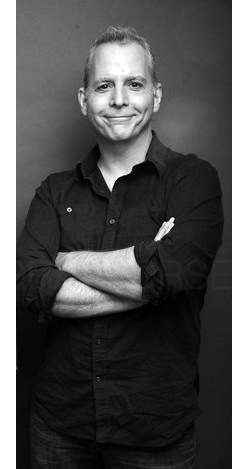
Christopher Denise is an award-winning children’s book illustrator and visual development artist. His first book, a retelling of the Russian folktale The Fool of the World and the Flying Ship, was pronounced “a stunning debut” by Publishers Weekly.
Since then, Chris has illustrated more than twenty books for children, including Alison McGhee’s upcoming Firefly Hollow, Rosemary Wells’ Following Grandfather, Phyllis Root’s Oliver Finds His Way, his wife Anika Denise’s Bella and Stella Come Home and some in Brian Jacques’ acclaimed Redwall series.
His books have appeared on the New York Times bestseller list and have been recognized by Bank Street College of Education, Parents’ Choice Foundation, and the Society of Illustrators Annual Exhibition.
Christopher Denise lives in Rhode Island with his family.
Christopher has two books coming out in the next few months. The first is SLEEPYTIME ME written by Edith Hope Fine coming out May 27th.
The second book, BAKING DAY at GRANDMA’S is written by his wife Anika and will be available in August.
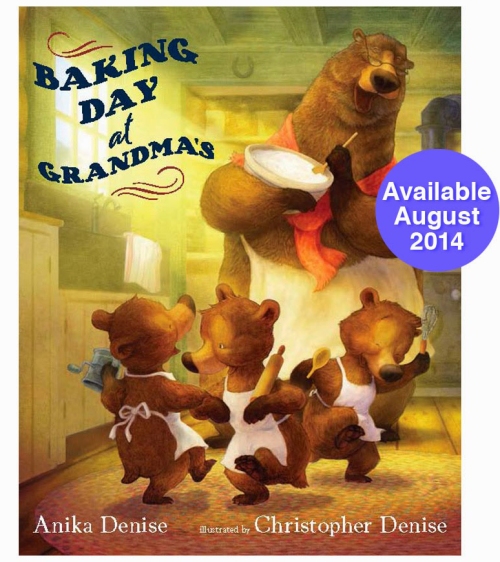
Christopher gives us a sneak peek of some of the interior shots below, with his process pictures on how he did a double page spread for the book. (Please check back later today. Christopher and I got our wires crossed with the process text. He is at a book festival and will be sending it as soon as he can get to Wi-Fi)

Rough sketch
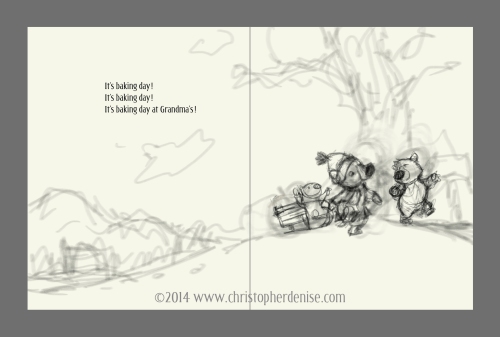
Adding more details
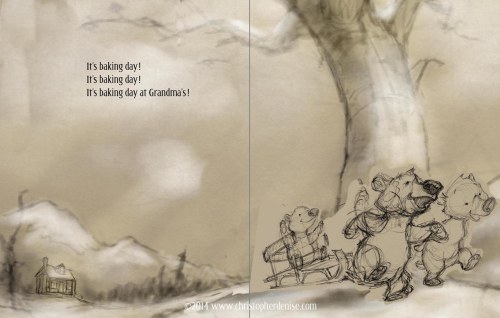
More details and first layer
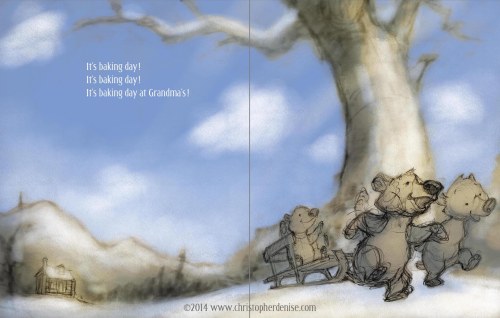
Laying in some color
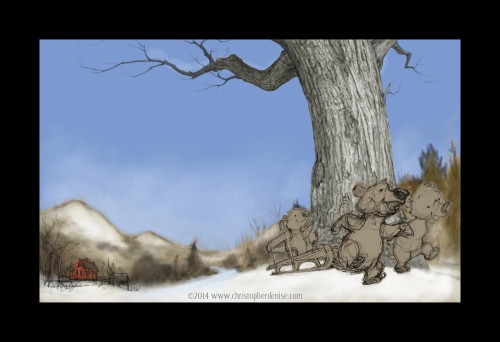
Refining details, inking in bark on tree, and deepening color of sky
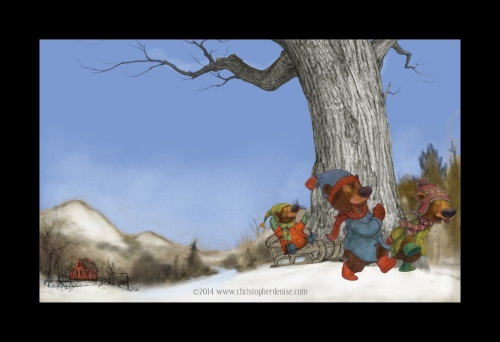
Painting in color on clothes
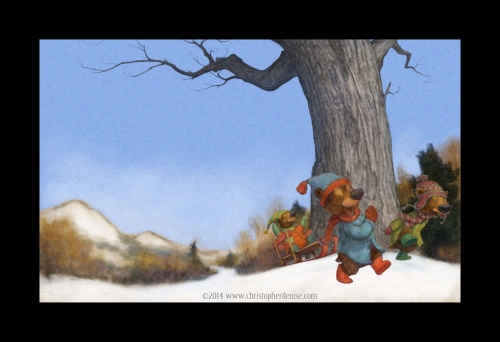
Worked on background and more detail on clothes
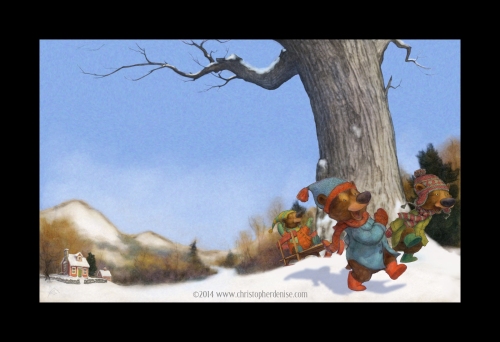
Adding shadows and details on house
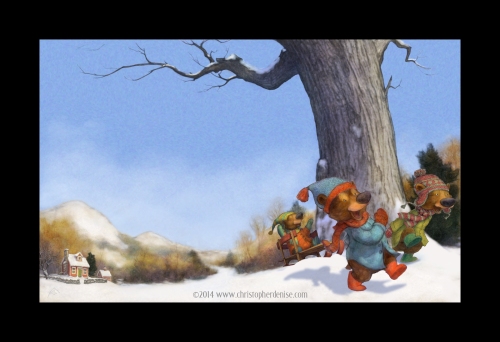
Continuing to deepen shadows and details

Adding highlights
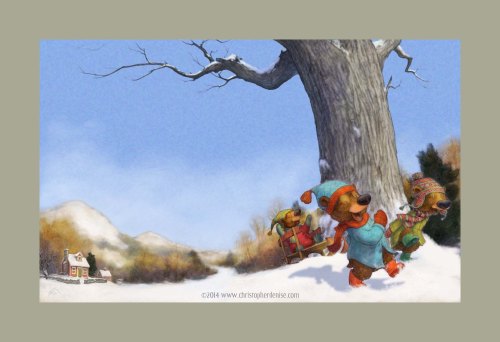
Deepening colors
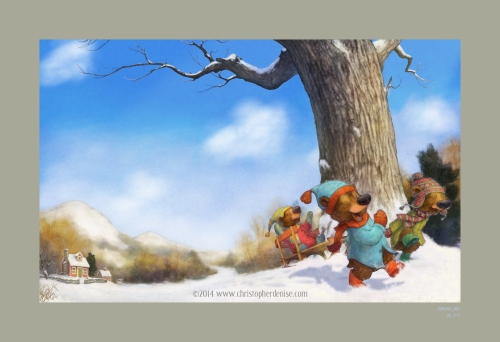
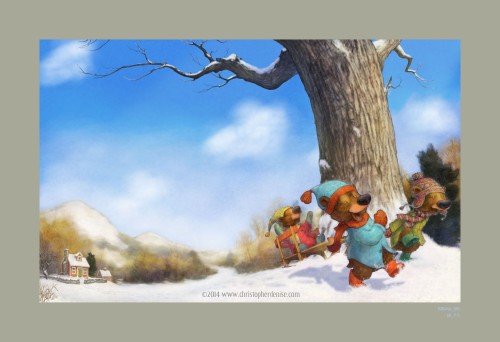
Adding color to tree.
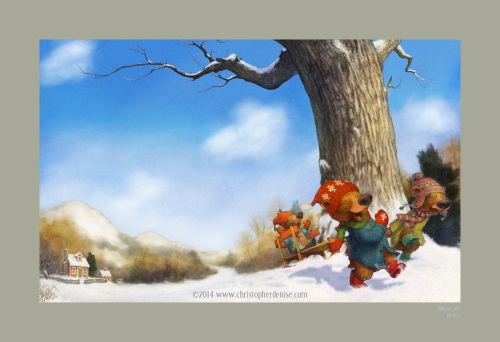
Changed my mind about the color of the clothes and added for detail to the final illustration.
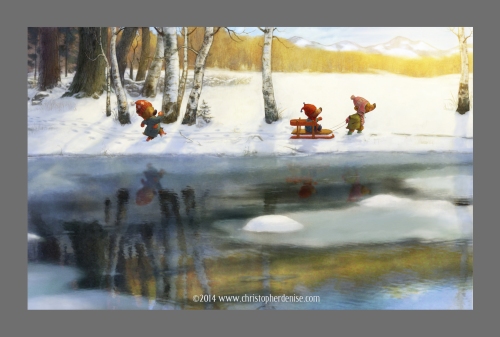
Above are the bears in this double page spread on their way to Grandma’s and below they are getting ready to bake.
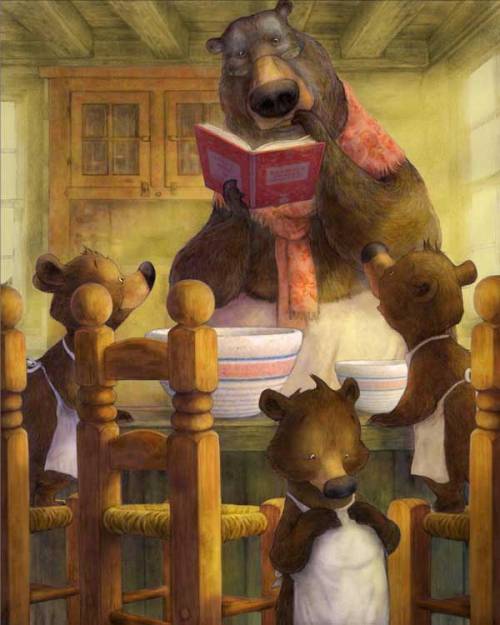
When did you first get interested in art?
As a kid! All kids love art-I just never stopped. I never let anyone talk me out of it-it is too much fun.
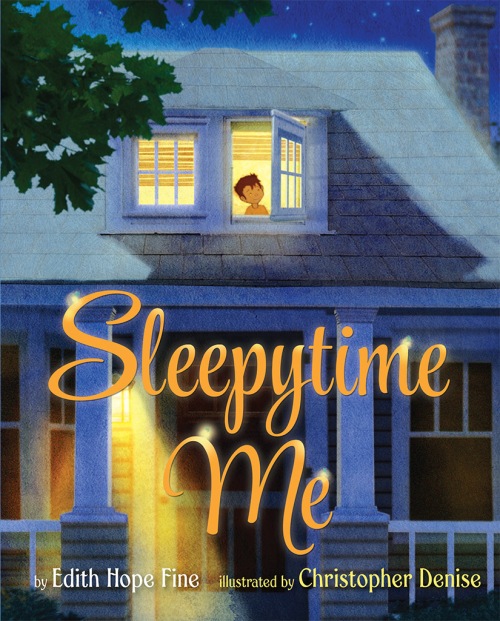
Why did your family move to Ireland from Massachusetts after you were born?
We moved to Ireland when I was six years old. My father had been working with General Electric and they offered him an opportunity to relocate and set up a headquarters in Shannon. He saw it not only as a great career opportunity but a chance to expose his kids to a very different way of life. This was in the early 70′s so Shannon was more like the States in the 50′s. It was an amazing place to spend some of my formative years.

What made you move back to the states?
He had completed much of what he set out to do and my oldest brother was preparing to enter high school and my parents thought it best to return to the states.

Do you feel Ireland influences your illustrations?
Absolutely. In Ireland we kids had an amazing amount of autonomy and unstructured time. Broadcast television began after 6pm and there was very little programing geared at children so we spent our days outside exploring the countryside and creating our own adventures. I look at the art I created for The Redwall picture books and I see so much of those childhood days.

Do you still have an Irish brogue?
Only after a very long dinner party with old friends!
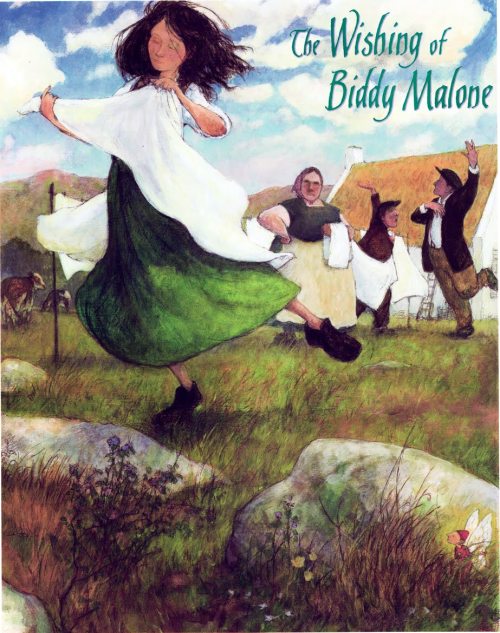
How did you decide to go to Rhode Island School of Design to study art?
After high school I was studying Art History and Archeology at St. Lawrence University. I was also spending a lot of time in art studio classes. It was fantastic and I was doing very well but I felt I needed more direction. My brother was studying architecture at RISD and after my first visit I knew that I needed to be there. While RISD students were dancing on the tables listening to The Talking Heads (very appealing to me) they were also having serious conversations about art and their own work.

What was the first piece of art that you sold?
I started freelancing for the Providence Journal in my Junior year at RISD. I created a series of black and white illustrations for a re-printing of A Child’s Christmas in Wales by Dylan Thomas.
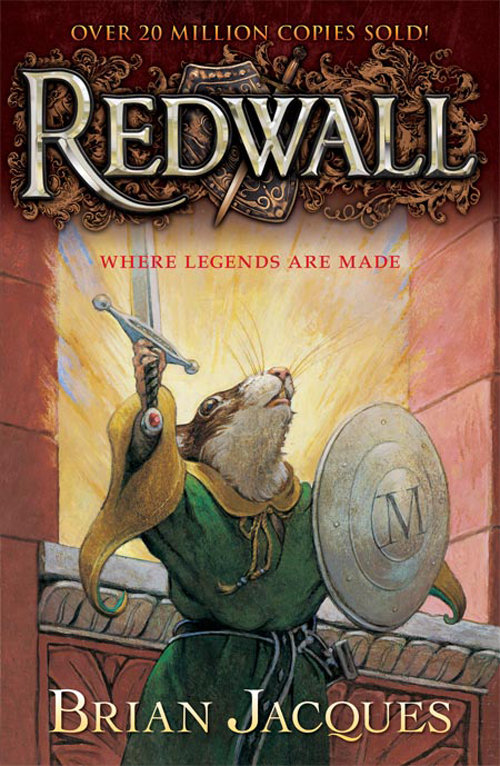
I read that you started illustrating books for educational publishers while you were still attending RISD. How did you make those connections?
I did and internship at Silver Burdett and Ginn, an educational publisher just outside of Boston. I was in charge of opening the submissions from artists and filing their promotional materials. It was not long before I realized that I wanted to be on the mailing end of the equation. When the internship finished I created my own mailers, asked the art directors to look at the work and for recommendations about where I might send them.
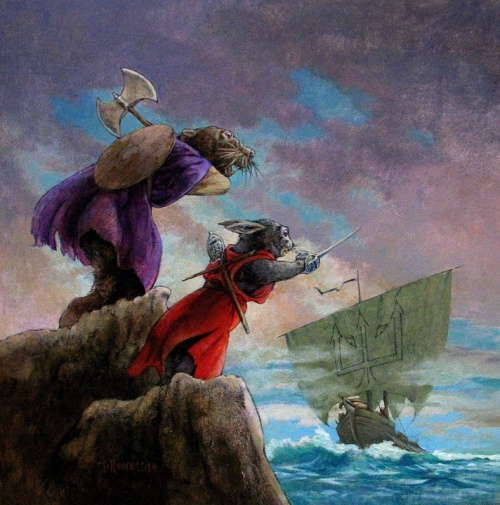
Did you always want to illustrate children’s books?
I never had any intention of becoming a children’s book illustrator, I sort of fell into the career. I knew I liked making art, so I left St. Lawrence University and transferred to Rhode Island School of Design. I remember while at RISD I had an assignment to create this illustration using an animal of our choice doing something specific. I think my animal was racoons and the subject was things you do at camp. Honestly, I Bobbaton Questthought I was way too cool to do something like that. I had been painting these big abstract paintings and when making illustrations they were always very cool and smart. But animals with clothes on? Forget it. I never finished the assignment. Fortunately, the teacher stayed on me and gave me another assignment. This time she had me illustrating scenes from Wind and the Willows. Somehow the writing grabbed me and became something that I could sink my teeth into. I really thought about the characters and what they should look like, their clothes, their houses, how they would walk and stand, etc. Then I surprised myself by really enjoying the process of making the art and people loved it. I ended up using those images to start my professional career when I was still a Junior in college to get freelance jobs with educational publishers. The rest is history.
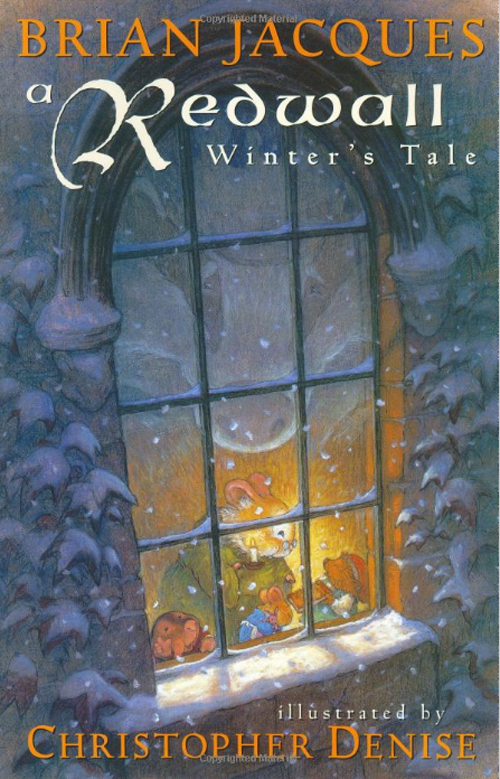
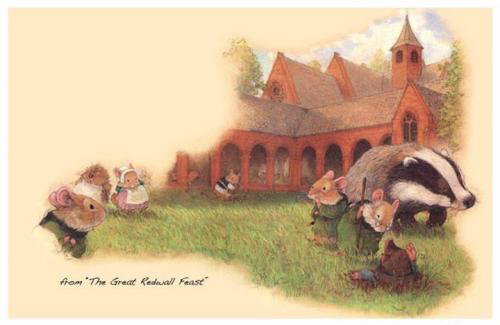
Were you continue doing freelance work when you graduated? Or did you take a job illustrating?
Since that day it has been all freelance work.


How did you connect with Philomel to illustrate your first picture book?
That was a friend of a friend situation. I heard that this person, whom I had met a few times socially, worked as an assistant editor at Philomel Books. She was incredibly generous and offered to look at my work. I don’t think she expected much but she actually liked my art and offered to take it down to the Art department. The Art Director promptly rejected it and told me to come back in a few years. Luckily she hung one of my mailers on her wall where it caught the attention of the esteemed editor Patti Gauch (Owl Moon, Lon Po Po). Patti called me up right there and asked when I could be in New York. I borrowed the cash for the train and within a week I was sitting in her office talking about books.
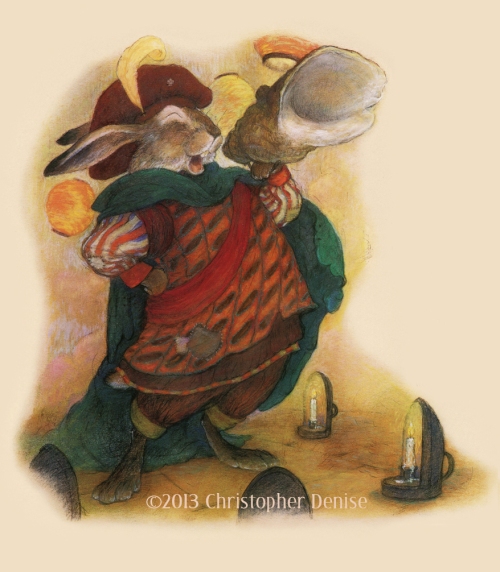
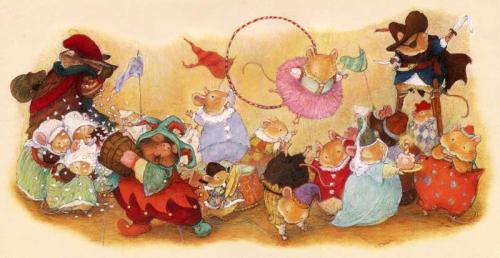
Your name is the only name for THE FOOL OF THE WORLD AND THE FLYING SHIP. Did you do the writing of the retold Russian tale?
Patti suggested that I consider illustrating the story of the fool and sent me on my way. The first edition I found was the Caldecott award winning version illustrated and retold by Uri Schulevitz. Lets not forget, that this is the guy who had literally written THE book on writing and illustrating picture books, Writing With Pictures. After being paralyzed with fear and then realizing there was no way out of this I started my research. I came across a wonderful version of the text by Petr Nikolaevich Polevoi published by St. Petersberg in 1874. Patti and I loved the language and just made a few minor edits. There is a note about the text on the last page of my edition.
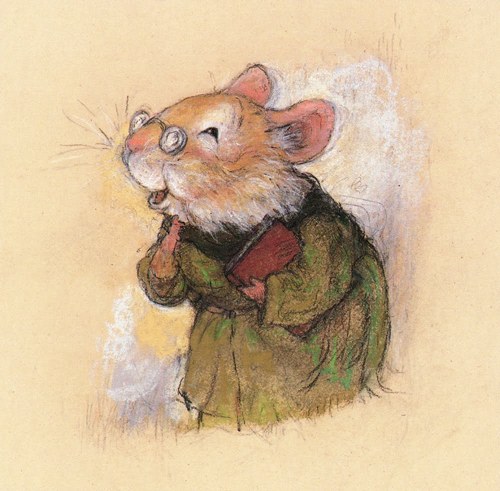

What was the next book that you illustrated and how did you get that assignment?
My next book was The Great Redwall Feast by Brian Jaques. Patti was Brian’s stateside editor and had been hounding him to write a picture book. Brian saw The Fool and wrote The Feast for me to illustrate. We quickly became close friends and I had the pleasure of working with him for many years. He is missed and I think of him often.
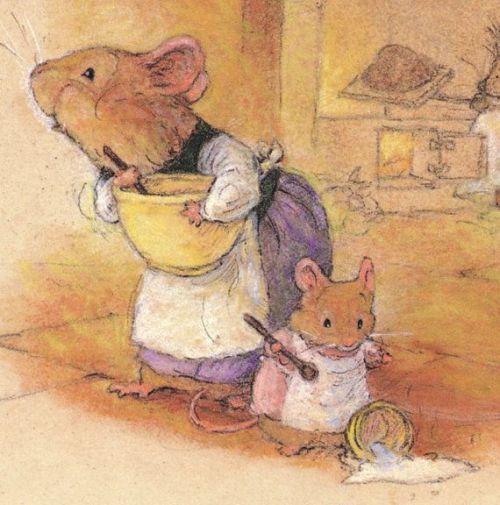
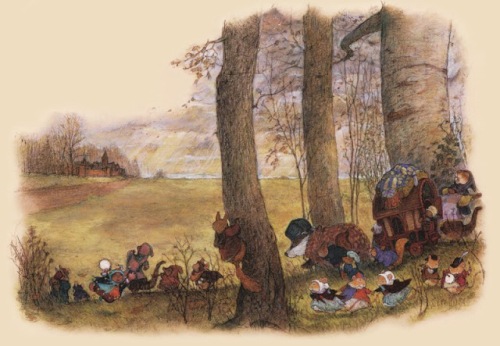
Did anyone hire you just to illustrate a cover for a book?
Yes, I created the artwork for Brian’s Castaways of the Flying Dutchman. I created two paintings for the cover but ultimately they were never used.

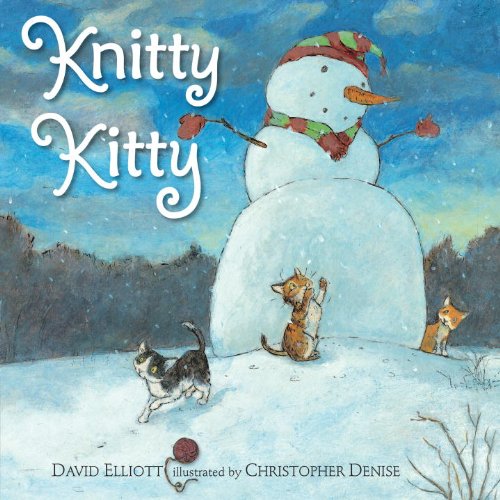
Did anyone hire you just to illustrate a cover for a book?
Yes, I created the artwork for Brian’s Castaways of the Flying Dutchman. I created two paintings for the cover but ultimately they were never used.
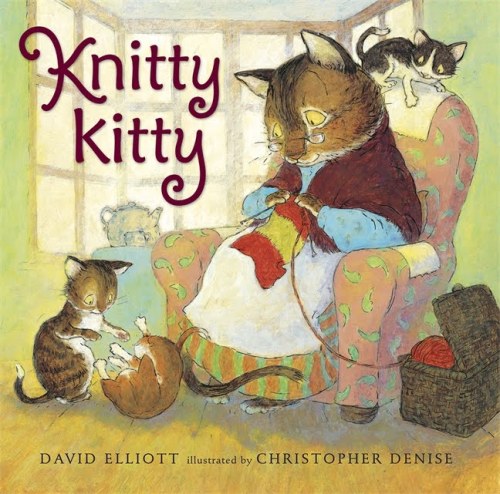
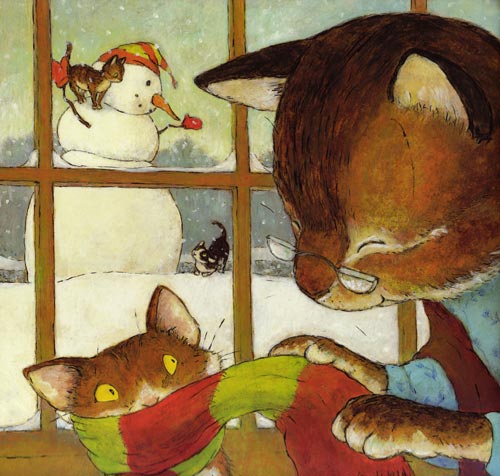
I see that your wife Anika is an author. How many books have you illustrated for her?
We have a really fun wintertime read-aloud book due out this August called Baking Day at Grandma’s (Philomel Books). That will be our third. Before that we collaborated on Pigs Love Potatoes (Philomel Books 2007) and Bella and Stella Come Home (Philomel, 2010). Both are still in print and seem to be popular!

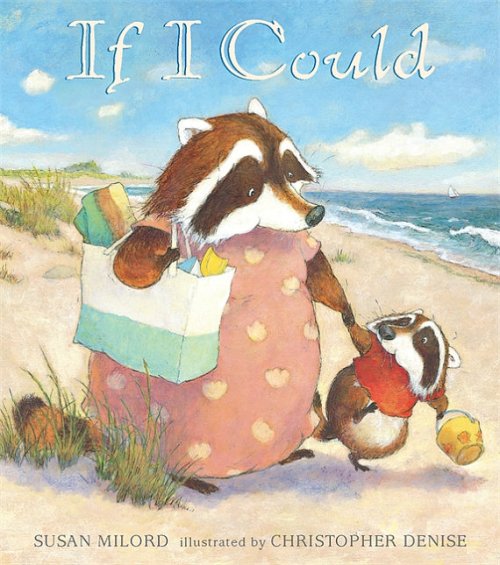
Do you have any desire to write and illustrate a picture book?
Desire-yes but I have not felt like I have had the chops to pull it off until recently. Writing a solid picture book, as many of your readers know, is incredibly difficult. I have a few things on my desk that are showing some promise and with the help of my incredible agent and friend, Emily vanBeek at Folio Jr., I am sure that a few of them will come to fruition at some point. Recently, I came up with the initial concept and art for a book that I tried writing but it was terrible! Thankfully, Alison McGhee (Someday, Bink & Gollie, Shadow Baby) came to my rescue and penned a gorgeous novel called Firefly Hollow that I am working on right now.
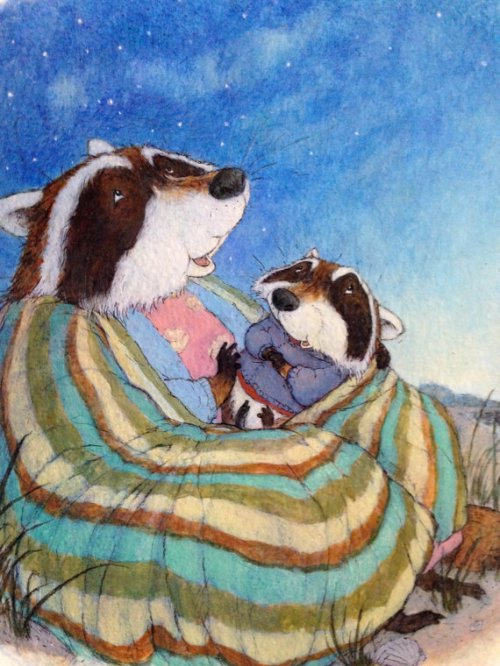
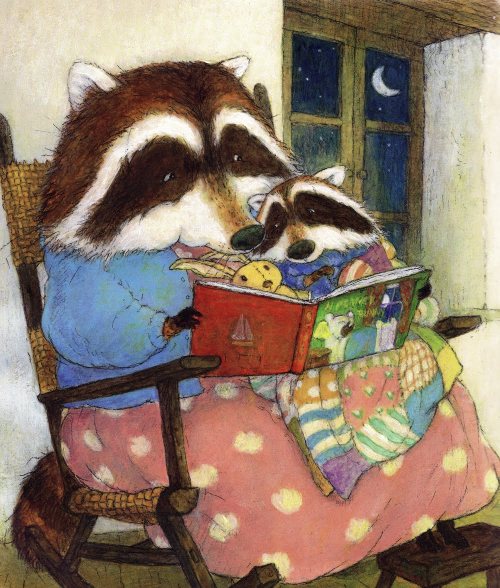
How and when did you get involved in visual development work for animated feature films?
A RISD alumni who knew my work called me to work on a project that was in development with Blue Sky Studios ( Ice age, Rio, Epic). I was part of a very small team of artists all outside the film studio creating images for what the film might look like. I ended up staying with the project for nearly a year. Its a beautiful story that I hope they make into a film someday!
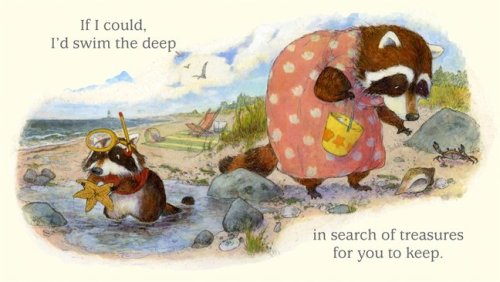
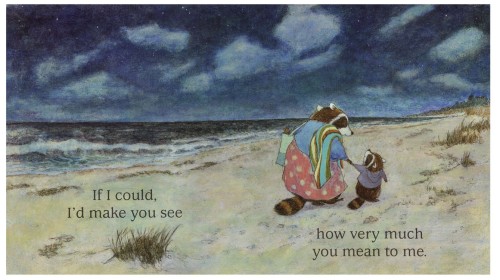
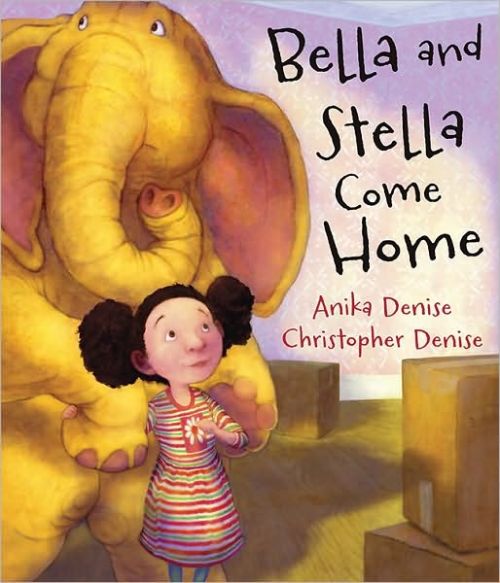
Which animated films did you work on?
Left Tern (Blue Sky studios), Beasts of Burden (ReelFx), a bit of work on Rio (Blue Sky studios) after it was already in production, and a few others that have not yet been made and I am not supposed to talk about!
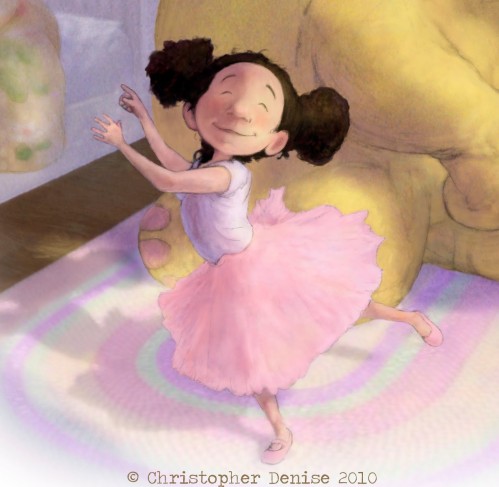

What is involved in visual development in animation?
Visual Development artists are called in to work with a director and/or production designer to help envision the look and feel of a film. You need to check your ego at the door, stay flexible, and work very, very quickly. I would turn out 20-30 paintings a week. Many loose, some more finished. Sometimes your paintings would be sent off to another artist to paint over and then sent back to you for work again. Often there is not a solid script and you are flying by the seat of your pants with a story summary and a few story beats (moments in a film) that you need to nail down. I love the collaborative aspect of the work and the idea that it is all about the story-not just making one or two pretty pictures.
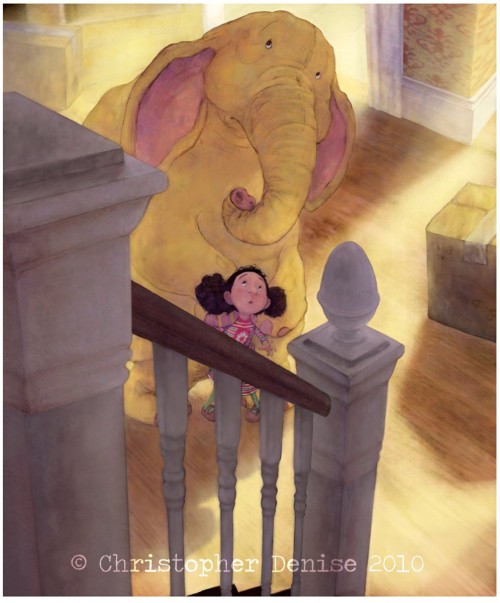
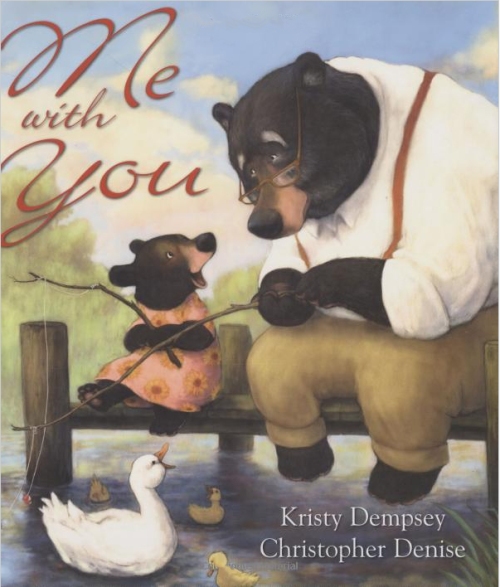
I noticed that you used pastels on one of your illustrations. Is that your favorite medium?
I love pastel work but really I love whatever is working for that particular book. Its always about the book on my desk and what it needs from me. I do enjoy the flexibility and speed of photoshop. I am impatient with my work and want to get to the good stuff as soon as possible. I need to get in there and start painting and changing things. Acting and re-acting. Photoshop is a wonderful tool for that type of work.
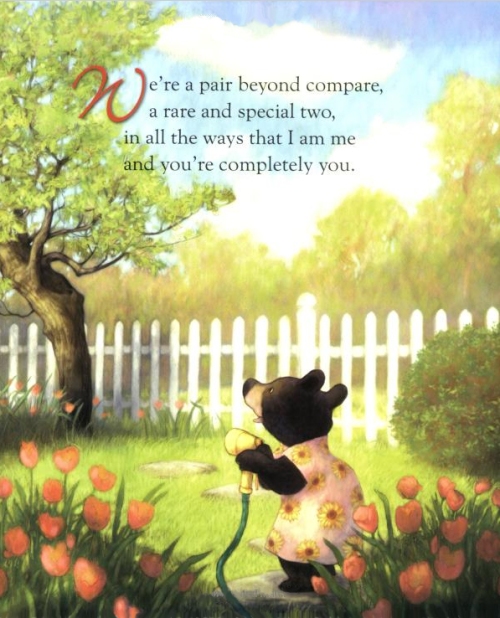
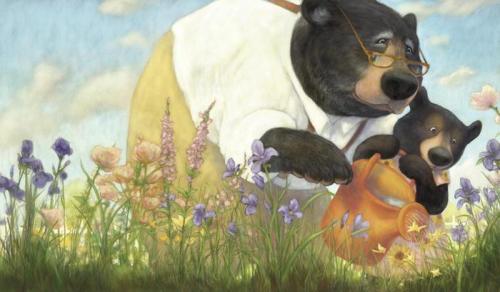
Has your style changed over the years?
Sure, with every book and the demands of each manuscript. Writing is hard and I think it would be a great disservice to the author and the story for me to impose a particular style on a book.

How did you connect with the lovely agent, Emily van Beek?
How long have the two of you been together? Emily and I met when I signed on with Pippin about 5 years ago. I was thrilled to re-connect with her later on when she started Folio Junior.
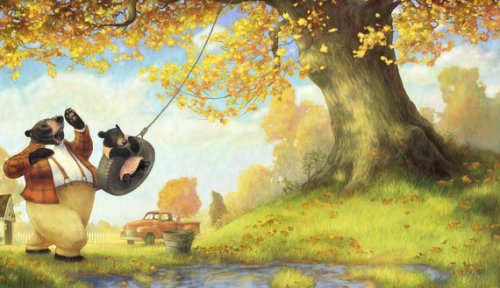
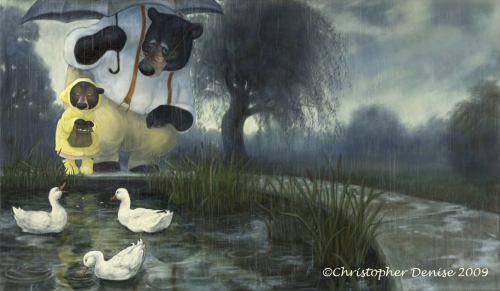
What do you think has been your greatest career accomplishment?
Wow. Tough question. Ask me again in about twenty years! A Redwall Winters Tale and Oliver Finds His Way would both rank pretty high up there for different reasons but I always think that I am only as good as my last book. I feel pretty good about the last year. I completed two books that I am VERY proud of. Sleepytime Me by Edith Fine (Random House, May 2014) and Baking Day at Grandma’s (Philomel, August 2014)
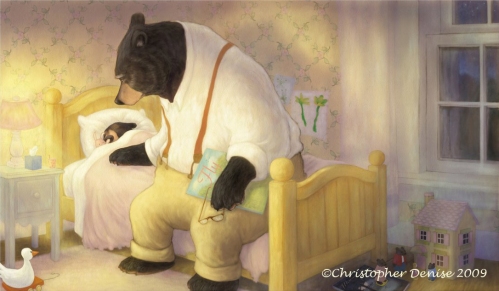
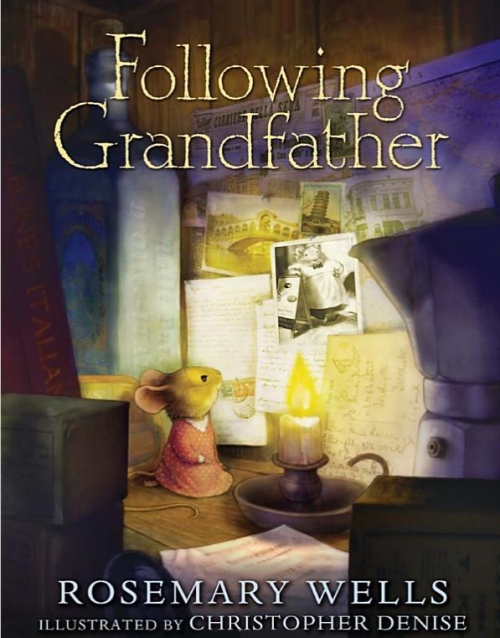
How many children books have you illustrated?
About twenty two I think. A few of the titles were created for educational publishers then re-published for the regular trade market.
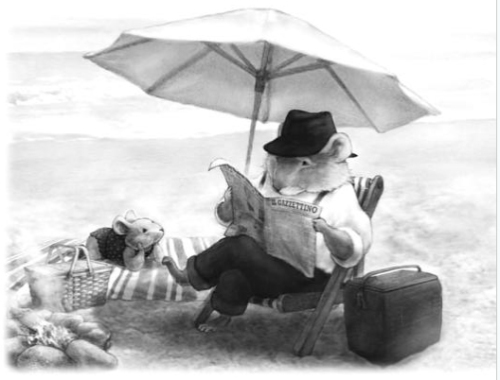
How did you get involved in illustrating the Redwall series of books?
Patti Gauch was responsible for showing Brian Jacques my work. Thanks, Patti!
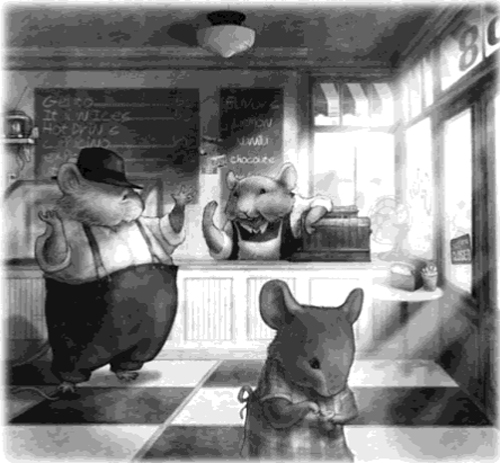
How many of those books have you illustrated?
I illustrated three books for the the Redwall picture-book series. The Great Redwall Feast (Philomel 1996), A Redwall Winters Tale (Philomel 2001), and The Redwall Cookbook (Philomel 2005)
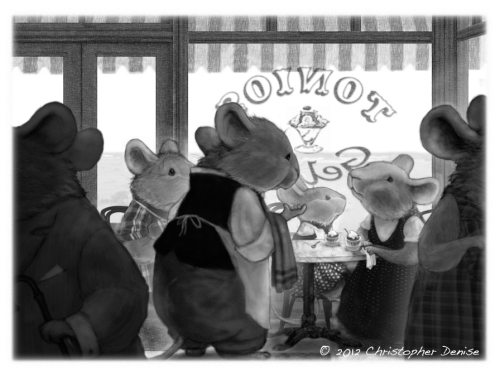
It looks like you have done a lot of books with Philomel. How many books have you illustrated for them?
Nine books with Philomel so far.
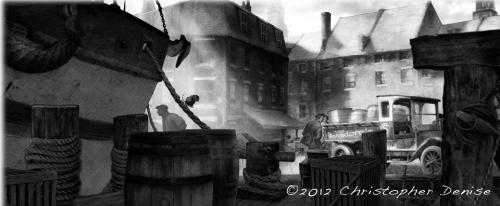
OLIVER FINDS HIS WAY was published by Candlewick. How did that contract come about?
Chris Paul at Candlewick called me up out of the blue one day and said she had a project that she would like me to consider. They are just up in Somerville so I drove up for lunch and met with Chris and the wonderful Mary Lee Donovan. I knew right away that I wanted to work with them. Candlewick is a fantastic house, beautiful books, super nice people.
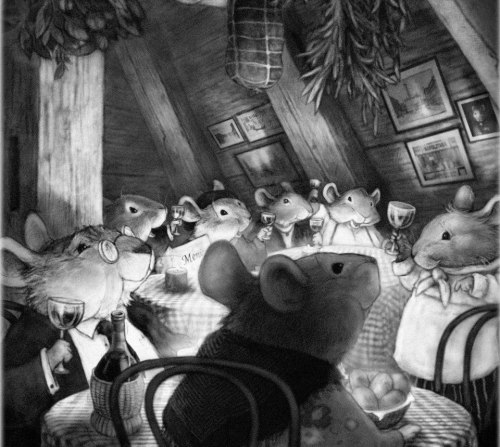
I think Jane Yolen lives near you. Did you know her before you illustrated THE SEA MAN? Was that the only Merman you have illustrated?
I did not know Jane before I illustrated The Sea Man, but of course I knew Jane’s work. We just saw each other at Kindling Words in January and since then have talked about the possibility of working together again. Yes-that was the very first Merman I was asked to illustrate.
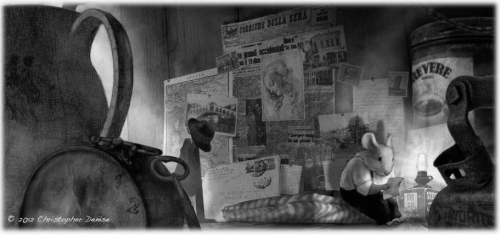
Do they have a studio in your house?
My studio is about 15′ from my back door in a separate building that I re-built just three years ago. For years I had studios in Providence. Downtown is only about twelve miles away from the little beach-side community where we live but the drive home, late at night if I was working on deadline or a film project, was not fun. It was convenient when I was teaching at RISD but I was also missing my wife and the kids. I like to be able to quit at 4:00, spend some time with my family, have a glass of wine, dinner, read to the kids, and put them to bed. After that I walk back out to the studio for another session. Making books is hard work but my family life and walks on the beach keep me anchored and very happy.
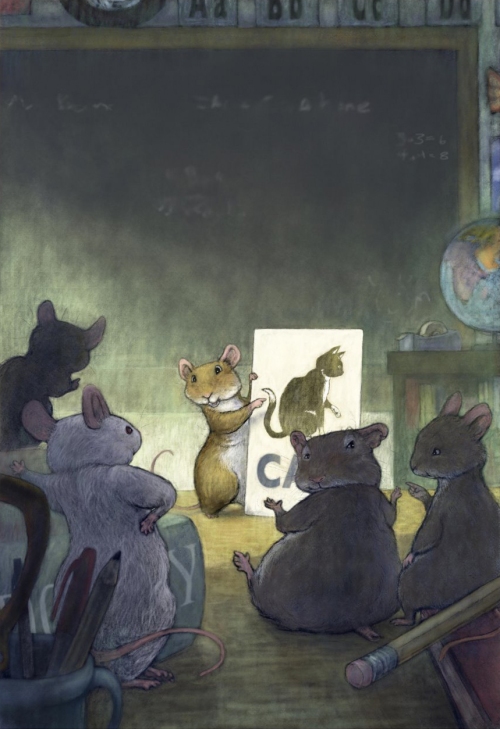
I was able to see some of your wonderful black and white interior drawings that did you do for Rosemary Well’s book, FOLLOWING GRANDFATHER. How many did you do for the 64 page book?
Gosh, I don’t remember-quite a few! I loved working with Rosemary and since then we have become good friends.
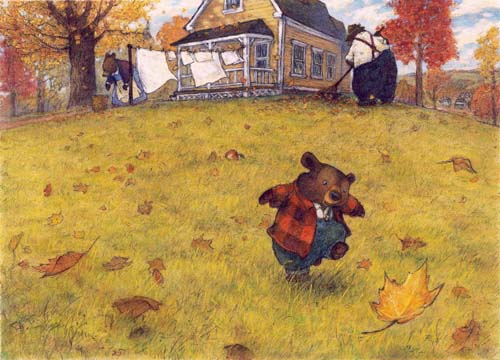
Have you done illustrations for any children’s magazines?
Yes, I think I did work for Ladybug magazine. I may have done work for Cricket.
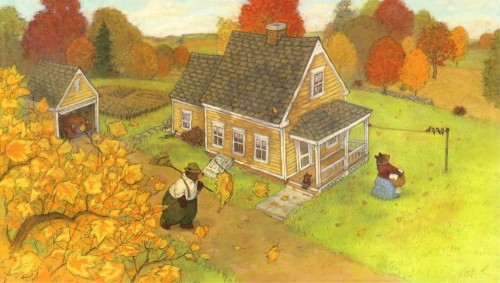
Your new book coming out in May titled, SLEEPYTIME ME is beautiful. How did you get that contract with Random House?
I was working with Elena Mechlin at Pippin and she brought the manuscript to me. Edith’s (Fine) writing is so wonderful. That was another fantastic project. Random House gave me lots of support and complete freedom.
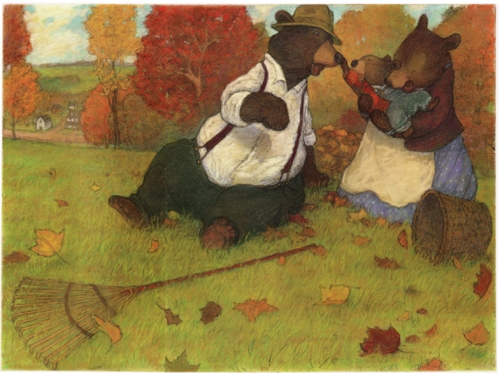
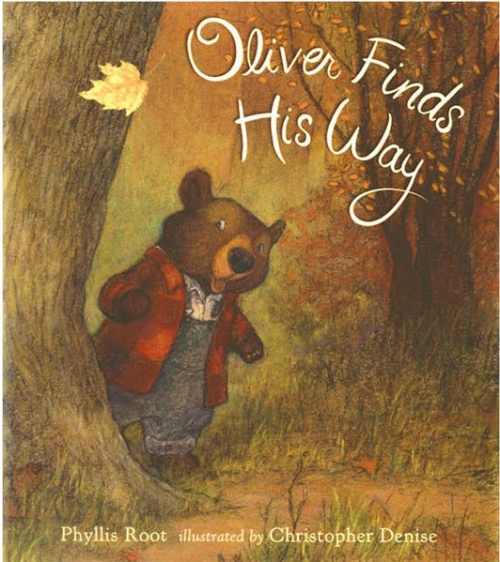
How long did you have to illustrate that whole book?
I created that suite of images in about six months. They were long days but I loved the work.
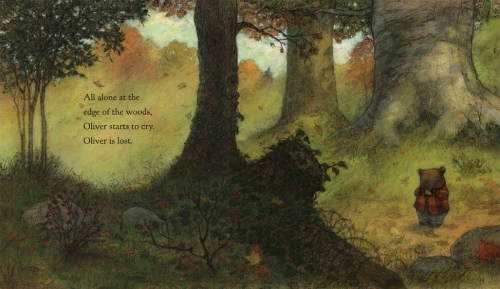
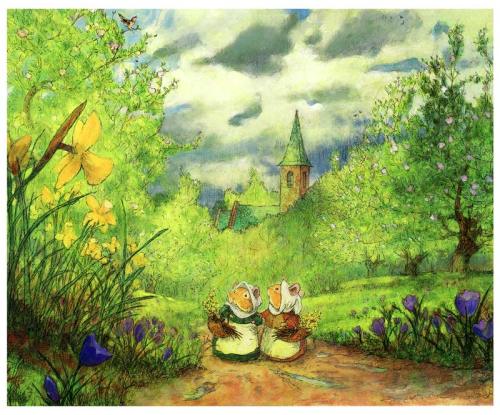
What types of things do you do to find illustration work?
Not so many things personally. Emily, my agent, makes sure that I have plenty on my plate. I work closely with her making sure that we have a plan and chart out the production schedule. Our biggest challenge is leaving some blocks of time off-especially in the summer

What is the one thing in your studio that you could not live without?
My sketchbook-no doubt.
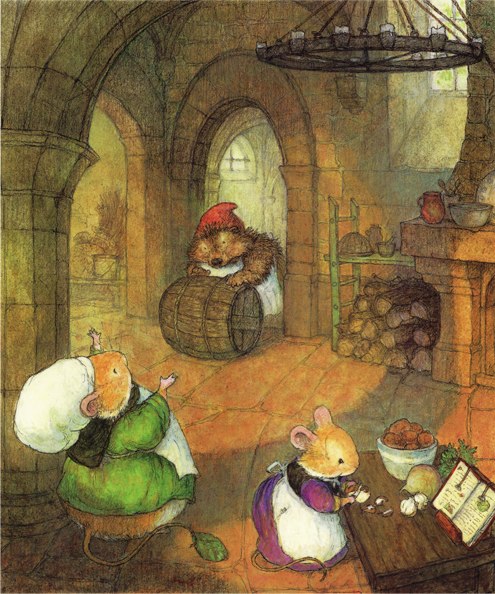
Do you try to spend a specific amount of time working on your craft?
I do try to take some time in the summer to go landscape painting. But in truth I work on my craft every single day. I try to start each session as a novice.

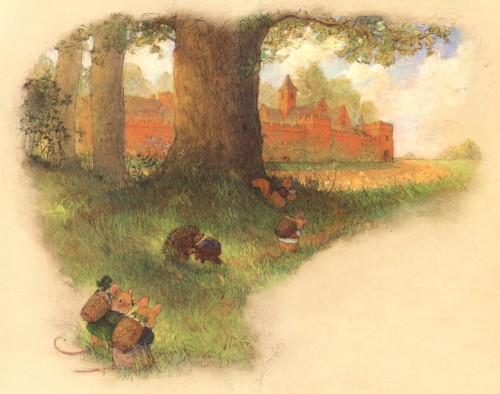
Do you take pictures or do any types of research before you start a project?
I do take some pictures. I browse books ( fine art, photography, other picture books) from my own shelves and the library-seeing what comes to me. The internet, of course, is amazing.
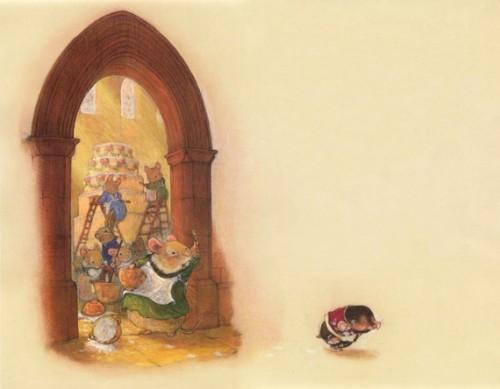
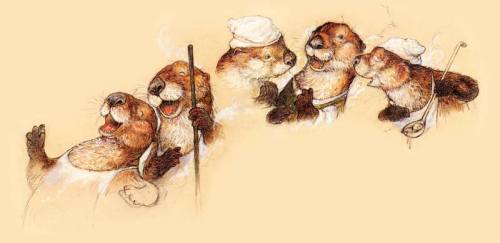
I notice that you are doing the illustrations for Betsy Devany’s debut picture book, SMELLY BABY. Both of you are represented by Emily van Beek. I can’t wait to see the illustrations. Great match-up! How was Emily able to get you two together?
This is one of the great things about Emily. We were talking about what I wanted to work on, scheduling and such and she was already thinking way ahead of me about what would serve us (because we are most definately a team) professionally but also allow me to stretch artistically. She called me up a few days later and asked how I felt about working on something funny and emailed Betsy’s manuscript for Smelly Baby. I read it through and forced my self to wait for ten minutes before I said YES!

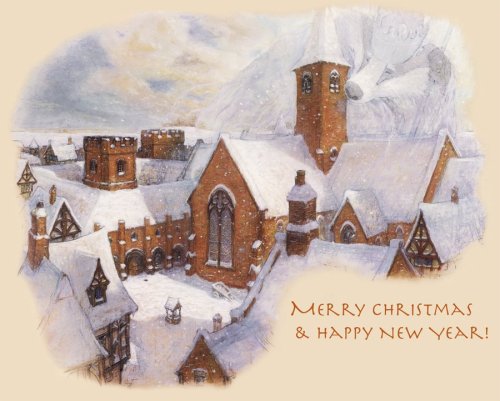
Have you won any awards that you are particularly proud of?
Yes but it has nothing to do with publishing! I was nominated for the Frazier award in teaching at RISD. That nomination was particularly meaningful to me because it is the students who vote for the few nominees that make the cut. That was such an honor because I loved working with such wonderfully talented young artists and I put my heart in soul into teaching those classes. Of course I am grateful and honored when any of my books receive recognition.
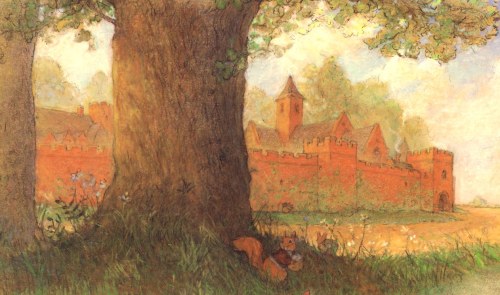
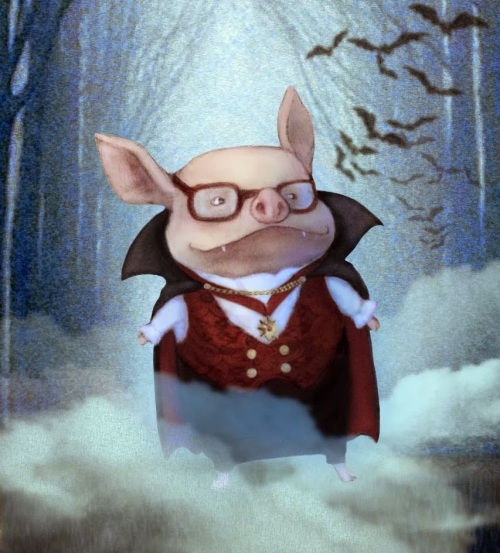
Out of all the books you have illustrated, do you have a favorite?
Another tough question. The books are like my girls, they are all my favorites for different reasons. If I had to choose I would choose four. Pigs Love Potatoes (Anika Denise) Oliver Finds His Way (Phyllis Root), Sleepytime Me (Edith Fine), and Baking Day at Grandma’s (Anika Denise).
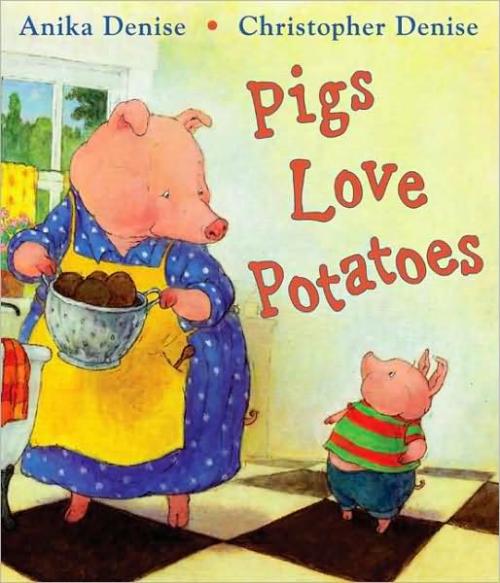
Do you use Photoshop or a graphic tablet when illustrating?
I paint and draw in Photoshop using a medium size wacom intuos tablet and pen.
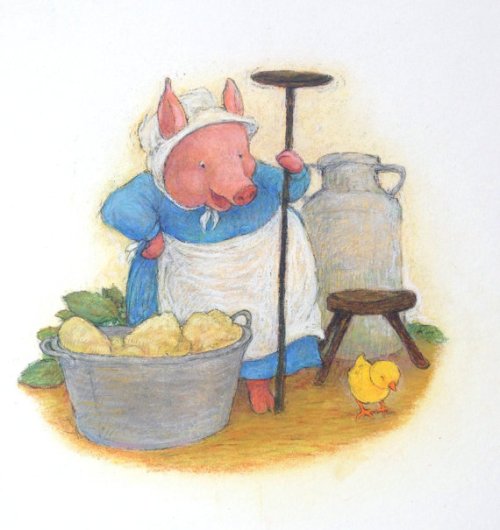
Do you have any career dreams that you want to fulfill?
I am in the process of doing just that! I spend my days drawing pictures and coming up with stories. How great is that?!
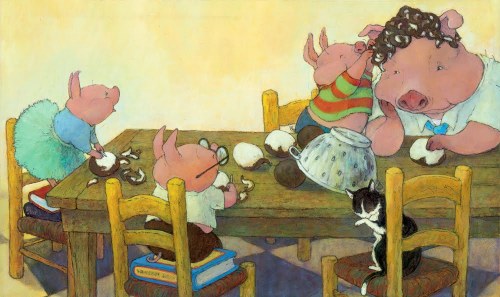
What are you working on now?
Firefly Holly ( Simon & Schuster) an illustrated novel by Alison McGhee, and Betsy Devany’s picture book Smelly Baby (Henry Holt & Company)
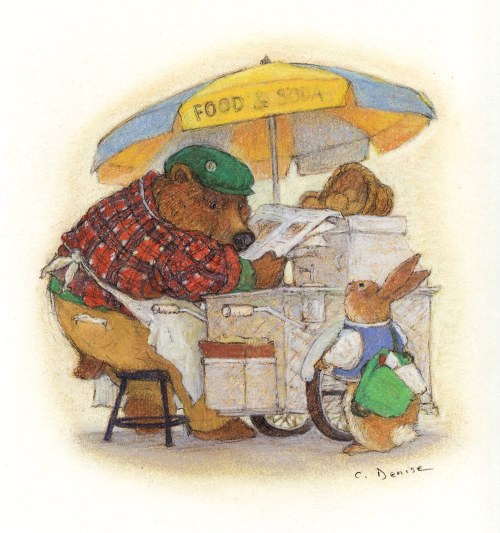
Do you have any material type tips or software type tips you can share with us? Example: A new product that you’ve tried – A how to tip, etc.
I think my breakthrough with digital tools came when I stopped trying to “learn” the software and started to think of using photoshop to replicate my traditional process. To use the program in the same way as I used my traditional tools. Same layering process, same ways of applying color. Make the digital tools work for you-mistakes and all. In the end you have more flexibility and can change things. Also-be brave and create your own brushes to get the effects that you want.
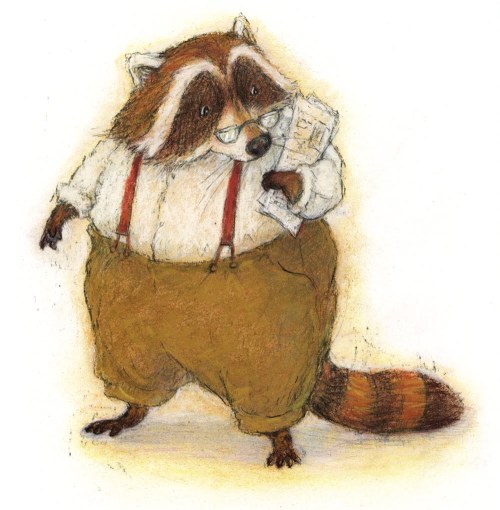
Any words of wisdom on how to become a successful writer or illustrator?
Trust your instincts. Do what you need to do to get by but after that point do not be afraid to say no to something if your heart is not in it.

Thank you Christopher for sharing your talent, process, expertise, and journey with us. Please keep in touch and let us know all of your future successes. We would love to hear about them.
You can visit Christopher at: http://www.christopherdenise.com You can link over to his blog and his Etsy shop where he sell original artwork.
facebook at: http://www.facebook.com/pages/Christopher-Denise-Illustrator
I really appreciate it when you leave a comment, so please take a minute to leave Christopher a comment. Thanks!
Talk tomorrow,
Kathy
Filed under:
authors and illustrators,
demystify,
illustrating,
Illustrator's Saturday,
inspiration,
Tips Tagged:
Anika Denise,
Baking Day at Grandma's,
Christopher Denise,
Patty Gauch,
Sleepytime Me 


By: Kathy Temean,
on 4/8/2014
Blog:
Writing and Illustrating
(
Login to Add to MyJacketFlap)
JacketFlap tags:
Agent,
Advice,
authors and illustrators,
How to,
Questions and Answers,
demystify,
Asking opinion,
Ask Kathy,
Julia Rosenbaum,
Publishing Industry Answers,
Add a tag
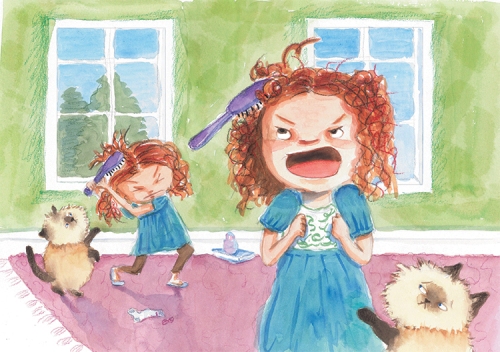
For all you writers and illustrators who have days where you feel like the publishing industry could make you stop, scream and pull their hair out, this cute illustration sent in by Julia Rosenbaum is for you.
Julia has always wanted to be a children’s book writer/illustrator…and so she went to law school. A few years after that interesting episode in her life, she learned how to use Photoshop and became a graphic designer. She is now working on her original dream: writing picture book manuscripts and creating illustrations. You can find her online at juliadraws.com and on Twitter @julia_draws.
Here are a few more Answers to the Questions you sent in and the answers from the Writer’s Retreat the other weekend with Agent Sean McCarthy and Associate Publisher at Penguin Putnam, Steve Meltzer.
1. Because agents now often don’t respond if they aren’t interested in a query, that makes almost imperative to send simultaneous queries. Is ten to a dozen too many to send out at once?
The consensus was to send ten queries at a time. No one thought you should send one query at a time and wait to hear back before sending your work out to someone else. Here are my thoughts about other similar questions I get asked: You may get five agents asking to see your full manuscript from the query letters you send out. Some may ask for an exclusive submission. If they do, you will need to way their request against the other agents. That exclusive submission request might throw that agent out of the running or they might be at the top of your list of agents you would want to represent you. If they are, then make sure you find out how long they expect to have an exclusive for your manuscript.
Is this amount of time acceptable? It may be, but now you know how to proceed. I personally think six weeks would be my limit, other people may be willing to wait three months. As long as both of you are on the same page it should work.
What if you send out your full manuscript to five agents or editors and one gets saying they are interested, before you say yes to them representing you and blow off the others, you should email saying you haven’t heard back from them and another agent is interested in offering you representation. Many agents appreciate you letting them know so they can pull your manuscript out of the pile to see if they are interested in your story. No need to do this if an agent stated up front that if you haven’t heard back in three weeks they are not interested.
Say you submit to an agent who turns around and works with you, offers a lot of advice that you use when revising your manuscript, and asks to see it again, IMO, you should make sure you resubmit the manuscript to them, before offering it to another agent.
If you have submitted the manuscript to editors, you should always make sure the agent offering representation knows who has seen it right up front. You don’t want to get in the position of signing a contract with the agent and then have them say they didn’t know it had been read by numerous editors in the industry. They might be thinking they could sell it to the same people you already sent it to. Now you have someone who doesn’t want to work with you and may even cancel the contract with you. Supposed this happens after you have turned down another agent who was interested in your work. Now you have lost out on two agents at one time. Oh yes, this can happen and it doesn’t matter if the agent should have asked these questions, you are now the one who is on the losing end of this scenario.
2. What’s the best way to label a manuscript/book that falls on the borderline between middle grades and young adult? (Think ages 10 to 14. For example, I’m talking about a horsey book, and that is the age at which the most girls are the most horse-crazy, and the best time to market such a book to them.) Would agents/editors want to see it called upper middle grades? Tween?
Sean McCarthy and Steve Meltzer said don’t put MG or YA in the query, put the age group and let them decide where it fits. The other idea you can use is to go to the book store and peruse the shelves. Where would the store shelve your book? What are the titles of the other books on that shelf? You could include a couple in your query letter.
3. What amount of books do you need to sell to have a publisher think your book was successful?
The general number was 20,000 copies, but it could be lower. It depends on the amount of your advance and the projected amount of sales the publisher expects after all there meetings and calculations. As Steve pointed out, a publisher who expects to sell a million copies of a book and only sells 600,000 copies might consider that book a failure. While a book that they projected 10,000 sales and sells 20,000, might be considered a great success.
4. I read on your blog to only use one space between each sentence in your manuscript. I had someone tell me they have asked editors and were told it was okay. Would you double check with Sean McCarthy and Steve Meltzer on this?
I did and both said it would not stop them from reading your manuscript. But I will not tell you that not doing this is okay, because I am trying to get you to do things according to the standard. My goal is to tell you how to do things that will make sure no one will find fault with. If 50% or even 20% of the editors and agents could pick up your manuscript and go on to the next on sitting on their desk because of the extra space, then I say, “Let’s do it right, so you are only judged on the content of your writing.” Over the years, I know little things can make a big difference.
5. I never heard of using capital letters the first time a character is mentioned in a synopsis. Would you ask about that at your retreat?
This is another one that would not stop Sean and Steve from reading your synopsis. I had said that I didn’t think this was a deal breaker when I told you how to format your synopsis, but again that is the standard. It makes it easier for the editor or agent to read, which shows you care about them and that you approach your writing as a professional who knows the industry.
Talk tomorrow,
Kathy
Filed under:
Advice,
Agent,
Asking opinion,
authors and illustrators,
demystify,
How to Tagged:
Ask Kathy,
Julia Rosenbaum,
Publishing Industry Answers,
Questions and Answers 


By: Kathy Temean,
on 4/5/2014
Blog:
Writing and Illustrating
(
Login to Add to MyJacketFlap)
JacketFlap tags:
Agent,
Advice,
Editors,
Conferences and Workshops,
demystify,
David L Harrison,
Publisher Steve Meltzer,
Agent Sean McCarthy,
Ask Kathy,
Hightlights Foundation,
Add a tag
 David Harrison is conducting a Highlights Foundation workshop:
David Harrison is conducting a Highlights Foundation workshop:
Poetry for the Delight of It
September 29 – October 2.
David’s first book for children, The Boy with a Drum, was released in 1969 and eventually sold more than two million copies. In 1972, David won national recognition when he received the Christopher Award for The Book of Giant Stories. Since then David has published seventy-seven original titles that have sold more than fifteen million copies and earned numerous honors.
From budding poet to published veteran, if you like to think, talk, write, and share poetry, this one’s for you. Don’t wait too long to decide, this workshop sold out last year.
Here is the agenda:
Session 1: The Study of Poetry
Session 2: Verse
Session 3: Are You Funny?
Session 4: Skype Guest Kenn Nesbitt
Session 5: Revising and Rewriting
Session 6: Skype Guest Jane Yolen
Session 7: Performing Your Work
Session 8: Tips on Marketing
Session 9: Self-Publishing
Session 10: Poetry Editor Rebecca Davis
Session 11: Becoming an Expert
Session 12: Open Forum
Session 13: The Big Performance
Session 14: Setting Doable Goals
Wrap Up, Pictures, Goodbyes
Individual activities will include time to:
- Practice writing what you’re learning
- Be still with your thoughts
- Start at least three new poems
- Meet one-on-one with your workshop leader
- Have your work critiqued by your workshop leader
- Fun, impromptu gatherings by the fire to share poems
- Chance to learn from others
Here is the link: http://www.highlightsfoundation.org/workshops/poetry-for-the-delight-of-it-2014
Below are a few of the questions and answers I received at last weekend Writer’s Retreat with Agent Sean McCarthy and Publisher Steve Meltzer.
1. When formatting a manuscript: Do you know of any rule that says you must NOT indent the first paragraph of a new chapter? What do you think?
Both Sean and Steve, thought I was crazy when I asked this and couldn’t understand why this question was being asked. I explained that when you read a book, the first paragraph of each chapter is not indented. Apparently this is something that has carried over from the old days in publishing. It is nothing that a writer needs to do when formatting their manuscript.
2. What do you think of prologues? Use them or lose them?
Both Sean and Steve agreed that it is okay to use a prologue if it is important to telling the story. The word, “Important” is the key. Could the same story be told without the prologue? Is it something that the reader needs to know and will it tie into the end of the novel? They said editors worry about them, because many readers skip the prologue.
3. Are there any conventions for labeling manuscripts/books that mix genres? (For example, a series that is historical/science fiction/fantasy.)
The word for mixing these different genres is called, “Speculative Fiction.”
4. Because agents now often don’t respond if they aren’t interested in a query, that certainly makes it acceptable, almost imperative, to send simultaneous queries (although with each obviously tailored to a particular agent/agency). Is ten to a dozen too many to send out at once?
There was total agreement from everyone that you should not submit or query to only one agent. Ten seemed to be the standard amount to send out at one time.
5. Underlining makes it clearer to copyeditors and typesetters what needs to be italicized, but do agents have a preference whether the manuscript uses the italic or the underline function of the computer to indicate what will ultimately be italicized?
This was another one that didn’t seem to matter to Sean or Steve. Just italicize and don’t underline, since that is more standard. They weren’t worried about that detail, since they are paying the copyeditors to catch those type of things.
More Answers during the week, so check back.
Talk tomorrow,
Kathy
Filed under:
Advice,
Agent,
Conferences and Workshops,
demystify,
Editors Tagged:
Agent Sean McCarthy,
Ask Kathy,
David L Harrison,
Hightlights Foundation,
Publisher Steve Meltzer 


By: Kathy Temean,
on 4/4/2014
Blog:
Writing and Illustrating
(
Login to Add to MyJacketFlap)
JacketFlap tags:
Interview,
picture books,
inspiration,
Process,
authors and illustrators,
How to,
Cartoon Network,
demystify,
Illustrator's Saturday,
Gideon Kendall,
Add a tag
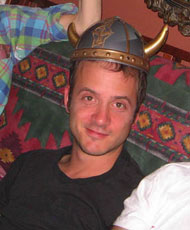 Gideon Kendall was born in Austin, Texas and spent his childhood on a commune deep in the backwoods of West Virginia. He attended high school in Philadelphia, PA and moved to New York City to attend art school. Since receiving his BFA from The Cooper Union in New York City (1989) he has been working as an illustrator, animation, designer, and musician in Brooklyn, NY.
Gideon Kendall was born in Austin, Texas and spent his childhood on a commune deep in the backwoods of West Virginia. He attended high school in Philadelphia, PA and moved to New York City to attend art school. Since receiving his BFA from The Cooper Union in New York City (1989) he has been working as an illustrator, animation, designer, and musician in Brooklyn, NY.
Gideon was the production designer (backgrounds) on “Pepper Ann”, a Saturday morning cartoon show on ABC. For five years (the duration of the series), he was the production designer (backgrounds) on “CODENAME: Kids Next Door” on the Cartoon Network. He has also designed backgrounds, props and characters for many other television shows, including Robotomy, Stroker & Hoop, Chuggington and Word World.
Gideon has illustrated articles and record covers for companies such as The New York Times, Puma, Children’s Television Workshop, Scholastic, Geffen, and College Music Journal. He has exhibited his artwork at a variety of galleries including Ethan Cohen Fine Arts and PS122 in New York City.
Gideon has been involved in many musical/performance art projects, and has toured the country with his band, Fake Brain. The band also wrote and performed the theme song for “The Kids Next Door” on Cartoon Network. Most recently he wrote, performed in, and created sets and animation for a multimedia comedic performance entitled “Dr. Wei-Wei & The Fake Brain” which was performed at The Bowery Poetry Club in New York City in 2006. His current project, The Ditty Committee, performs regulary in and around New York City.
Here is Gideon showing and discussing his process on his book cover, ELLIOTT and the LAST UNDERWORLD WAR:
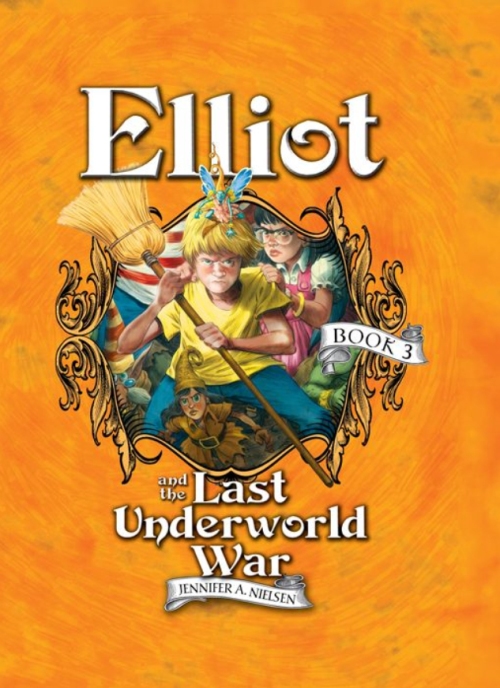
The image is entirely digital. It took probably about 3 days total, but of course it was spread out over weeks of approvals, edits, etc.
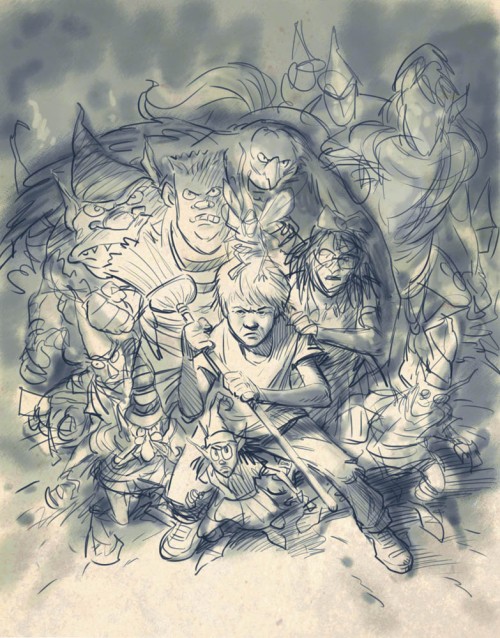
This is the rough, obviously. Just trying to sell the editor on the basic idea and work out for myself the composition and lighting. I always use tone on my sketches because I need to get a sense of the lighting. Light and shadow are essential for both clarity, focus, and drama. In the story, Elliot, the main character uses a magic glowing broom at a crucial point in the story. This was a great device for lighting this scene.
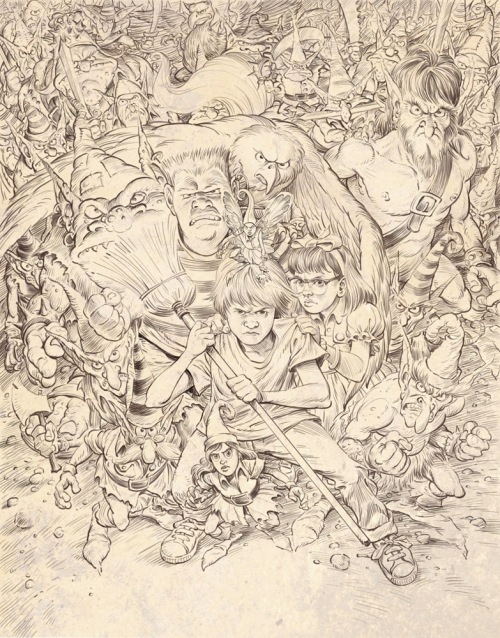
Here is where I set aside the lighting for the most part and focus on delineating the image. Although I love getting carried away with details and hidden jokes I try not to loose focus on the characters. Sometimes this comes easy. Other times not so much. The peripheral characters fell into place with little effort but I really struggled with aspects of Elliot. Finding that sweet spot of anger and determination while still keeping him cute was a challenge and I also had a hard time with getting his hands and arms right. I had my wife take pictures of me in the pose to help get it right and I still struggled.
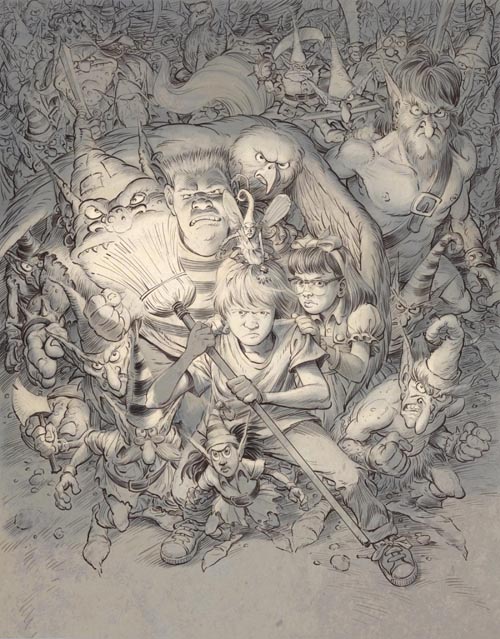
Now I introduce the lighting. This layer may or may not be used in the final art, but either way it helps me to finalize the composition.
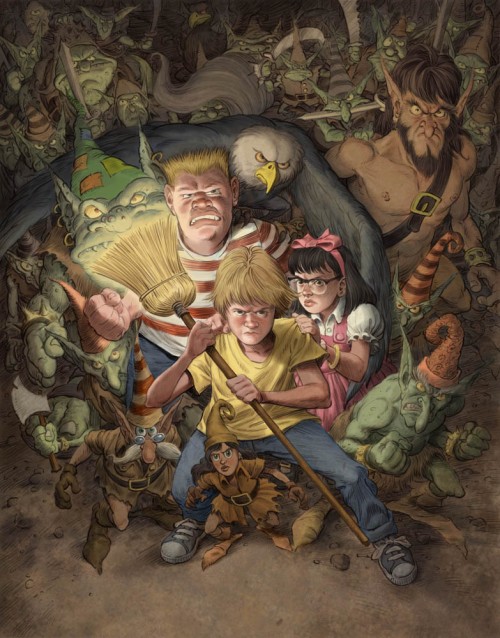
At this point I change the line drawing into a multiply layer and put it on top. I hide the tone layer and work up the color to a near-final state.
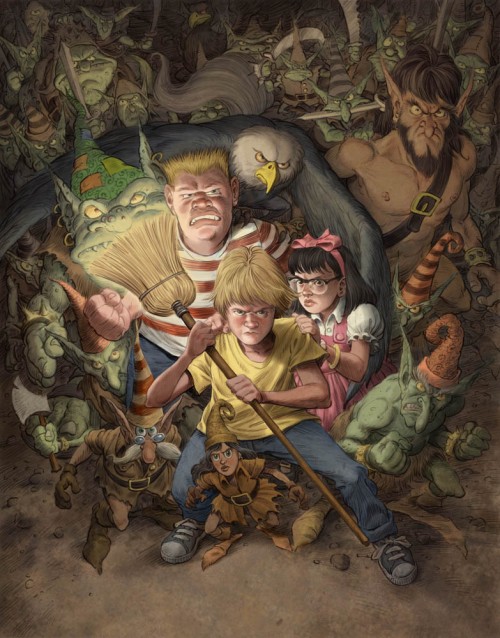
Then I add a layer of highlights on top of the line layer.
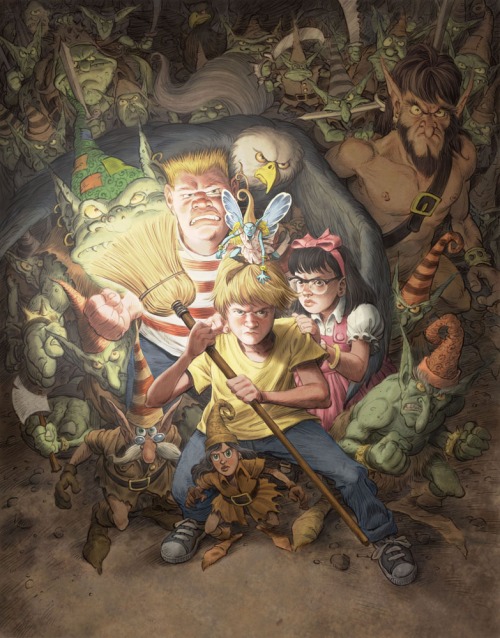
I kept the image of the pixie as its own element so that I could control her luminosity separately. I do her line work, color, and rendering and then balance her against the glow of the broom.
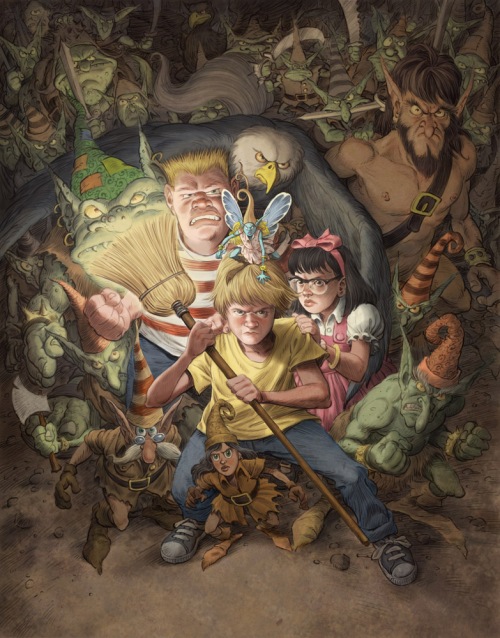
I wasn’t pleased with the way the broom was looking so I made a new drawing of it and colored it in a way to give it bit more 3-dimensionality. I refined the highlights and played around with the luminosity of the broom, and then I was done.
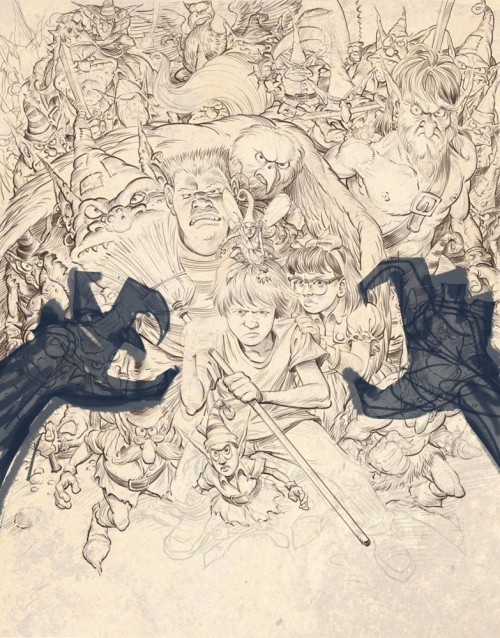
Early on in the process I played around with having the demon’s claws in the picture, thinking it might heighten the sense of confrontation. The editor thought it complicated things unnecessarily and I don’t disagree.
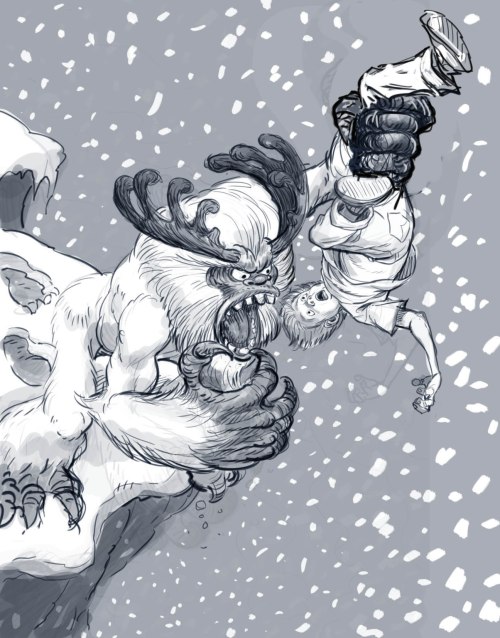
Just for kicks, an earlier cover sketch. This snow monster was removed from the story so I had to start over. Probably for the best.
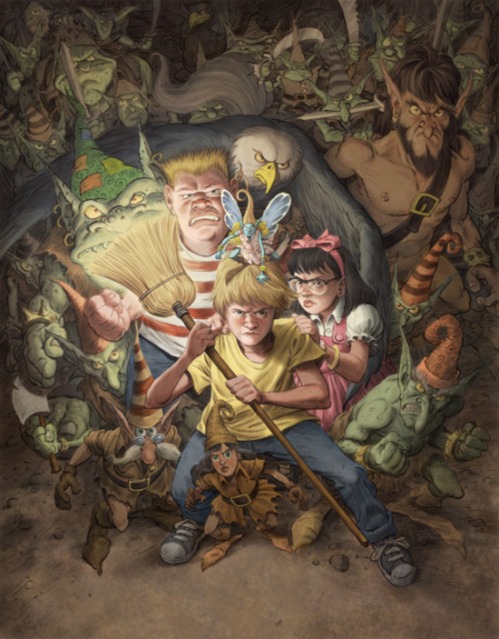
Here’s a detail shot just for the hell of it.
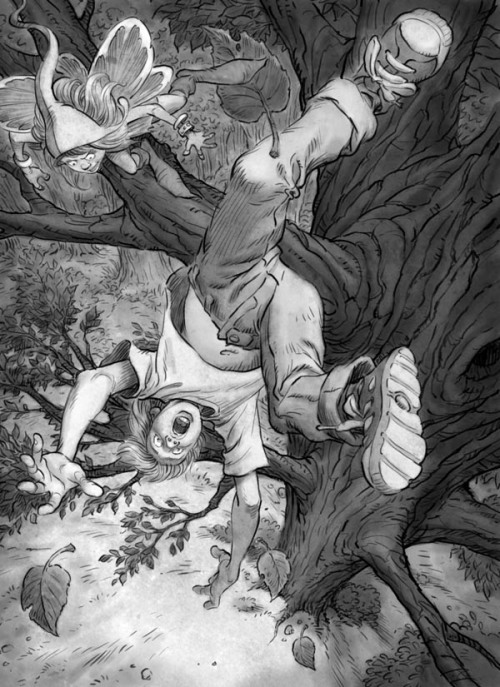
My favorite illustration in this book.
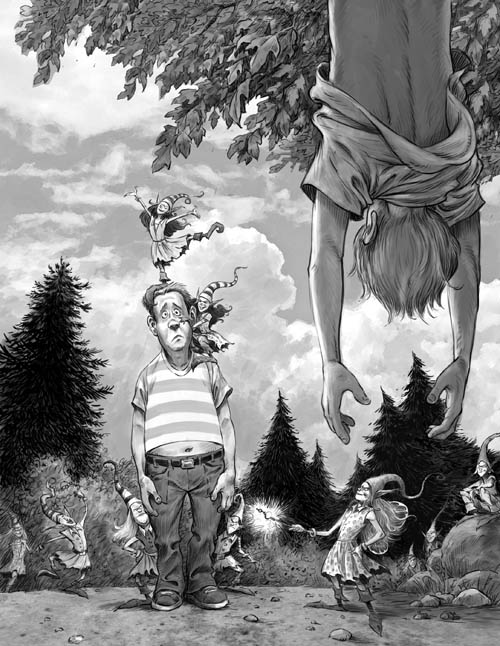
When did you first know that you were good at art and wanted that for your future?
My mom says that she put pens in my crib when I was a baby and I drew cars and cities all over my sheets. so I guess it was decided pretty early on. My early loves were Dr. Seuss and Marvel Comics.
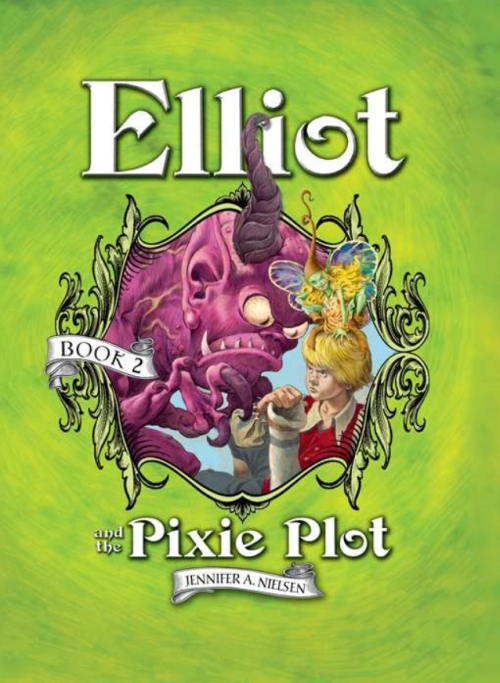
Did you study art at The Cooper Union in New York City?
Yes. I have a BFA from Cooper.
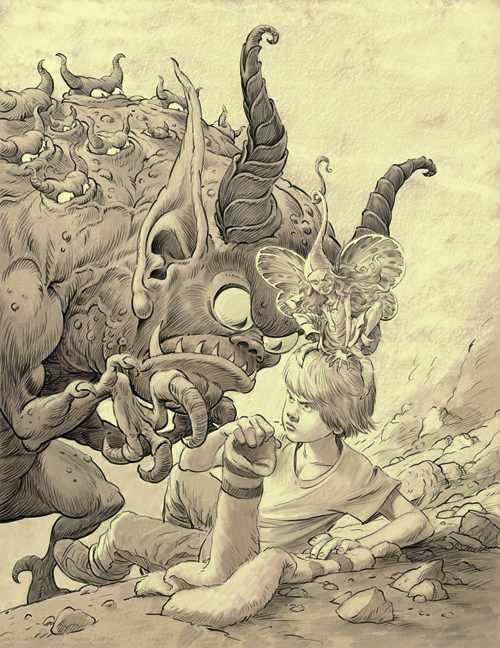
What made you think of putting little Goblins in the big Goblin?
I was just trying to think of how to make him as creepy as possible. It’s an idea similar to themes in some of my “grown up” art.
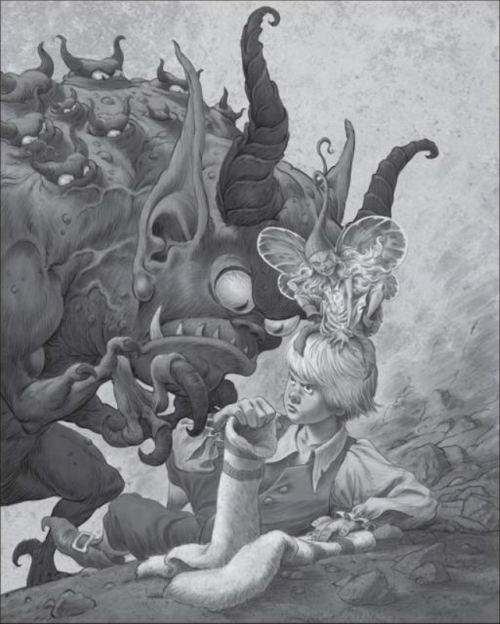
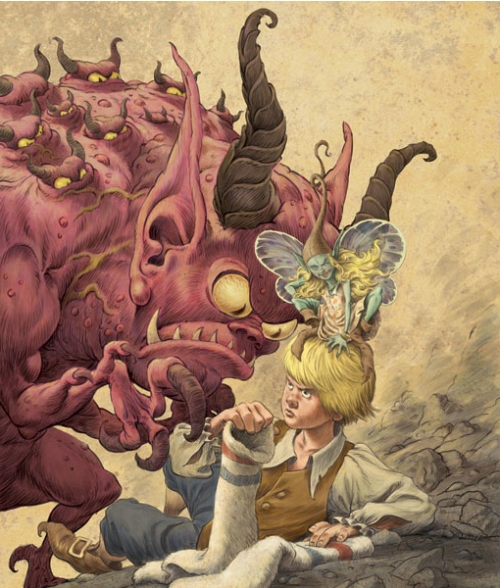
What were you favorite classes?
Painting and drawing. I also enjoyed printmaking, particularly intaglio etching.
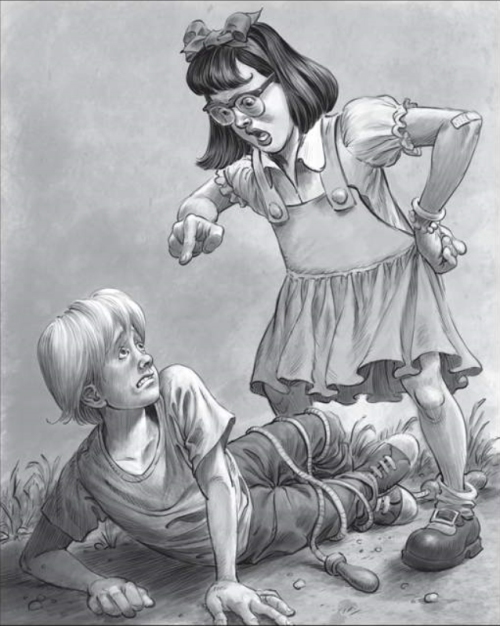
What was the first thing you illustrated and got paid for doing?
I got hired by a local paper in high school to do some courtroom illustration. First and last time I ever did that kind of work. Judging from your next question I think you mean post-collegiate…Hmm. The thing is I went to a strictly “fine art” school. They frowned on illustration, so I had to bury my love of such things.
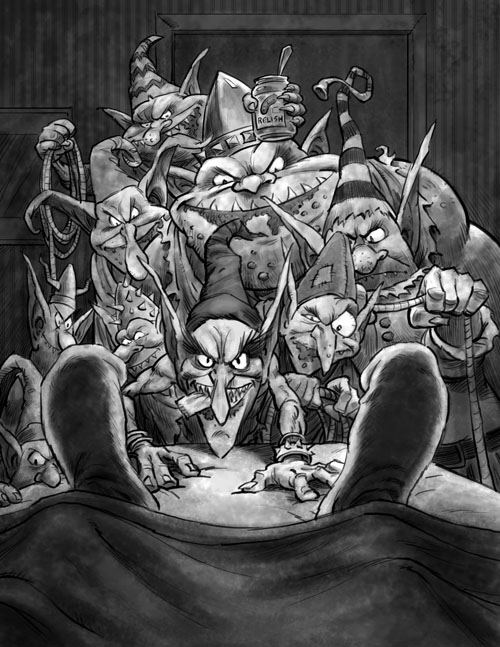
What was your main painting technique back then?
Oils. I did a semester abroad in Italy my junior year and learned the basics of old-fashioned glaze techniques. I’ve loosened up a little since then but my painting technique has always been pretty formal.
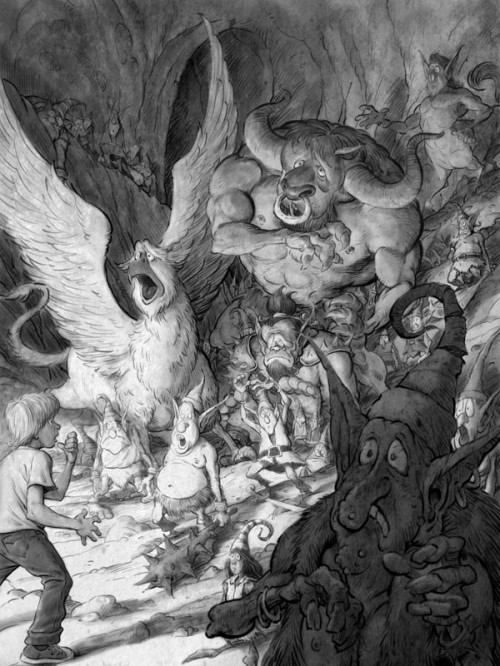
Have the materials you used changed over the years?
Completely. I work almost entirely digitally now. Oil painting is reserved for my personal enjoyment or for the rare occasion when budgets and schedules are generous.
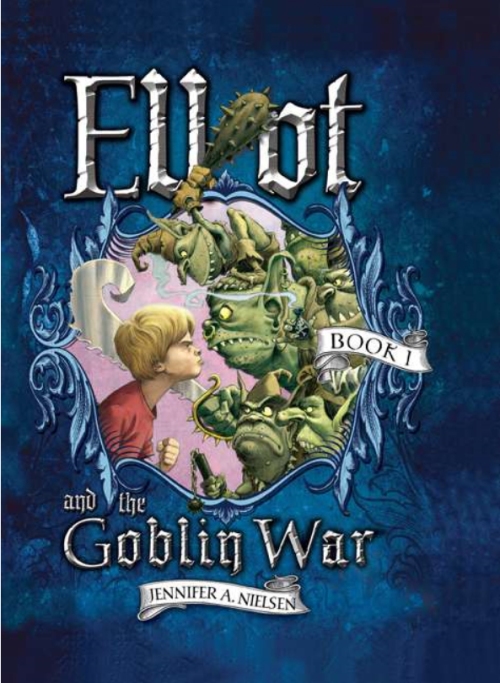
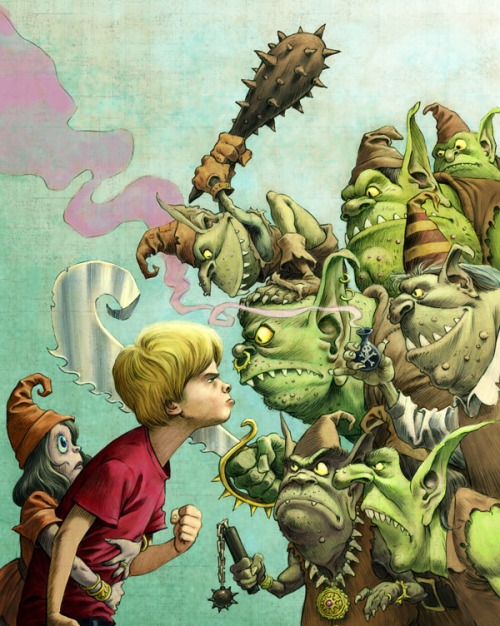
Has the style of your illustration change or evolved into a new style?
I have developed a few distinct styles for the different kinds of work that I enjoy doing. traditional children’s book illustration is at this point only a small part of what I do. among other things I also do black and white chapter book illustrations, puzzle pictures for highlight’s Magazine, maps and diagrams for books, posters, advertisements, etc. I also do “whiteboard” animations as well as graphic novels and comics. Unless you’re hugely successful at one thing, you gotta be a jack of all trades to survive. If one of the things I do really took off I’d be happy to focus more, but in the meantime I do enjoy the challenge.
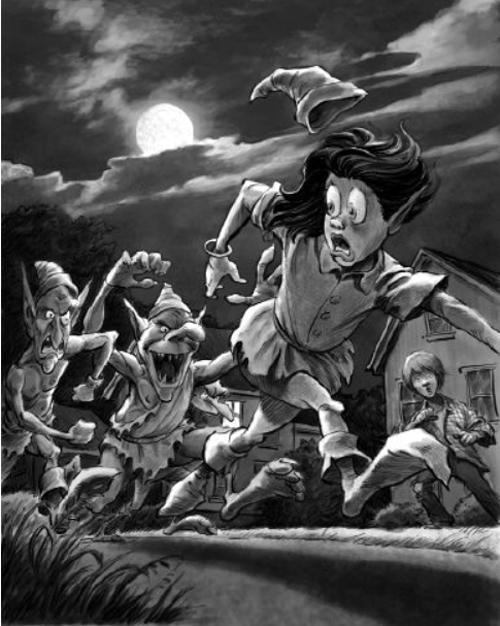
Since you graduated right as the Internet and computers were taking hold. Did you jump into experimenting with digital art at that time?
No, the computer was primarily a word processor and mailing label machine for me for many years. It wasn’t until the late “90′s that I began doing some digital color on my drawings and then the big leap was when I got my first Cintiq in ’06.
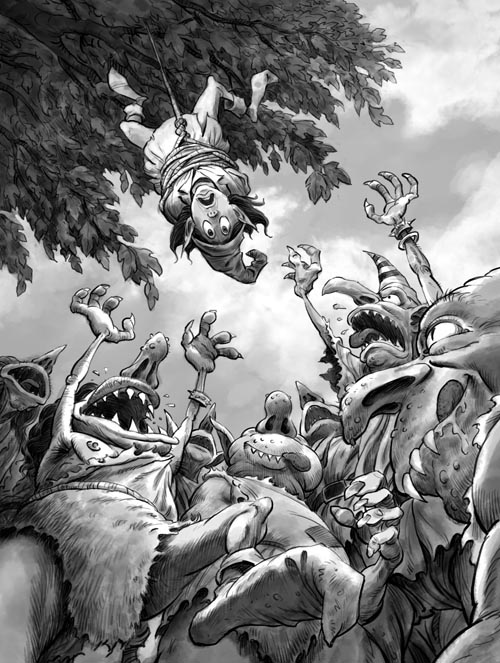
Do you own and use graphic tablet? If so, which one?
A few months ago I got the Cintiq 24HD touch and I’m in love with it.
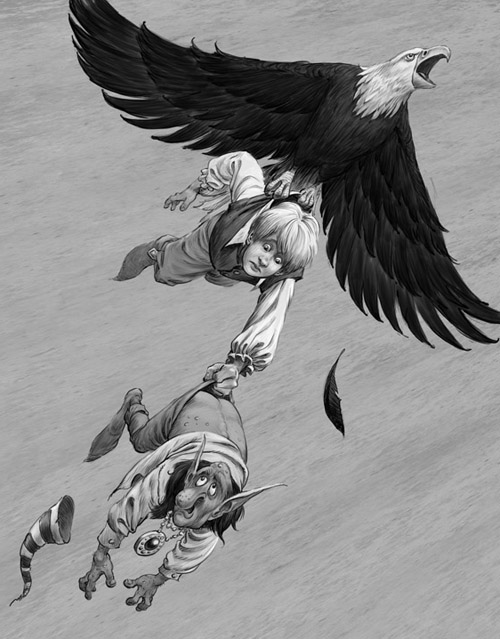
What was your first job after your graduated?
I tried to do the art gallery thing; working as an installer and packer/shipper. It was awful. The people were vain and pretentious and I felt alienated and bored. I got laid off. Freed from the shackles of fine art education/employment, I went back to my early loves: kids books and comics.
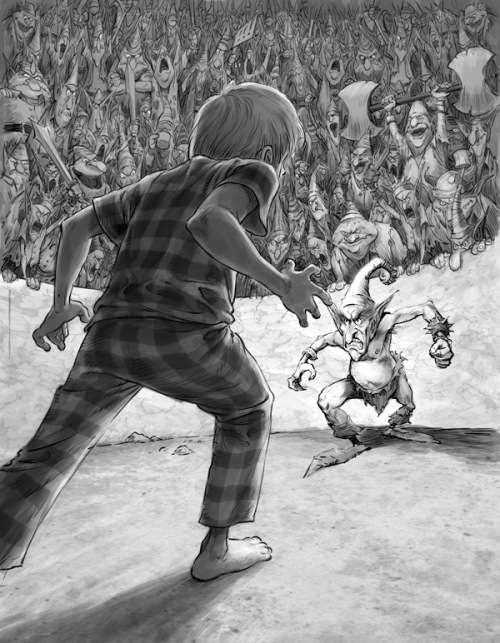
What kind of creature is Elliott going to fight?
Those guys are goblins. The big red/pink creature is the demon Kovol, Elliot’s main nemesis.
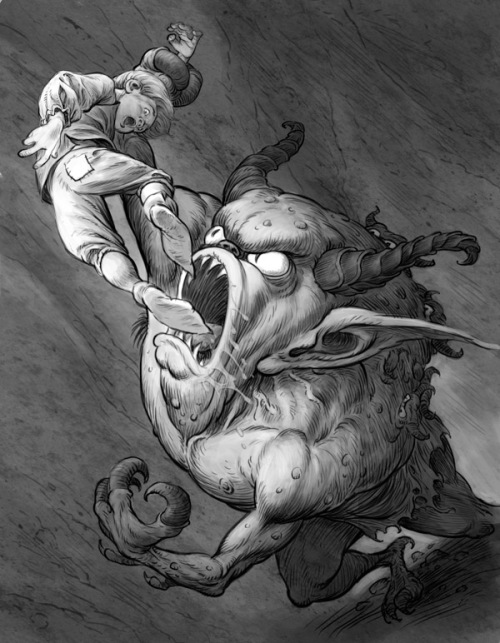
I see you do a lot of black and white illustration. Is that because there is more available work for that?
I wouldn’t say there’s more of it, its just that I’m well-suited for it and I’ve found that I like doing work for older kids (less cutesy stuff, more monsters and weird stuff) and I guess there is more B&W work in that market.
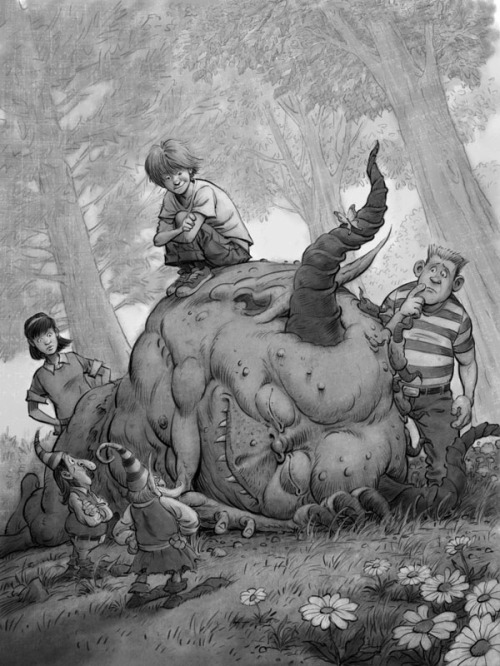
Have most of your comic book art been done for magazines?
No. I haven’t done much comics work for paying clients. I wouldn’t mind it, though. I’m having a great time working on my graphic novel and it would be fun if it led to other opportunities.
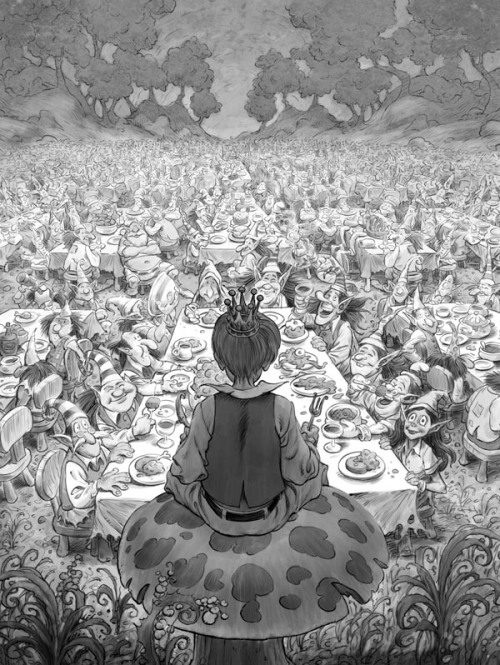
How did you hook up with Ronnie Herman Agency? How long has she represented you?
Way back in the early ’90′s my friend Ian Schoenherr set up a meeting for me with Ronnie when she was an editor at Penguin. At the time my “portfolio” was a mess, consisting of a hodgepodge of different styles, none of them particularly well-executed. Ronnie kept one sample from my portfolio: a painting of a daddy rabbit reading a bedtime story to a baby rabbit. I never got a call from Penguin, but several years later when Ronnie retired from Penguin and started her agency, she remembered that image and called me. She took me on and was very patient with me and helped me develop a cohesive portfolio.
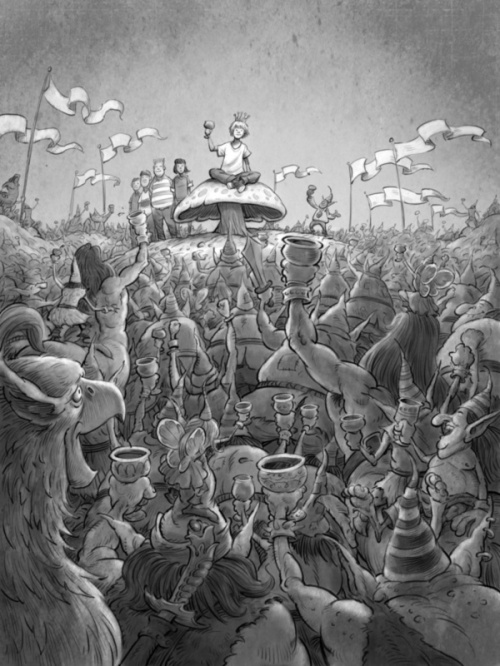
How did you get your first book contract?
Ronnie showed my samples around for a couple years before she got anyone to give me a book project. Eventually Albert Whitman hired me to illustrate Littlebat’s Halloween Story. Not sure what samples got that gig. Interestingly, it was a little painting of a hamster driving a sportscar that got me the Dino Pets gig. That one’s a mystery to me but I’m glad it worked out.
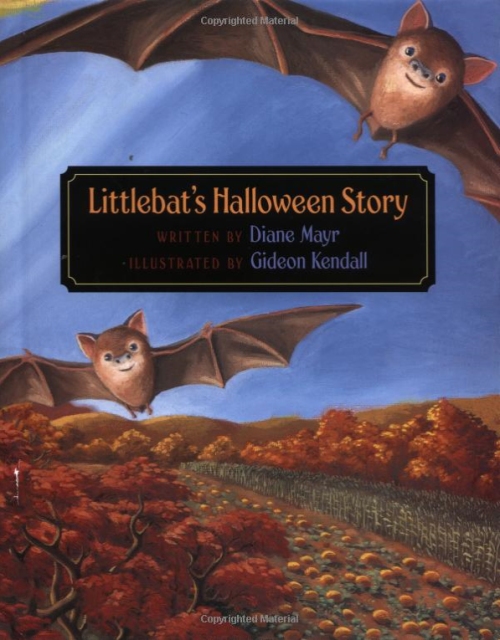
Was Littlebat’s Halloween Story the only picture you have illustrated?
No, I’ve done three. Littlebat, Dino Pets, & Dino Pets Go To School.
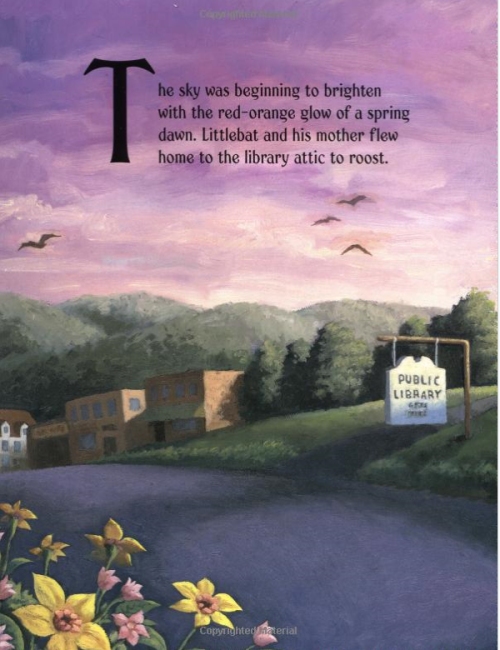
I see you have two books published with Sterling. How did those contracts come about?
Charlie Nix, An old friend from college contacted me about doing the cartoons for those books. He designed the books.
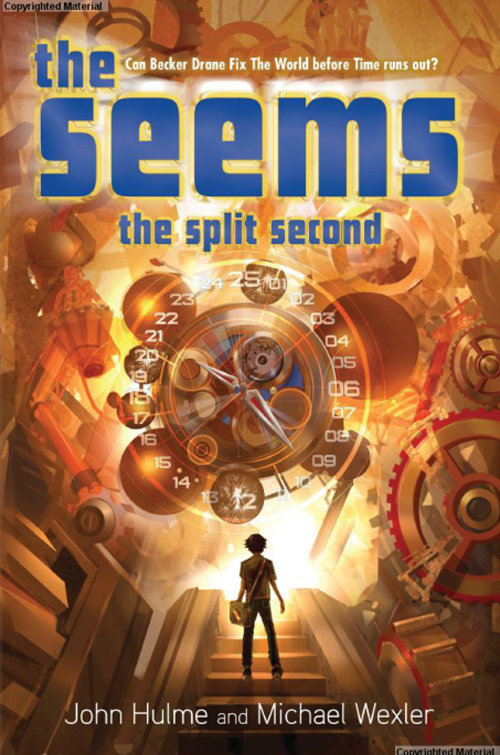
Did you know that it was a two-book deal at the time?
We were pretty sure, but it wasn’t guaranteed.
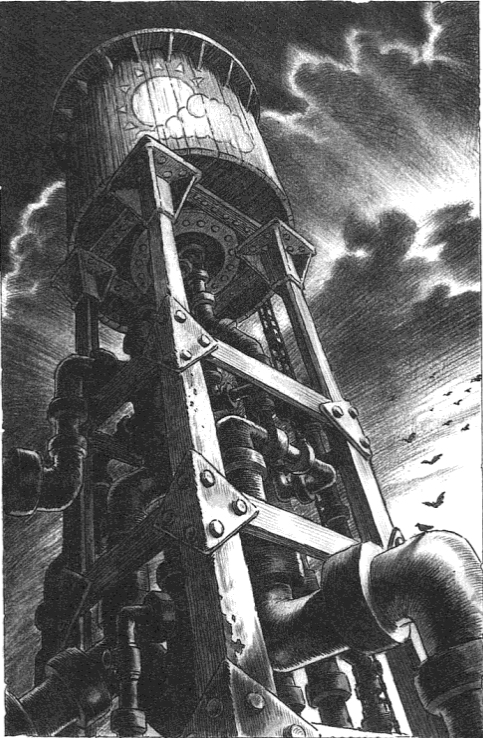
How did you get to do The Seems series?
Oh boy that’s a long story! Here goes: I was introduced to the authors by a mutual friend who thought we’d make a good creative team. We discussed making a bedtime themed picture book and threw around ideas for a while. We eventually decided on a pillow fort theme and put together a pitch. No one bit on it and I forgot about it but Mike and John didn’t give up and over the next few years they expanded the idea into what eventually became The Seems. Bloomsbury bought it and the authors pushed hard to have me brought in as the artist. They eventually went with someone else for the covers which pissed me off, but I had a great time collaborating with Mike and John and making those pictures. I put a lot into those images. We actually got a movie deal out of it which was a nice windfall but as usual that never went anywhere.
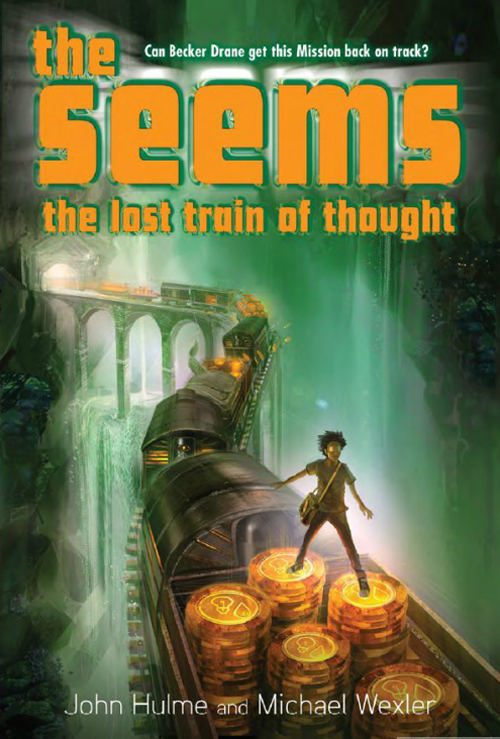
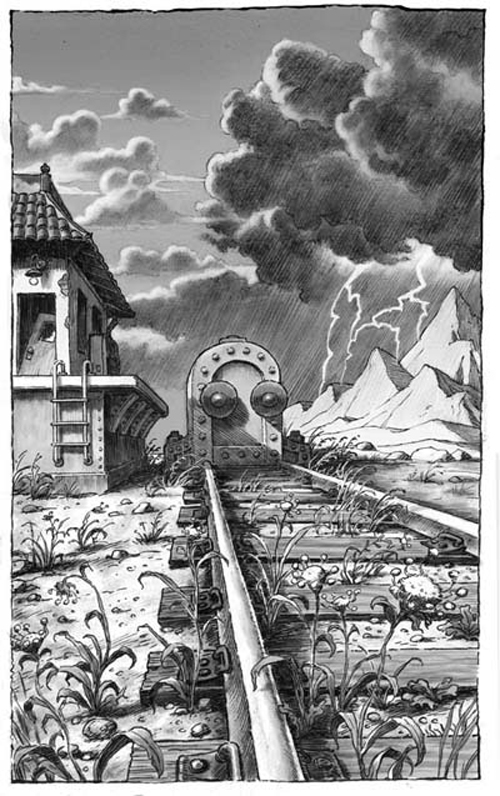 Did you know it was going to be a series when you illustrated the first book?
Did you know it was going to be a series when you illustrated the first book?
The author’s plan was for it to be at least a 3-book series. Of course we all hoped it would go far beyond that….
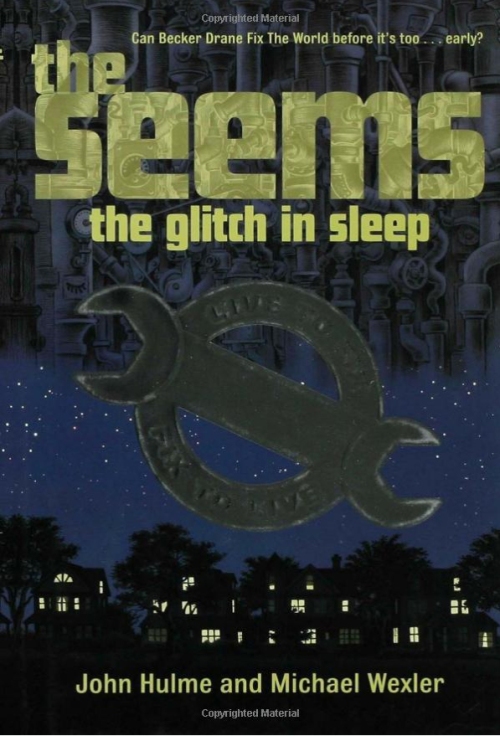
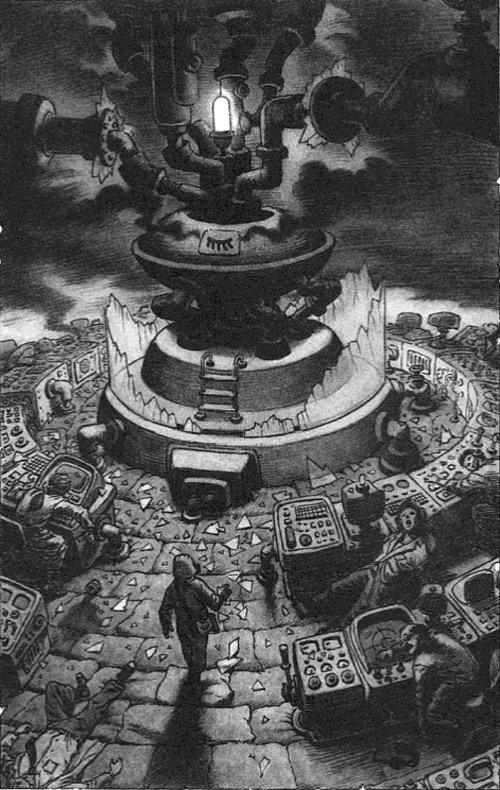
Do you expect there will be more books to that series?
I doubt it. I think it would have had to sell much better for that to happen. The overall concept is certainly deep enough to warrant more stories though.
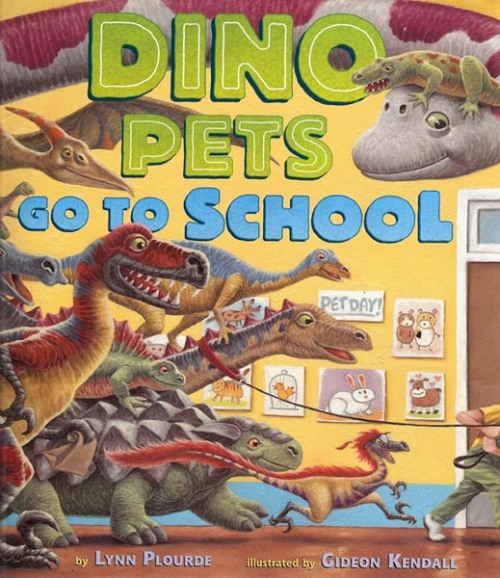
You illustrated four books that came out in 2007. Were you under a lot of pressure to get four books done during that time?
Yeah, but I was happy to have so much work.
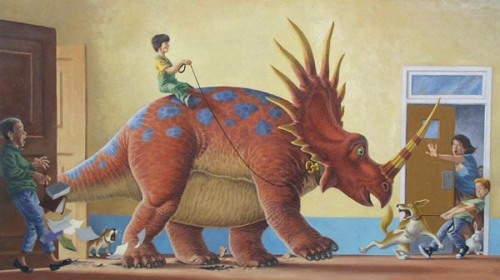
How long do you normally have to work on the illustrations for a book? Shortest? Longest?
There’s no real “normal”. Every job is different. I’d say in general, schedules just get shorter and shorter as everyone expects work to be done digitally.
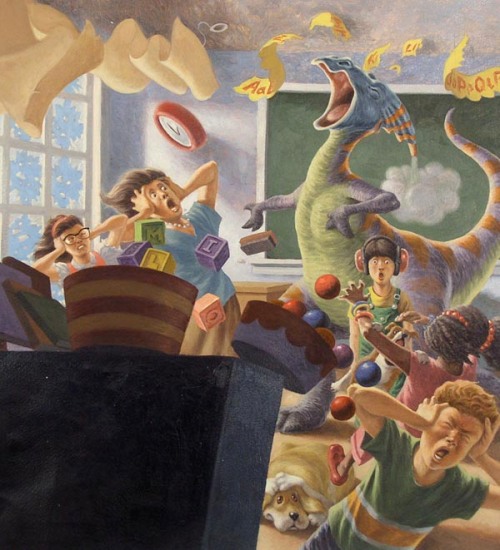
How many black and white illustrations are usually required for a middle grade book?
Anywhere from 8-30. The Elliot books had lots of illustrations, some full page, some spot. Those books were so much fun to illustrate.
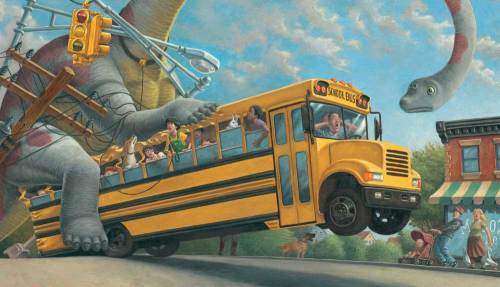
Have worked with any educational publishers?
Yeah, these days that’s where a lot of my work comes from. The money is almost always terrible and of course there are no royalties but its the kind of work you can feel good about doing.
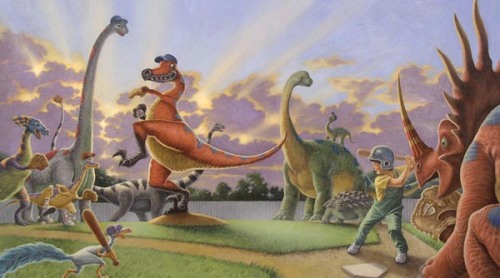
Do you ever see yourself writing one of your own books? Oh yes, believe me! I have numerous unpublished book projects on file, and they’re all awesome, so all you editors and publishers out there, give me or Ronnie a call.
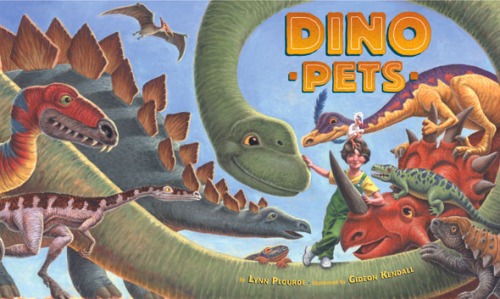
Have you done illustrations for any children’s magazines?
As mentioned, Highlights. They are keeping me very busy these days. I do a monthly hidden picture for one of their magazines and I’m also doing several of the books for their Which Way USA series.
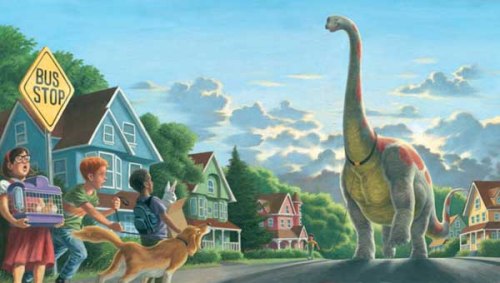
Do you think the Internet has opened doors for you?
Yes. It’s also wasted a lot of my time.
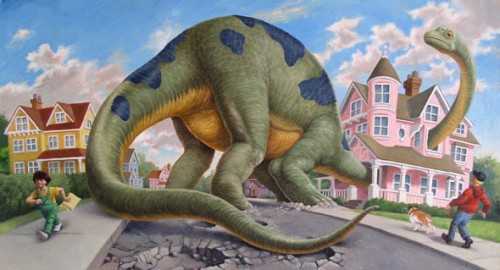
What types of things do you do to find illustration work?
I don’t really seek it out anymore. It comes in through Ronnie or from previous clients or referrals.

What do you feel was your greatest success?
I don’t think I’ve had it yet. I’m proud of the painting in “Dino Pets Go To School” but that book is going out of print I think. I’m also proud of the work I did on the Elliot series and the Seems but neither of those series sold well. Sigh. I’m still waiting I guess.

How did you get involved in TV cartoons, backgrounds, production design, and props.?
In ’94 I was broke and my attempts at being an illustrator were mostly failing. A friend introduced me to J.J. Sedelmier (of Beavis and Butthead & SNL TV Funhouse fame) and he took me on as an intern. I knew nothing about animation but I could draw and paint so I found a role as a background painter (this was pre-digital). I made a short film with Tom Warburton which was seen by some folks at Disney and they hired us to be the designers of a new show for ABC called Pepper Ann. We worked together on that for several years and then Tom created Codename: Kids Next Door for Cartoon Network and I served as his background designer on that show too (a guy named Mo Willems just so happened to be the head writer on the show. Ever heard of him? Even if I never have a hit children’s book I can say that I have played touch football with Mo Willems). After that the bottom fell out of the NYC series animation industry. Most of my colleagues in the industry moved to California. I decided to stay on the east coast and recommit to illustration.
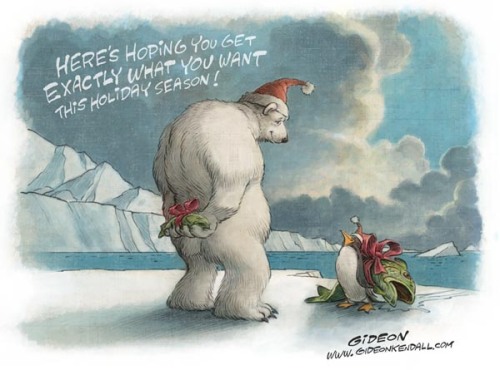
Do you have a studio? What is the one thing in your studio that you could not live without?
I work in the upstairs back room of my house. I’ve got a nice sliding glass door leading out onto a deck with a view of some ugly apartment buildings. I love my Cintiq, and all of my reference books, but the thing I really couldn’t live without is the espresso machine in the kitchen.
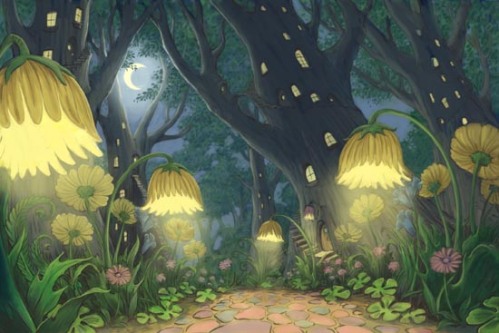
Do you try to spend a specific amount of time working on your craft?
Every job is a chance to improve some aspect of my skill set. I just did a story for an educational publisher in which the main character was a 10-year old Asian boy. I took the job mostly because I’m not very good at drawing Asian kids. I just finished the job today and I think I got a little better at it…
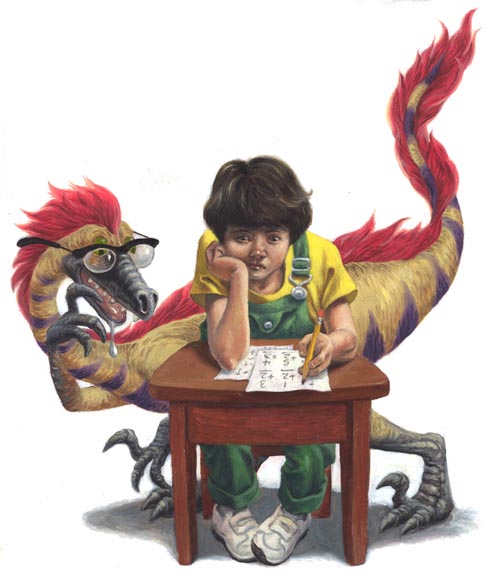
Do you take pictures or do any types of research before you start a project?
I do. I use an OLYMPUS DIGITAL CAMERA.
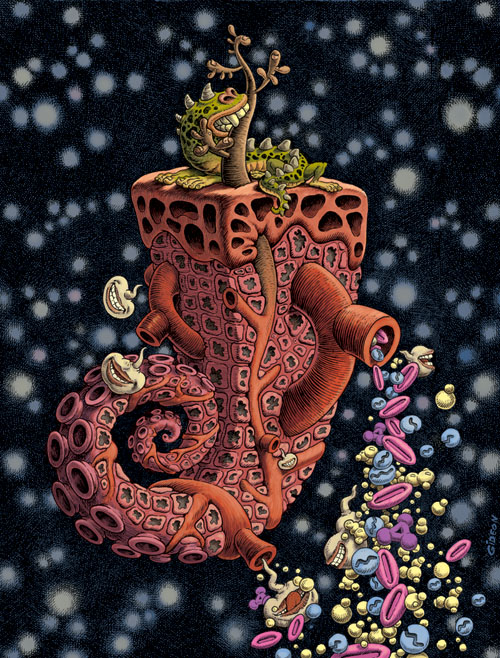
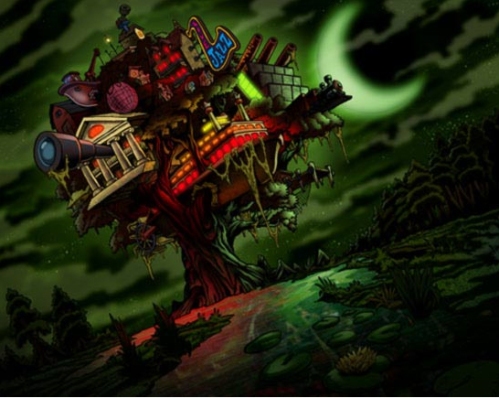
Are you open to doing any illustrations for a writer who wants to self-publish?
If they can pay me and I like the project.

Have you ever thought of self-publishing a book of your own?
Sure. It’s getting easier and more practical to do so. I am self-publishing my graphic novel and selling it and my other comics and prints at various events such as MOCCAfest (happening this weekend in NYC).

Do you use Photoshop or Corel Painter with your illustrations?
I keep meaning to learn Painter at this point I’m strictly a Photoshop guy.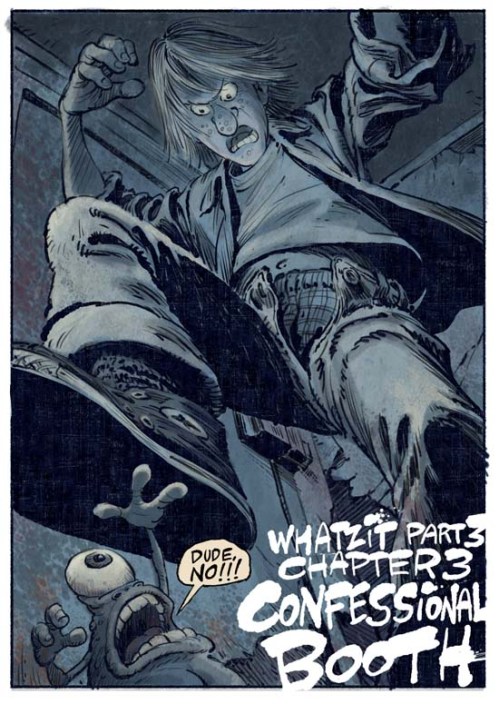
Have you used or plan to use your comic illustrations in a graphic novel?
Yes, I’m working on a graphic novel now. It is definitely not for kids, however. It’s called WHATZIT and you can buy it, along with a lot of my other not-for-kids stuff at http://www.WHATZITCOMIC.COM

It sounds like you are not only a talented illustrator, but an accomplished musician. Could you tell us a little bit about that side of your life, and how you got interested in music?
Acccomplished??? Ha! No, I just love writing songs. I am not particularly skilled as a musician but I enjoy performing and writing, as well as the collaborative nature of music. ITs a nice antidote to sitting alone in my underwear all day drawing pictures.
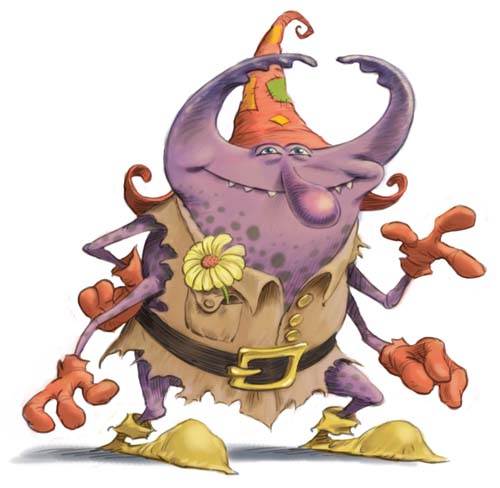
Do you have any career dreams that you want to fulfill?
I want to get some of my own children’s books published.
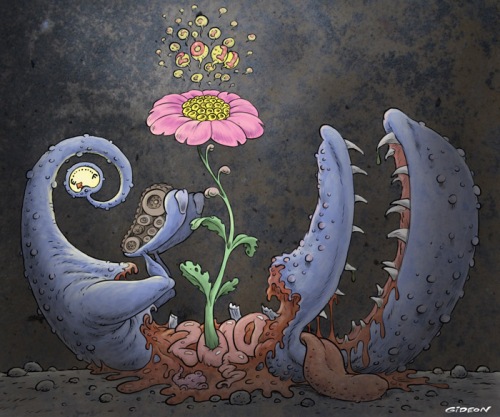
What are you working on now?
Issue #2 of WHATZIT, some whiteboard projects for Idea Rocket, the next issue of Which Way USA for Hightlights, a serious of fine art prints depicting surreal animals and plants in various states of decay, a revision of one my book pitches (it’s called “The Last Story”. Its awesome. Somebody publish it for god’s sake!). I’m busy.
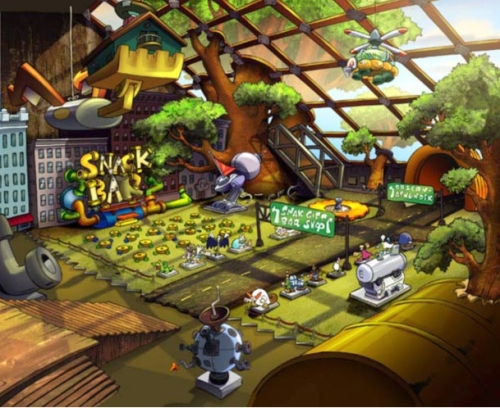
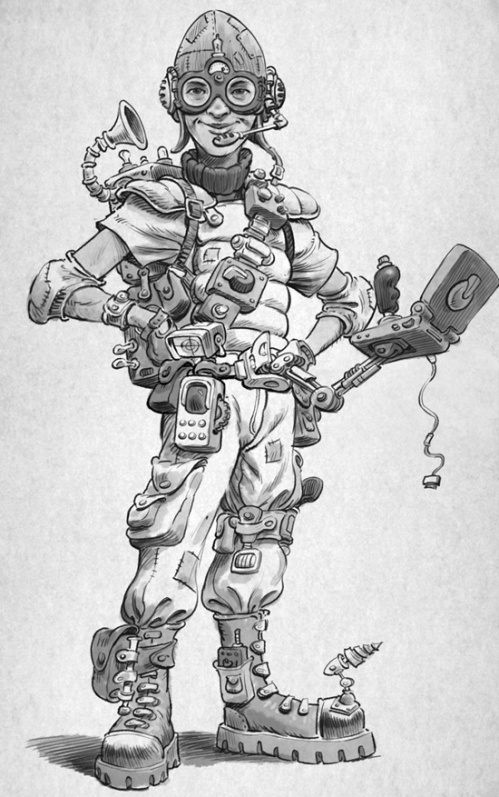
Any words of wisdom on how to become a successful writer or illustrator?
Work your ass of and then get very lucky? I dunno, let me call Mo Willems and get back to you. I do however have some advice on how to function and survive as an unsuccessful illustrator: Love your work. Never be satisfied. Get some exercise. Punk rock and espresso are great for tight deadlines.
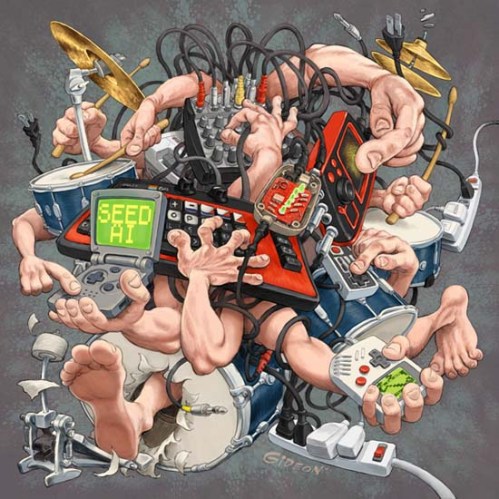
Gideon thank you for sharing your wonderful illustrations, process, journey, and expertise with us. Please keep in touch and let us know of all your future successes. We would love to hear about them.
You can visit Gideon at his Illustration website: http://www.gideonkendall.com
Graphic Novel Website: WHATZIT : http://activatecomix.com/152.comic
Please take a minute and leave Gideon a comment. It is always appreciated. Thanks!
Talk tomorrow,
Kathy
Filed under:
authors and illustrators,
demystify,
How to,
Illustrator's Saturday,
inspiration,
Interview,
picture books,
Process Tagged:
Cartoon Network,
Gideon Kendall 


By: Kathy Temean,
on 3/23/2014
Blog:
Writing and Illustrating
(
Login to Add to MyJacketFlap)
JacketFlap tags:
Process,
need to know,
demystify,
Agent Noah Lukeman,
The goal of the Query Letter,
The Query Letter,
What a query letter says about you,
Agent,
Writing Tips,
reference,
Advice,
Add a tag
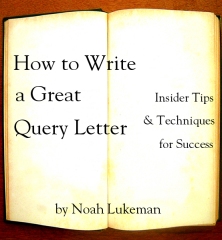 For the last few weeks we have gone over how to format your manuscript and how to write a synopsis. Every week I have pointed you towards agents and what they are looking for, but really the first thing you need to do is hone your skills on writing a great query letter. It is wonderful that more and more agents are accepting query letters via email, but there a perils that come along with this. We are so used to quickly jotting down a few sentences to talk with friends and hitting the send button without thinking, that the same thing can happen when emailing a query letter to an agent. We all need to beware of doing this an approach the query letter with the same respect as the rest of our writing.
For the last few weeks we have gone over how to format your manuscript and how to write a synopsis. Every week I have pointed you towards agents and what they are looking for, but really the first thing you need to do is hone your skills on writing a great query letter. It is wonderful that more and more agents are accepting query letters via email, but there a perils that come along with this. We are so used to quickly jotting down a few sentences to talk with friends and hitting the send button without thinking, that the same thing can happen when emailing a query letter to an agent. We all need to beware of doing this an approach the query letter with the same respect as the rest of our writing.
Agent Noah Lukeman has written a whole book on how to do this in his appropriately title book, HOW TO WRITE A GREAT QUERY LETTER.
Love the way Noah explains this: Most writers put a tremendous amount of effort into their content, spending months or years with their manuscripts, agonizing over word choice, scene order, character development. Yet when it comes time to write a query letter, they will often write something off the top of their head, sometimes with a mere hour’s effort, and let this suffice to represent their work. They rush through the letter process so that the agent can get to the book itself, which they feel will explain everything. They feel that if an agent just sees the writing, nothing else will matter, and that a poor query letter will even be forgiven. This is faulty thinking. For agents, the query letter is all. If it’s not exceptional, agents will not even request to see the writing, and writers will never even get a chance to showcase their talent. For most writers, the query letter—which they rushed through—becomes the only piece of writing they will ever be judged by, and unfortunately, the only chance they ever had. While it may seem as if a query letter is a shallow way to judge an author, I can tell you from an agent’s perspective that it is a very effective tool.
For the professional eye, a query letter is much more than just a letter:
1. It shows the agent whether you are able to exhibit word economy
2. Whether you have a grasp on the nature of your own work
3. Whether you have a realistic grasp on your own background and credentials.
4. For non-fiction: It also demonstrates whether you have a grasp on your market and your competition. A query letter can also serve to warn an agent, to act as a red flag, if for example you are too aggressive, or pitch too many projects at once. The way it physically looks speaks volumes, as does whether you’ve sent it to the right person in the right way. A layman looks at a query and sees a one page letter. An agent looks at it and scans it for 100 different criteria.
This mere page can tell an agent more about the writer and his work than you can possibly imagine.
This week we will talk about what goes into making your query letter stand out and get noticed. Remember: The query letter might be the only thing that agent ever reads of your writing. Remember: Agents have a big pile of other writer’s query letters sitting in front of them and would like to get through that pile sitting on their desk, so small things can be the difference between them saying, “Send more” and “not interested.” But also, Remember: Agents want to find the next great book or else they wouldn’t be facing that pile.
So let’s learn what to do, learn how to avoid the pitfalls that get our letter tossed and signal an amateur.
Noah Lukeman is giving away a .pdf of this book and How to Land an Agent. You can also get it for free on your Kindle at Amazon.
Here is the link for the download: http://www.landaliteraryagent.com/
Here is the layout for this week:
Tuesday: HOW TO WRITE A QUERY LETTER.
Wednesday: Query Letter Tips – Examples and Links
Thursday: Agent Wishlist
Friday: First Page Critique Results
Talk tomorrow,
Kathy
Filed under:
Advice,
Agent,
demystify,
need to know,
Process,
reference,
Writing Tips Tagged:
Agent Noah Lukeman,
The goal of the Query Letter,
The Query Letter,
What a query letter says about you 


By: Kathy Temean,
on 3/19/2014
Blog:
Writing and Illustrating
(
Login to Add to MyJacketFlap)
JacketFlap tags:
How to,
demystify,
Australian Illustrator,
Celcilia Clark,
Synopsis Checklist,
Synopsis evaluation,
Writing Tips,
list,
reference,
Process,
Add a tag

This illustration my Cecilia Clark gives us a glimpse of what awaits us after this long cold winter. Cecilia is a budding writer and illustrator from Australia. Her writing and illustrating has been published in anthologies. She is a member of SCBWI Australia and New Zealand(Society of Children’s Book Writers and Illustrators) the Fellowship of Australian Writers (FWA) and Romance Writer’s Australia(RWA). http://ceciliaaclark.blogspot.com.au
Synopsis Checklist:
1. Is your synopsis between one and three pages? Double spaced if more than one page?
2. Does the opening paragraph have a hook to keep the editor or agent reading?
3. Did you use capital letters the first time you introduced a character?
4. Did you show your characters goal, motivation, conflict, and growth?
Your synopsis should give a clear idea as to what your book is about, what characters we will care about (or dislike), what is at stake for your heroes, what they stand to lose, and how it all turns out.
5. Have you hit on the major scenes, the major plot points of your book, and include the ending?
6. How you gotten to the who, what, where, when and why in your synopsis?
7. Do you keep the interest level up throughout the synopsis?
8. Is there good flow between paragraphs.
9. Have you avoided all grammar, spelling, and punctuation mistakes?
10. Do you think you captured the flavor of your manuscript?
See yesterday’s post for synopsis details.
Talk tomorrow,
Kathy
Filed under:
demystify,
How to,
list,
Process,
reference,
Writing Tips Tagged:
Australian Illustrator,
Celcilia Clark,
Synopsis Checklist,
Synopsis evaluation 


By: Kathy Temean,
on 3/18/2014
Blog:
Writing and Illustrating
(
Login to Add to MyJacketFlap)
JacketFlap tags:
Process,
How to,
Doris Ettlinger,
Rhode Island School of Design,
demystify,
Synopsis Format,
Synopsis Guide,
Tips,
list,
reference,
Add a tag
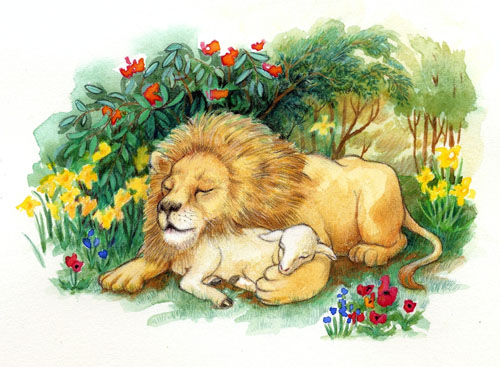
Doris Ettlinger sent in this gorgeous illustration reminding us of how March comes in as a lion and goes out like a lamb. Doris graduated from the Rhode Island School of Design and received an MFA from the University of Wisconsin – Madison. She was featured on Illustrator Saturday in 2010: http://kathytemean.wordpress.com/2010/07/17/illustrator-saturday-doris-ettlinger/
After talking about formatting your manuscripts, it was logical to receive a few emails asking about how to format a synopsis. That lead to adding other things you need to consider when writing one for your novel.
How to format your synopsis.
Use a one inch margins on the top, bottom and sides. Justify text at the left margin only. Use Times New Roman 12 pt. font. Type your name, address, phone number, fax number and e-mail address, each on a separate line single-spaced at the top left margin on the first page of your synopsis.
If you can fit your synopsis on one page, then you can single space the text with a space between paragraphs . If it goes over one page, then double space your text. Editors generally want one or two pages, but if you must go longer than you must – just keep it tight. You should always check a publisher’s submission guidelines, just to make sure you are following their rules before submitting.
Here are some things to help guide you through the synopsis writing process:
• You want to briefly tell what happens. This is one place you can ignore Show, Don’t Tell.
• Your goal should be to give an escalating series of turning points, a strong central crisis, a dramatic climax and a satisfying resolution.
• Introduce your main character first. Type a character’s name in all CAPS the first time you use it in the synopsis. Why? It helps the editor remember or find your character names.
• Remember your synopsis should showcase your unique voice.
• The synopsis should reflect your story. If it is humorous, be funny, etc.
• Start with a hook.
• Use present tense. This gives the story immediacy.
• Write the high points of your story in chronological order. Keep these paragraphs tight.
• Always answer basic who, what, where, when, why–early in the synopsis.
• Don’t waste words or time describing settings, unless crucial. Sometimes it’s enough just to put the date and place at the top, then start your synopsis.
• Omit unimportant details.
• Only include backstory if it is necessary to give the editor the information they need about the character’s motives.
• Always resolve the external plot question before you resolve the internal and/or relationship question.
• If it’s not a turning point, it doesn’t belong in the synopsis.
• Don’t use secondary characters in your synopsis, unless they are absolutely critical to the emotional turning points of the relationship. Even then, try to get by with the using the secondary’s relationship to the major characters (sister, teacher, boss.) They are too hard to keep up with and only add clutter. Only name them when necessary.
• Clearly convey the central question of the story, and what the resolution looks like. And resolve it at the end — don’t leave the editor guessing. They hate that, so spell out the story, including the ending.
• Rewrite your synopsis until each sentence is polished to the point of perfection. Use strong adjectives and verbs. Make every word count.
Check back tomorrow for a synopsis checklist you can use when drafting one for your manuscript.
Talk tomorrow,
Kathy
Filed under:
demystify,
How to,
list,
Process,
reference,
Tips Tagged:
Doris Ettlinger,
Rhode Island School of Design,
Synopsis Format,
Synopsis Guide 


By: Kathy Temean,
on 3/10/2014
Blog:
Writing and Illustrating
(
Login to Add to MyJacketFlap)
JacketFlap tags:
Writing Tips,
Book,
reference,
inspiration,
Advice,
Writer's Digest,
demystify,
Description in Your Writing,
Rebecca Mcclanahan,
Word Painting,
Add a tag
 Some of us try to use description language too much in our writing and others need to start thinking about how to use this literary tool more often.
Some of us try to use description language too much in our writing and others need to start thinking about how to use this literary tool more often.
The dictionary defines “describe” as:
To transmit a mental image or impression
To trace or draw the figure of; to outline
To give a verbal account of; to tell about in detail
Used properly it can take your reader into your fictional dream and that is a good thing.
I just bought Word Painting by Rebecca Mcclanahan and thought I would share some of the things she talks about in the first chapter that should give you food for thought. Like I said I just bought it, but so far I am glad I added it to my “How to” books.
1. Descriptive passages create the illusion of reality, inviting the reader to move in, unpack, and move in for a spell. They provide verisimilitude. What John Gardner (author of The Art of Fiction) calls the “proofs” that support and sustain your fictional dream. It is not a bunch of “flowery stuff.” It is not just something we stitch on top of our writing to make it more presentable.
2. Description composed of sensory detail penetrates layers of consciousness, engaging your reader emotionally as well as intellectually. The success of all fiction depends in part on descriptive image-making power.
3. Carefully selected descriptive details can establish you characters and setting quickly and efficiently. It is not merely describing how something looks with visual detail, but also smells, tastes, textures, and sounds.
4. As a framing device, description establishes the narrator’s, or character’s point of view. Shifts in the description frame (or eye) can signal shifts in point of view or a significant change in the character. Description begins in the eye, ear, mouth, nose, and hand of the beholder. Careful and imaginative observation may well be the most essential task of any writer.
5. Well-placed descriptive passages can move your story along, shape the narrative line and unfold the plot. It is not a way to hide from the truth. The world isn’t always pretty. Describe it honestly and face difficult, even ugly, subjects when necessary.
6. Descriptive passages can act as gearshifts, changing the pace of your story – speeding it up or slowing it down, then increasing the story’s tension.
7. Description can serve as a transitional device, a way of linking scene or changing time and place.
8. Description can orchestrate the dance between scene and summary.
9. Description can serve as a unifying thematic device, what Stanley Kunitz calls the “constellation of images” that appears and reappears in a literary work, suggesting the idea or feeling that lives beneath the story line.
10. Description can provide the palette of gradations in mood and tone. Dip you brush in one description and the darkens; in another, and the sun breaks through.
11. The language of you descriptions, its rhythms and sounds, can provide the equivalent of a muscial score for the fictional dream, a subliminal music that plays beneath the story line.
12. Writing descriptively doesn’t always mean writing gracefully. It won’t necessarily make our writing more refine, lyrical, or poetic. Some descriptions demand uneven syntax and plainspoken, blunt prose. Jagged, even. Fragments, too. Slice of chin. Buzz saw.
13. Description doesn’t always require a bigger vocabulary. House is probably a better choice than domicile, a horse is easier to visualize than an equine mammal, and red blood is brighter than the sanguine flow of bodily fluids.
14. Writing descriptively doesn’t necessitate writing more. Description isn’t a steroid, something to make our language bigger and stronger, nor is it an additive promising more miles to the fictional gallon. Sometimes writing descriptively means writing less or disappear altogether.
15. Description rarely stands alone. It should be woven in and seamlessly intertwined with other literary elements. Description isn’t something we simply insert, block style, into passages of narration or exposition. Yes, sometimes we write passages of description. But the term passage suggests a channel, a movement from one place to another; it implies that we’re going somewhere. That somewhere is the story.
Hope this helps.
Talk tomorrow,
Kathy
Filed under:
Advice,
Book,
demystify,
inspiration,
reference,
Writing Tips Tagged:
Description in Your Writing,
Rebecca Mcclanahan,
Word Painting,
Writer's Digest 


By: Kathy Temean,
on 3/9/2014
Blog:
Writing and Illustrating
(
Login to Add to MyJacketFlap)
JacketFlap tags:
authors and illustrators,
How to,
demystify,
The First Five Pages,
Formatting your manuscript,
Staying out of the Rejection Pile,
Writing Tips,
Book,
reference,
inspiration,
Advice,
Noah Lukeman,
rejection,
Add a tag
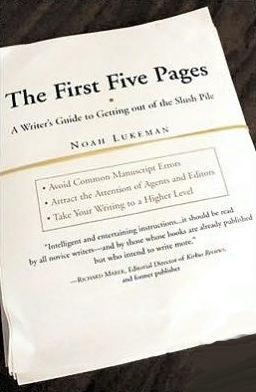 We’ve been talking a lot about how to format your manuscript, so I bought The First Five Pages: A Writers Guide To Staying Out of the Rejection Pile by Noah Lukeman to see what other things might be good to share and already he has reminded me of things I forgot to mention to you that you should do before submitting.
We’ve been talking a lot about how to format your manuscript, so I bought The First Five Pages: A Writers Guide To Staying Out of the Rejection Pile by Noah Lukeman to see what other things might be good to share and already he has reminded me of things I forgot to mention to you that you should do before submitting.
He says, “There are no rules to assure great writing, but there are ways to avoid bad writing.” He also points out that agents and editors don’t read manuscripts to enjoy them; they read solely with the goal of getting through the pile, solely with an eye to dismiss a manuscript.
So obviously, we want to do everything to look good and make our first contact a professional one. We want to make sure our manuscripts do not signal carelessness, sloppiness, ignorance, or defiance of the industry’s standards; that the writer doesn’t care enough to do the minimum amount of research to make a manuscript industry presentable. An editor or agent will assume that the careless presentation continues in the manuscript.
Avoid rejection in the first few minutes by making sure your manuscript is presented properly:
Paper: 8 1/2 x 11 inch standard 20 pound bond white computer paper.
Text: 12 pt. Times New Roman font. Printed only on one side of the page.
Clean: Do not send out a manuscript that you have sent out to other agents or editors if it appears the slightest bit worn.
Eliminate: Make sure you do not send out a manuscripts filled with boldface, underlined, capitalized, or italicized words everywhere, unless you purposely want to drive the agent or editor crazy.
Printing: Do not try to squeeze the last drops of ink from your printer and send out dim/hard to see and please if anyone still has a dot-matrix printer, throw it out and buy an ink-jet or laser printer.
Spacing: Double spaced lines with 1 inch margins. New paragraphs should be indented and also dialog should always be indented. Make sure you indent enough spaces (8-10 spaces on my computer). Nothing is worse than trying to read a manuscript when the indentations are so slight it is easy to miss them. Leave a half of a page between chapters. Line breaks between paragraphs scream amateur.
Do Not Include: Artwork or illustrations throughout the pages. It screams amateur. You might feel that adding some clip art helps the editor or agent get a feel for what you book is really about, but it is not professional. If you text needs a picture to explain what is going on, then add an illustrator’s note. Try to keep them to a minimum.
If you are an illustrator and have written and illustrated your book and have a book dummy; make sure you mention this in your query and give a website link where they can visit to see your art. You might want develop a page on your website exclusively to give to editors/agents, so they could view it online. Never send in original art.
Rights: When you present a manuscript to an agent or editor you are offering all rights. Do not put “Copyright” on your manuscript. It makes you look paranoid and besides it is not necessary.
Avoid Overuse of: Question marks, exclamation points, and parentheses. The abundant use of foreign words or phrases. Noah also say to avoid the inappropriate use of fancy words; crude of vulgar language or images; graphic blood and sex, but most of all cliché. Doing this in the first five pages can lead to instant rejection.
I think this covers all of the instant cosmetic rejections. Hope this helps.
Talk tomorrow,
Kathy
Filed under:
Advice,
authors and illustrators,
Book,
demystify,
How to,
inspiration,
reference,
rejection,
Writing Tips Tagged:
Formatting your manuscript,
Noah Lukeman,
Staying out of the Rejection Pile,
The First Five Pages 


By: Kathy Temean,
on 3/7/2014
Blog:
Writing and Illustrating
(
Login to Add to MyJacketFlap)
JacketFlap tags:
MFA in Illustration,
Elisabeth Alba,
University of Flordia,
inspiration,
Process,
illustrating,
authors and illustrators,
demystify,
Illustrator's Saturday,
School of Visual Arts,
Add a tag
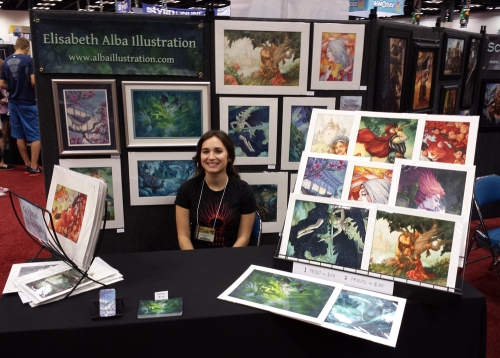
Elisabeth Alba live and work in New York City after moving here in 2006 in order to complete my MFA in Illustration as Visual Essay at the School of Visual Arts. Before then, I had received my dual degree BA in English (with a focus on children’s literature) and visual art studies at the University of Florida. I’ve traveled a lot, which has led to an obsession with history and an interest in other cultures throughout the ages. I’ve always loved children’s literature and film, especially fantasy and historical fiction.
Clients include Scholastic, Simon + Schuster, Oxford University Press, Henry Holt Books for Young Readers, Small Beer Press, AAA Traveler magazine, and MTV Books. I’m the illustrator of Diamond and Fancy, both published by Cartwheel Books, an imprint of Scholastic, and part of the Breyer Stablemates easy-to-read series. Recently illustrated I am Martin Luther King Jr., I am George Lucas, and I Am Cleopatra, all written by Grace Norwich and published by Scholastic; and I contributed illustrations for The Shadowhunter’s Codex by Cassandra Clare, Simon & Schuster.
Here is Elisabeth discussing her process:
I had just read Richard Burton’s translation of One Thousand and One Nights and was inspired to do an illustration of Scheherazade. I decided to make it a scene, with the Sultan in the background.
I used my usual, watercolor and acryla gouache. It’s fairly large for me at 12.5×17.5. Trying to work bigger… but it’s hard with the small space I have to work in.
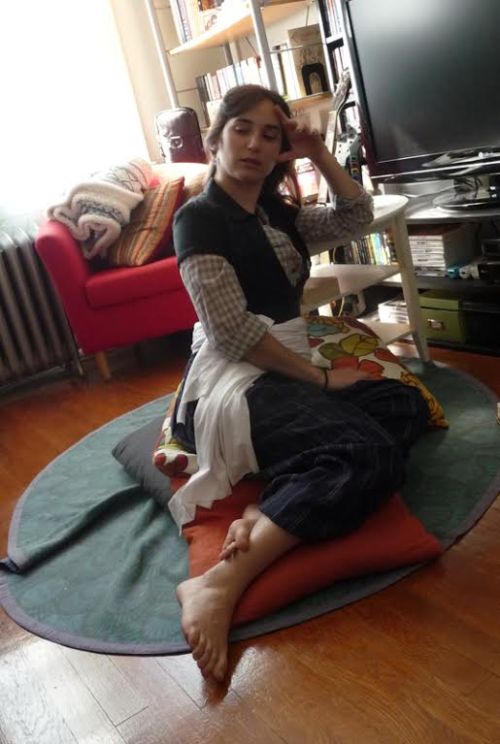
After working on a few thumbnails I knew right away what I kind of wanted, so I took some
photo reference of myself! (and my fiance, but he’d prefer I not share him in lady slippers)
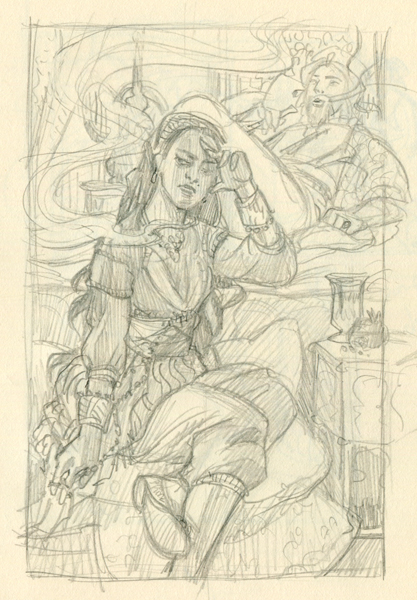
This is a quick sketch using the reference working it all out.
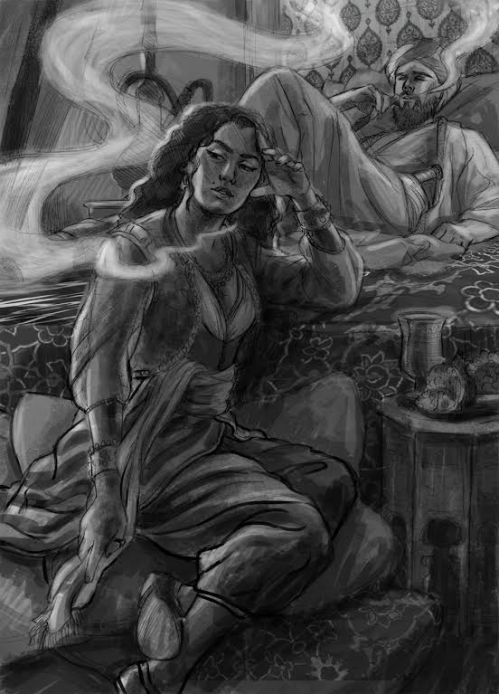
After doing a real pencil drawing and scanning it I began working on it digitally, getting the tones and lighting right, working out the pose a little more.
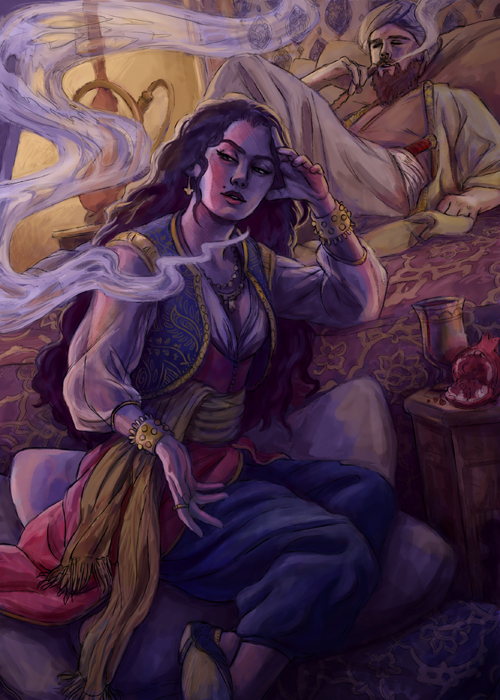
The final sketch with color test. You can see I moved the hand and gave her more of a tilt. I usually bring my color compositions to an almost finished state (if they were digital paintings), just to make sure I’ve figured it all out before painting.
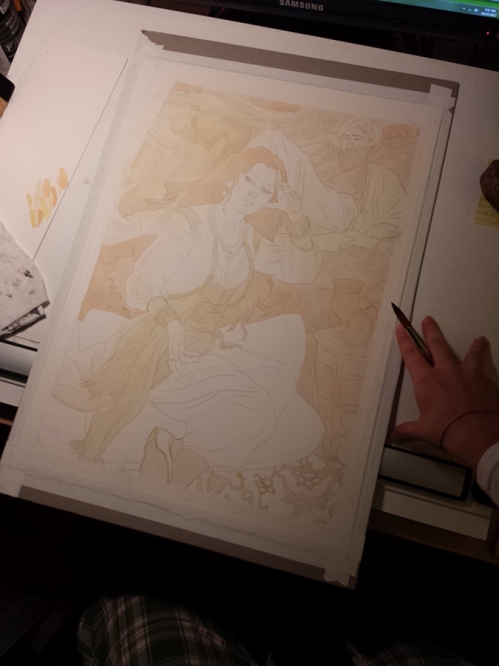
I print out the digital drawing. It was too big for my printer to print directly on the watercolor paper. I then traced the image using graphite paper to transfer it to the watercolor paper. Then I started blocking in a base color.
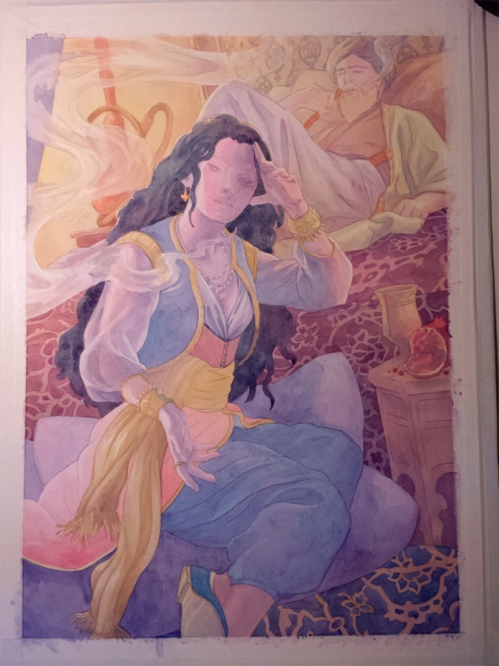
More blocking in of base colors.
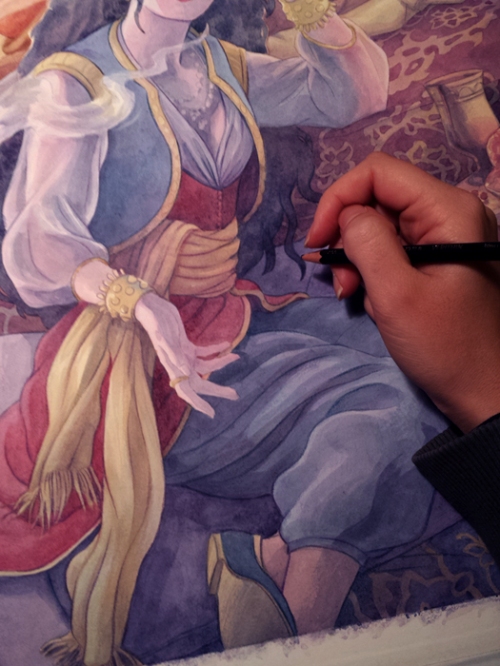
Don’t have progress photos from after that, but I continue to layer watercolor and get darker and darker, then I seal it with matte medium before continuing to add color with acryla gouache. I then varnish and scan and do any digital touch-ups.

Final image. It’s darker than the actual painting, because it just looks better that way on a computer screen.
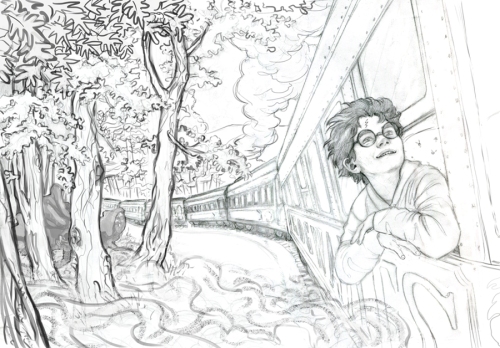
Above and Below: Where an assignment during my mentorship with the art director for the Harry Potter books (he was a guest). We had a different art director critique us each month and he assigned us the first book!
How long have you been illustrating?
I’d say since 2006, when I moved to NYC. I had done some small work before but it wasn’t very interesting to me. I didn’t consider myself a professional until 2006 at the earliest. Though I was also in grad school at the time so couldn’t take too much on.
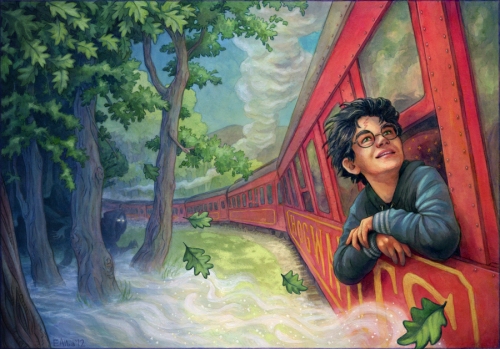
I see you attended the University of Florida to study both children’s literature and visual art. That makes me think that in high school you had an interest in writing and illustrating for children. How did that idea of a career develop with you?
I loved writing and reading but also loved art, so I wasn’t sure which to pick as a major. I started as a BFA art student, but because I was mostly doing fine arts as a student, and wanted more illustration experience, I decided to switch to a less work intensive BA so that I could double major in English as well (and I concentrated in children’s literature).

How did you decide to attend the University of Florida?
I went to high school in Florida. There was a great scholarship for Florida students called the Bright Futures Scholarship. If you got a certain GPA and SAT or ACT score, and you completed a certain amount of community service hours, you received 100% tuition to a Florida college. My sister and brother were both at UF already, so I wanted to join them. I wasn’t ready to go too far away to an art school, and I knew UF was considered a very good school.
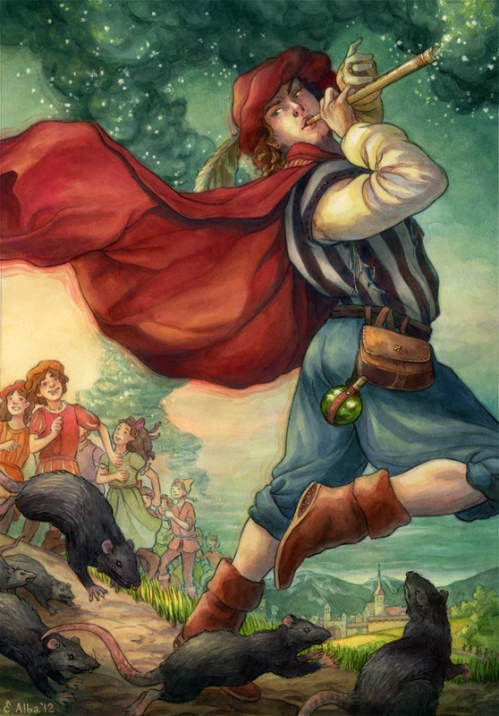
What type of things did you learn in college that you still use today?
I had a chance to experiment with a lot of art materials, so that helped me to settle on what I liked best. I think the best stuff I got was writing skills though. I had to write sooo many critical papers in my English classes (as well as art classes, actually), I read hundreds of children’s books, and I wrote a lot of short stories. And I had fantastic English professors. I have a wonderful day job in communications at a private school that I wouldn’t have gotten without my writing skills, and it has helped support my burgeoning illustration career.
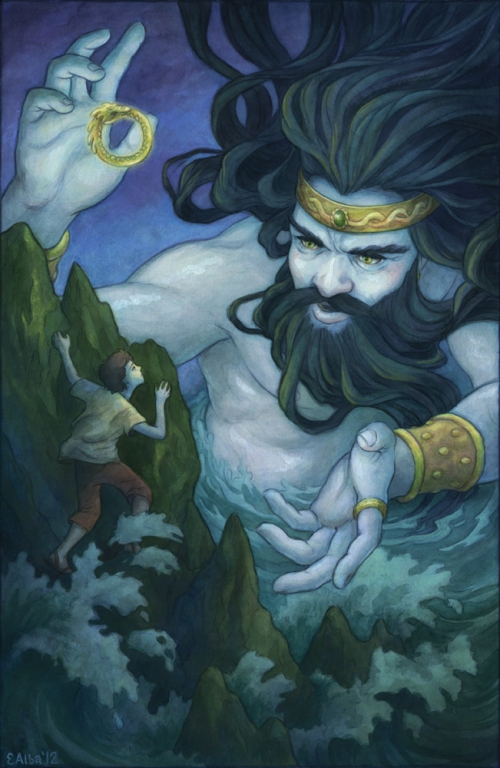
Did you immediately decide you want to get your MFA or did you get a job right out of college and then decide to continue your education in illustration?
I moved to NYC to start my MFA program right out of undergrad. I had no idea how to go about finding illustration work, since, as I mentioned, my art classes at UF were all fine arts, and I needed to be in an art school environment.

What made you decide to attend the School of Visual Arts in NYC?
At the time there were only three grad programs in illustration. SCAD, SVA, and AAU. I applied to and was accepted to all three. I only had a chance to visit SCAD and SVA. I planned to visit AAU, but as soon as I visited SVA and met the chairman, Marshall Arisman, I knew I found the school for me!
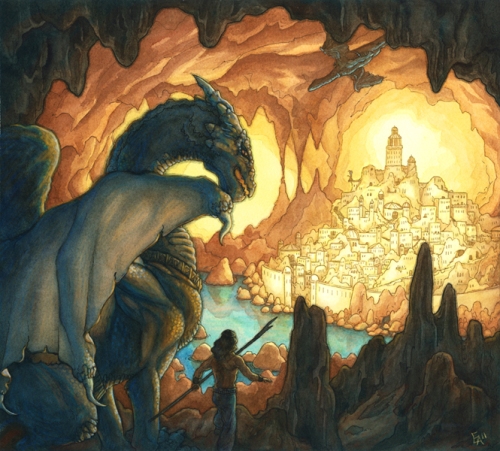
Did you have any favorite classes?
So hard to choose! They were all different. We had a location drawing class that was super fun. We got to visit the circus, a boxing gym, the botanical gardens, the zoo, and many other cool places, so it was great for someone who had just moved to NYC. Sightseeing while at school!

What specifically does an MFA in Illustration as Visual Essay teach you that just an MFA in Illustration doesn’t?
I don’t think there’s a difference. It’s still an MFA. Illustration as Visual Essay is just the name of the program. The ‘visual essay’ portion had to do with finding your own voice, and there was a lot of writing involved – we had a creative writing class, and we also had to write papers about gallery shows in a fine arts class and comics in a comic history class.
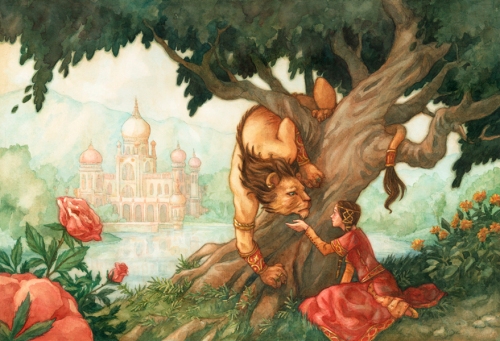
Did the School help you get work?
They certainly helped, but it’s not the school that gets you work, it’s the amount of time you put into bettering yourself and actively keeping up with contacts as well. Work’s not just going to drop in your lap (sometimes it might… but don’t count on it)! I worked on some concept work while I was still student for SpotCo after meeting the art director on a visit to the offices and having one of my teachers recommend me. I also interned with illustrator Brian Pinkney since he contacted the program for help (he was an alumnus). My thesis advisor, Brett Helquist, also hired me after I graduated for various projects. And I made a lot of connections through classmates (which resulted in my working with Scholastic). SVA also has a career services department that seemed pretty great but I never needed to use it.
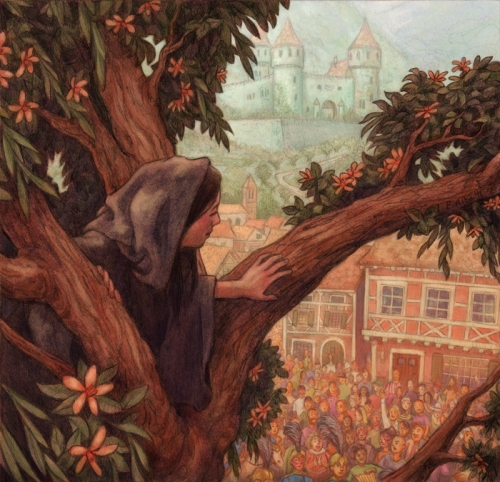
Do you feel the classes you took in college have influenced your style?
Not really, actually. I always just did my own thing. My professors at UF let me do my own thing, thankfully, because they knew I wanted to be an illustrator not a fine artist, and they were open to me making children’s book work. SVA was more of the same, just concentrating on working out what I wanted to do, and my style. I guess my classes also helped me to see what I didn’t want to do, in terms of style and genre.
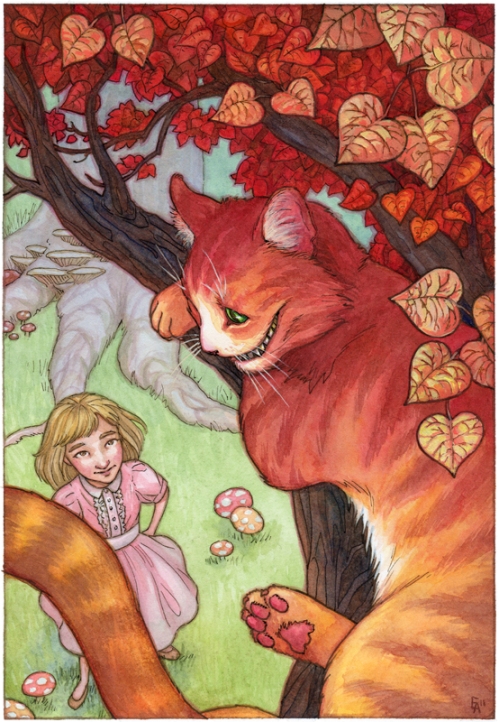
What type of work did you do right after you graduated?
I graduated in 2008. I continued doing concept work for SpotCo – I was helping ‘storyboard’ musical theater posters for Broadway, so they would tell me what actors I had to portray and what was going on, and I’d come up with some ideas. They would then show my ideas to the clients and take the final photos based on our ideas. I also taught kids that summer after graduating at an after school art program. And I got my day job at the private school, which I’ve had since.
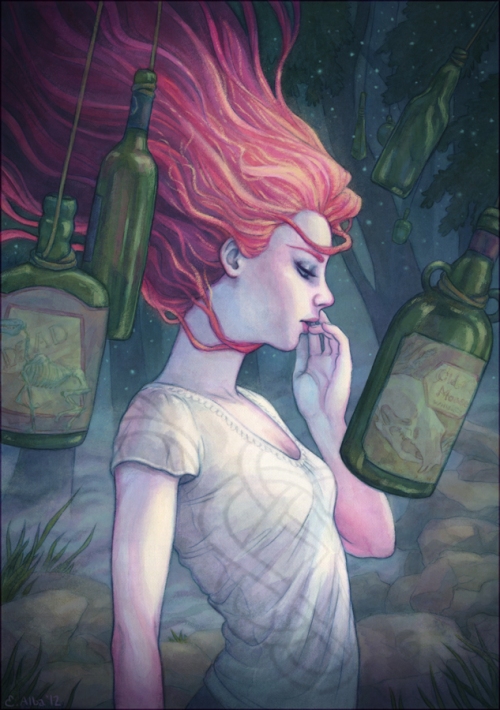
Above: Final mentorship project with Rebecca Guay. The assigned by Irene Gallo, art director at Tor Books to create an illustration for a short story.
What was the first art related work that you were paid?
I’d been paid for drawing since my freshman year as an undergrad, when I would draw fanart commissions. I also had a few small local assignments in Florida. I’d say my first real paycheck came when I was in grad school and did some work for author Rick Yancey (my favorite english professor at UF, Dr. Cech, knew him and recommended me) for a manuscript he was working on. It was never picked up by a publisher, but he’s been writing some marvelous books that came after! My first publishing job was a cover for Farrar Straus & Giroux half a year after graduating from SVA… but unfortunately the job was killed.
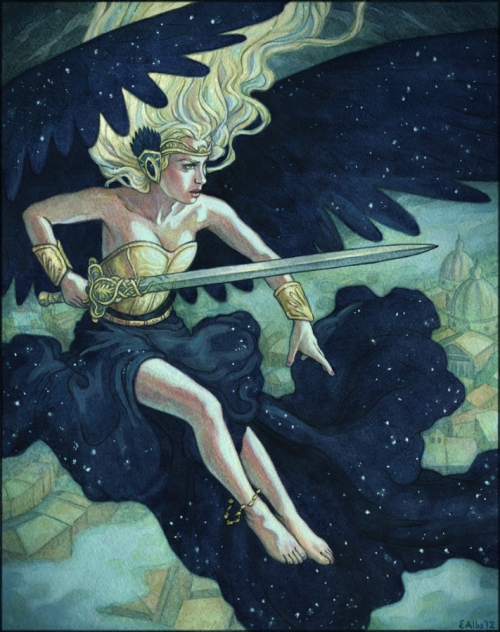
Above: Done with watercolor, colored pencil, and acryla gouache. 10″x12.5″
Do you have an agent or artist rep.? If so, who and how did the two of you connect? If not, would you like to find representation?
I don’t. Whenever I’ve contacted them they usually tell me my work is too traditional or realistic. But I haven’t needed one so far. Sometimes I think about looking for another, but I’ve heard mixed reviews, and I just haven’t needed one yet.
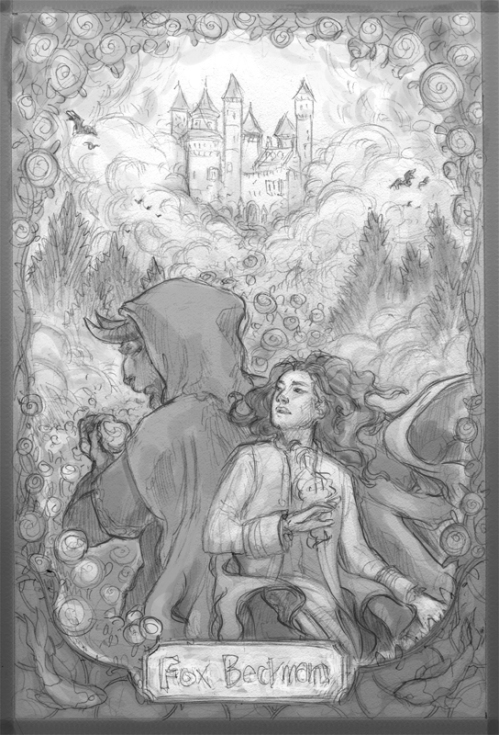
Sketch to final for self-published book, Brendan and the Beast – an alternative retelling of the classic fairytale.
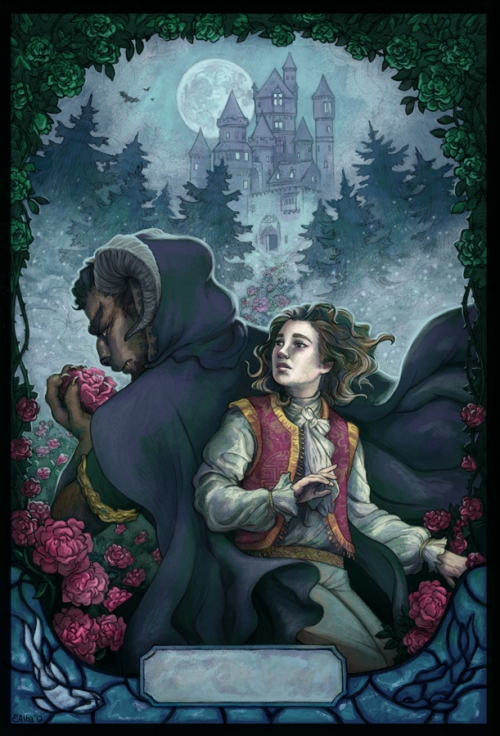
When and what was the first children’s book that you illustrated?
I guess I would say Diamond, written by Suzanne Weyn, one of the Breyer Stablemates books published by Cartwheel Books/Scholastic. That was in early 2009.
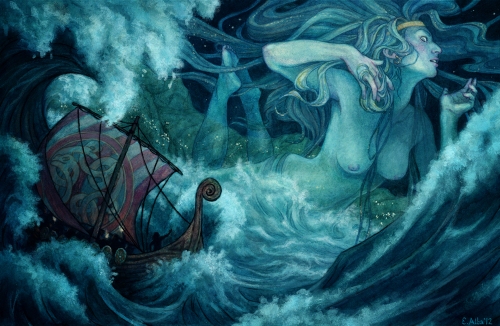
How did that contract come about?
One of my classmates became a graphic designer at Scholastic. She recommended me. They needed someone who could draw horses, and she had remembered that I drew some at SVA. I had to paint the cover first, to show that I was capable of drawing a horse and just good enough in general, and they went with me!
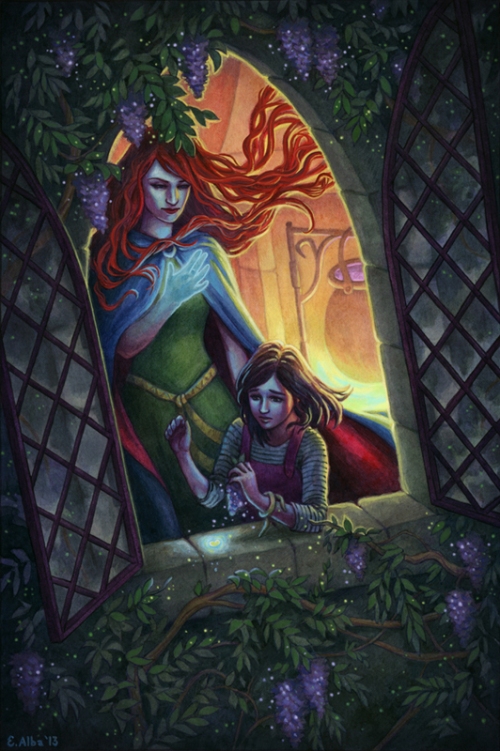
Above: Watercolor/acryla gouache/some digital touch ups.
Do you consider that book to be your first big success?
For sure! It was the biggest paycheck I ever got. Went directly to my student loans.
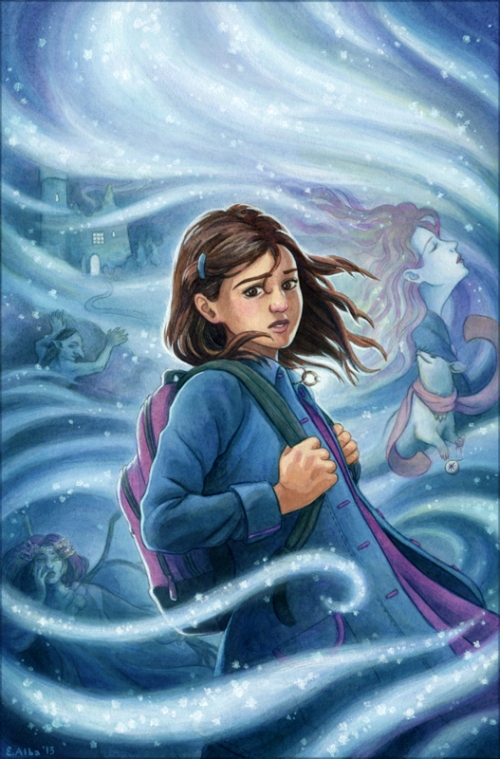
Have you tried to write and illustrate a children’s book, yet?
I have written and illustrated two of my own books while at SVA. I showed them to a few publishers but nothing came of them. One was a book about the Hanging Gardens of Babylon, called Amytis’s Garden. The other was a book called Nico’s Journey, about a boy searching for the best paella in Spain. They were fun to work on and great learning experiences!

Above: From Amytis’s Garden
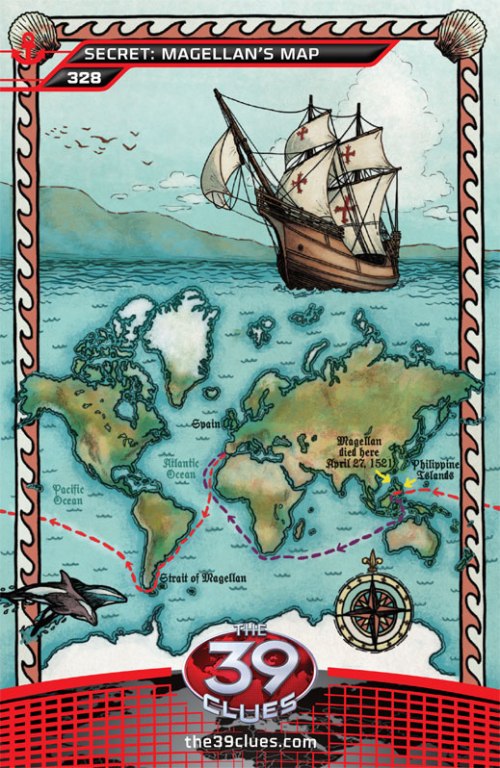
What type of work have you done for Scholastic?
I did two books for the Breyer Stablemates series, Diamond, which I mentioned above, and Fancy by Kristin Earhart. I also did a map for 39 Clues, a map for Infinity Ring, and three biographies for the I Am series, on Martin Luther King Jr., George Lucas, and Cleopatra.
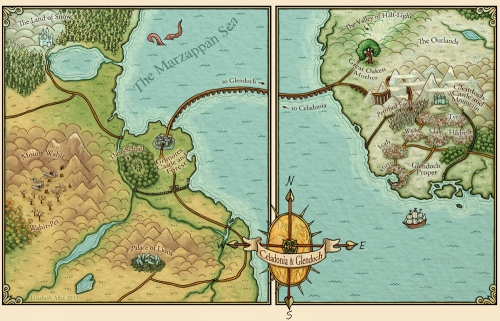
Same two questions again for Henry Holt Books for Young Readers.
So far I’ve only done one job for Henry Holt Books for Young Readers, and it was very recent. I illustrated two maps for the upcoming book, The Last Days of Jesus, which is a middle grade adaptation of Killing Jesus by Bill O’Reilly. The art director, Patrick Collins, has in-person portfolio reviews with illustrators if you contact him beforehand by snail mail to set up a time (See here: http://us.macmillan.com/Content.aspx?publisher=holtbyr&id=375). So I sent him a postcard and a few months later we met!
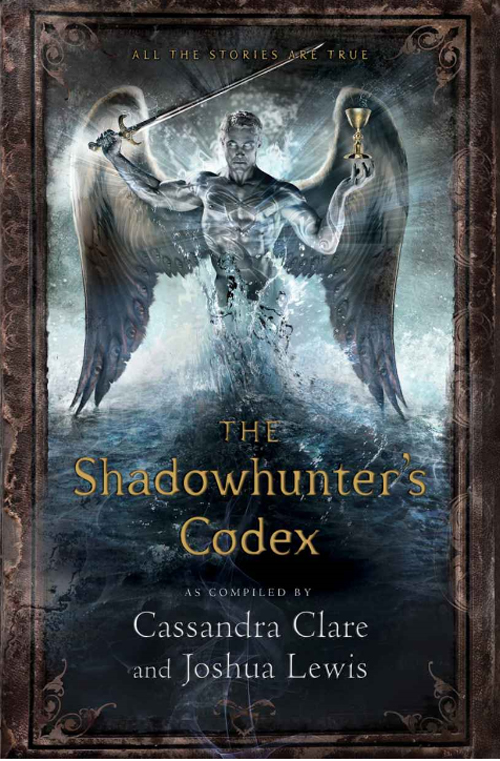
It must have been exciting to be asked to do some illustrations for Cassandra Clare’s book, The Shadowhunter’s Codex. How did that come about?
It was fantastic. That was a dream job, because I don’t often get fantasy work from publishers and it’s what I really want to do. I was in a mentorship with illustrator Rebecca Guay (http://www.smarterartschool.com/) which was the best thing to happen to me in my illustration career since grad school. She is a fantastic teacher and my work has really developed since the mentorship. I made many new contacts too. It’s all about networking. Anyway, she knew the art director working on The Shadowhunter’s Codex and he was looking for some new illustrators. I submitted samples based on text he had sent. He ended up hiring me!
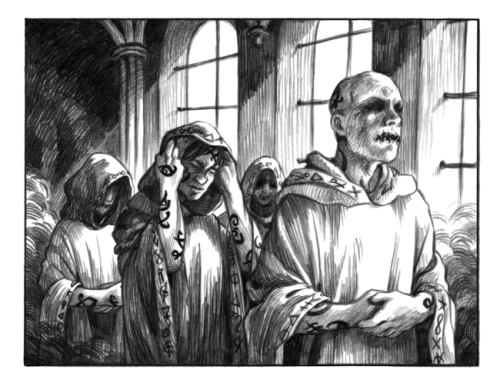 Do you feel living in New York City helps you get more work?
Do you feel living in New York City helps you get more work?
It has definitely helped, because it’s easy for me to go in for portfolio reviews and go to amazing illustration shows and lectures and events here. The Society of Illustrators is one of my favorite places. Meeting people face to face definitely puts you a step up, I think. It’s a huge community and you get to know so many people and mingle. Illustrators are generally pretty nice folks. I’ve gotten work thanks to them, and I have also passed on jobs to them as well. It’s just a friendly giving community.
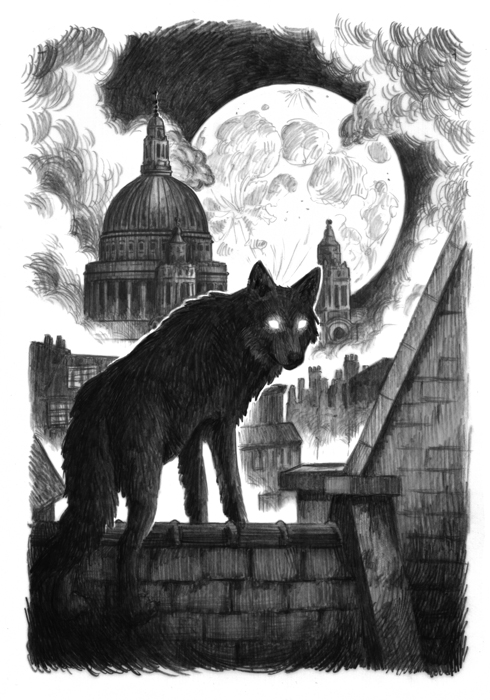
What illustrating contract do feel really pushed you down the road to a successful career?
Hard to choose, but I guess the Scholastic one since they have hired me multiple times!
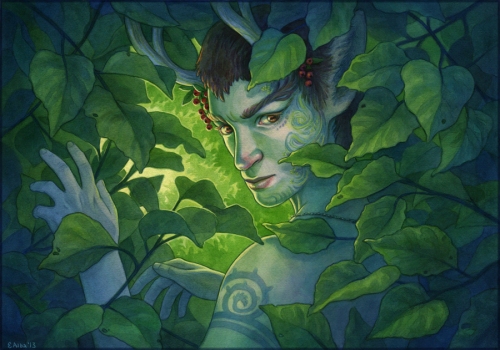
It looks like you exhibit your work at conventions? Can you tell us about that and has it been helpful in making contacts and getting you more business?
I’ve been to a lot of conventions, but the first one where I had a booth was Gen Con 2013. It is a gaming convention (board games, roleplaying games, etc), and it has a wonderful art show that my fiance has been a part of for a few years. I’d tag along and decided I wanted to exhibit at the art show too. I’d like to try to get some gaming work, and I am also breaking into the collectors market—that is, people who buy prints and original paintings. You can meet a lot of art directors at conventions. They stop by the booths, but sometimes they have portfolio reviews that you can sign up for. And it’s just more exposure in general for people who might want to collect art. Gen Con was a pretty successful first convention for me, a lot of sales!

How did you get involved in illustrating maps?
I worked on a private commission for an author who is self publishing her novel online (www.whyismud.com). She needed a fantasy map. I’d never done one before, but it was actually super fun. That single map was all I needed to get more map work.
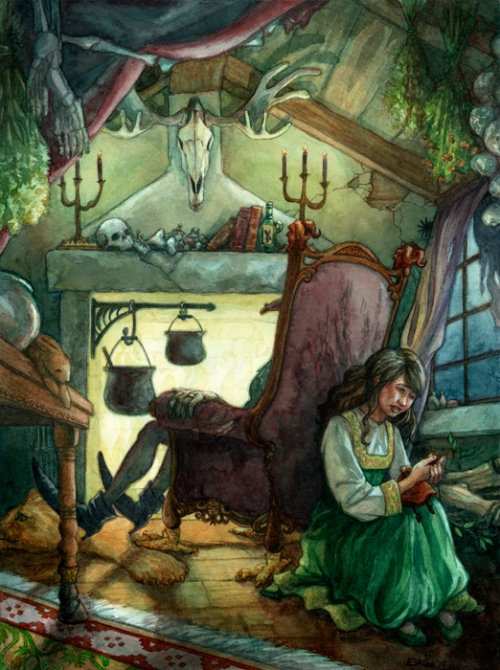
Have most of the maps you’ve done been for educational publishers or more for fantasy books?
A mix. For publishers it has been educational, and for private clients who are self publishing it has been fantasy.
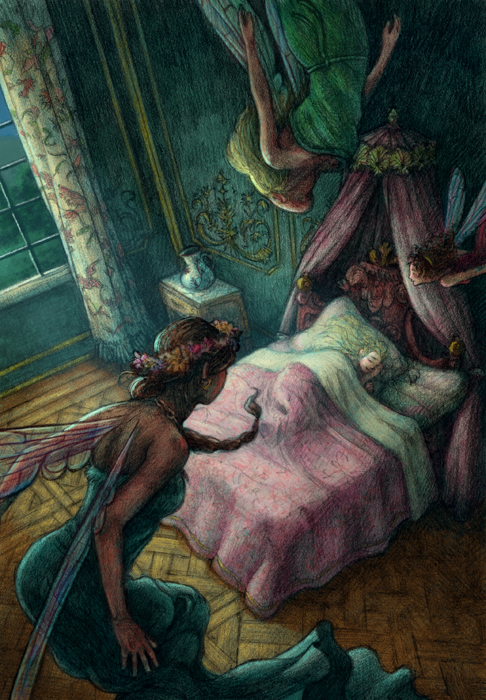
Have you done illustrations for any children’s magazines?
Not yet!
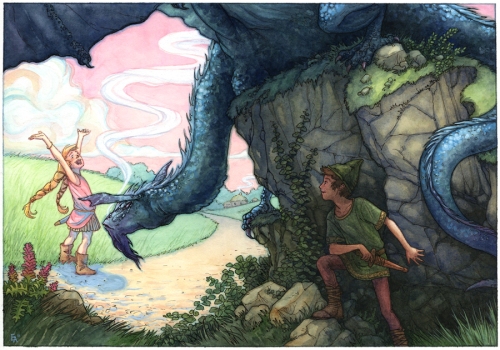
What materials do you use to paint your color illustrations?
My favorite materials are Dr. Ph. Martin’s Hydrus liquid watercolors and Holbein acryla gouache. Sometimes I use ink too, FW acrylic sepia ink or Dr. Ph. Martin’s Black Star matte ink. Sometimes I use a little bit of colored pencil. I also like working with pencil when I work in black and white.

What types of things do you do to find illustration work?
So much! Half the work is promoting yourself. I keep my website updated, my facebook artist page, tumblr, just started using twitter, selling on Etsy, various portfolio sites like Behance. I carry around business cards and attend a lot of illustration networking events. I make promotional postcards and greeting cards and mail them to a list of art directors from the SCBWI market guide, and to my contacts that I already have. I also email samples to my contacts and to any companies that accept email submissions. I attend conventions to meet more art directors and artists.
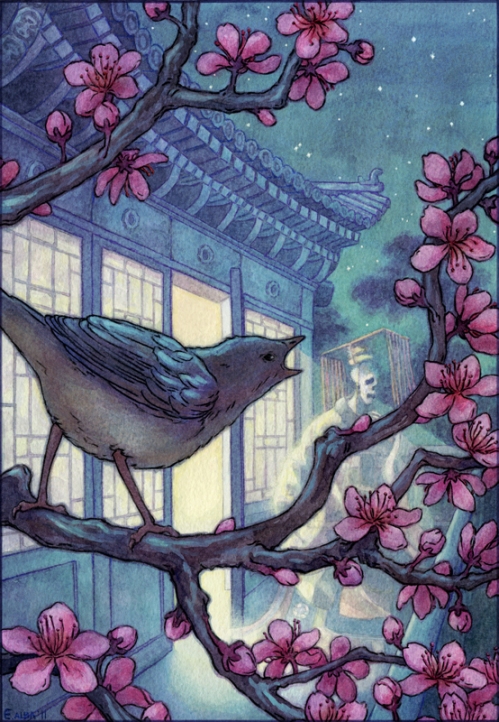
What is the one thing in your studio that you could not live without?
Probably my computer…. I do so much research on it, and keep all my reference images on it, and I do a lot of stuff digitally… It’s just so dang useful.
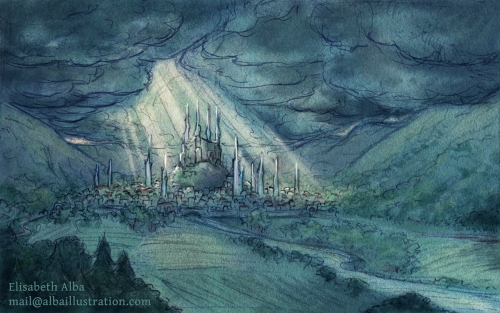
Do you try to spend a specific amount of time working on your craft?
I try to work 2-4 hours Monday-Thursday after my day job, and I get most of my work done Friday-Sunday. It depends on what I’m doing socially or how much illustration work I have. Sometimes on weekends I work from morning to late night, but sometimes I let myself off by dinnertime. I’d love to work even more but the day job makes it difficult!
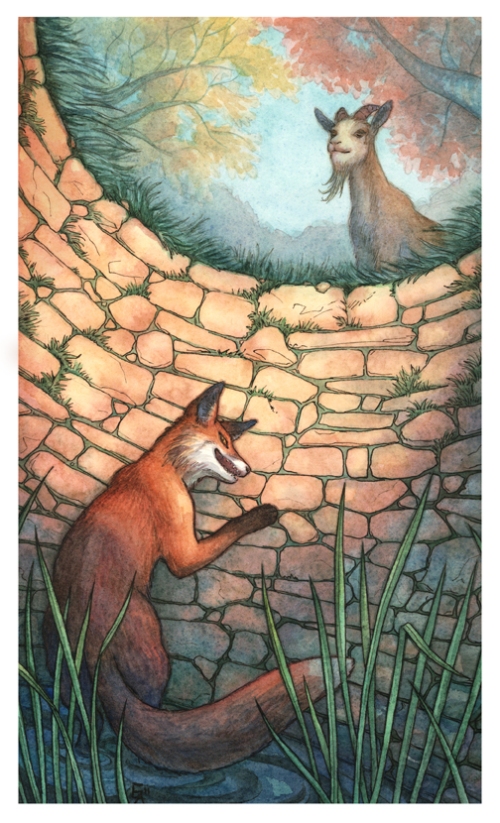
Do you take pictures or do any types of research before you start a project?
All the time! Since my work is more realistic I like to make sure my anatomy is correct and that my poses are actually doable. I also research historical clothing, architecture, plants, animals, etc.
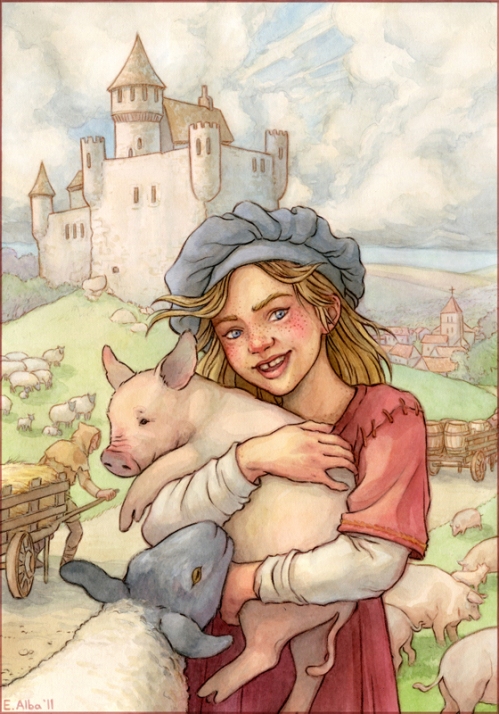
Do you think the Internet has opened doors for you?
Definitely. It’s great for promoting and networking, and that mentorship I mentioned with Rebecca Guay was all done online. If you’re not on the internet promoting your work or with a website than I can’t imagine how you would get work now…
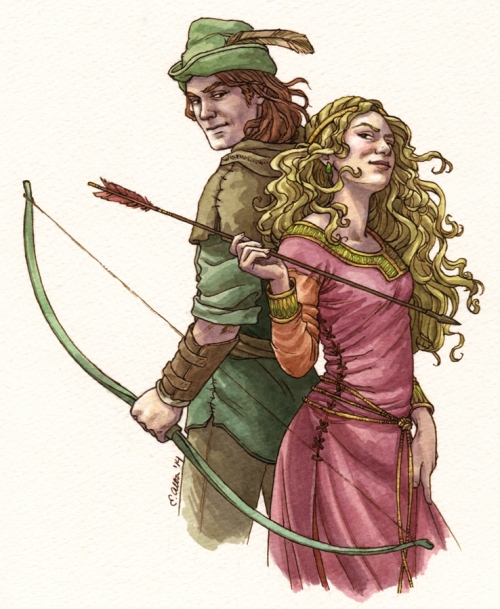
Do you use Photoshop or Corel Painter with your illustrations?
I’ve used Painter in the past and would like to relearn it. I use Photoshop all the time though.
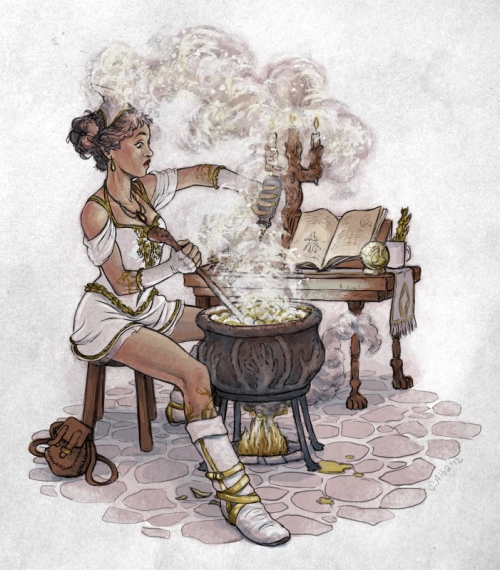
Do you own or have you used a Graphic Drawing Tablet in your illustrating?
I have an ancient Intuos II tablet. Should really buy a new one because it’s starting to act wonky! I do a lot of my sketching on Photoshop with my tablet. Also make my color tests digitally. Sometimes I work entirely digitally, but I prefer traditional media. It’s very useful to know though.
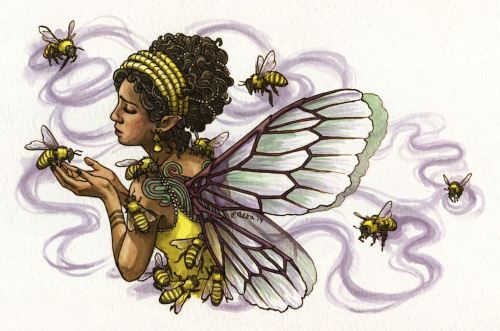
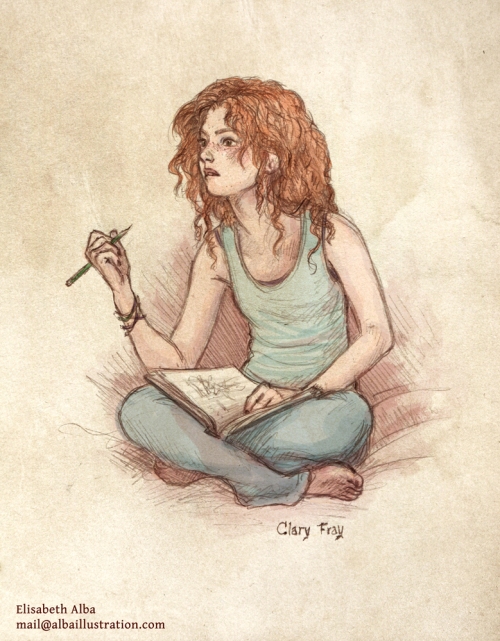
Do you have any career dreams that you want to fulfill?
I would love to get more fantasy work from publishers. My dream job would be to do covers and interior illustrations for a middle grade or YA fantasy book/series, like Harry Potter or Series of Unfortunate Events. Someday I might like to write and illustrate a book, but right now I’m just concentrating on getting more clients and building/improving my portfolio.
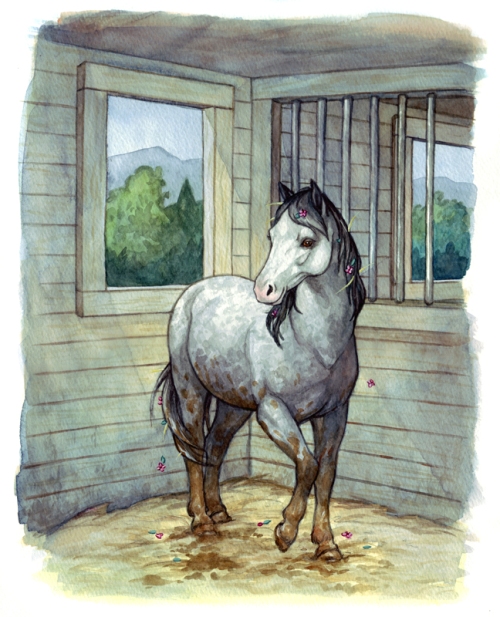
Above: Scholastic’s Fancy, part of the Breyer Stablemates book series.
What are you working on now?
I gave myself time to work on a personal project – I have a booth at MOCCA in April, a comic convention here in NYC. I wanted to make a comic sample to share, so I am working on that all this month. I am also working with a private client on her self-published fantasy book – a map and book cover!
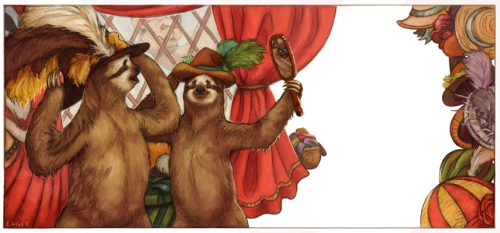
Do you have any material type tips you can share with us? Example: Paint or paper that you love – the best place to buy – a new product that you’ve tried – A how to tip, etc.
I love Dr. Ph. Martin Black Star matte ink. Sometimes it’s hard to find. I had to order it online last time. It’s completely waterproof and flows wonderfully. I also love working with layers of acryla gouache. My mentor, Rebecca Guay, recommended them. They flow like watercolor but dry like acrylics, so they don’t wipe away. Also, if the paper I’m working on isn’t too thick and it’s not too big, I print out my drawings directly onto the watercolor paper so that I don’t have to redraw it!
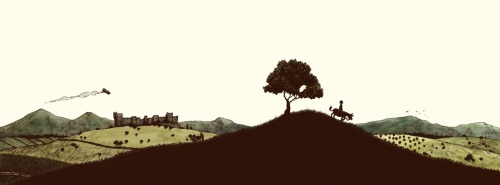
Book Cover for SVA thesis book, Nico’s Journey, watercolor and ink.
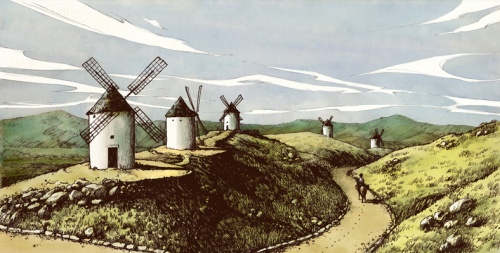
Interior Art

Any words of wisdom on how to become a successful writer or illustrator?
Don’t get discouraged. Do everything you can to keep improving. It is a lifetime of learning and practicing! Do what you love, not what you think gets work. You’ll end up making better work.

One of my interior illustrations of a young George Lucas (he was actually very handsome!) working on a draft of Star Wars, surrounded by reference material.
Thank you Elisabeth for sharing your process, journey, talent, and expertise with us. It is easy to see how you have managed to be so successful. Please make sure you let us know about all your future successes. We’d love to have you share them with us. You can see Elisabeth’s work at:
www.albaillustration.com
www.albaillustration.com/blog
https://www.facebook.com/albaillustration
https://www.etsy.com/shop/albaillustration
http://albaillustration.tumblr.com/
http://www.inprnt.com/gallery/albaillustration/
https://twitter.com/elisabethalba
Please take a minute to leave a comment for Elisabeth. I know I would love it if you did and I am sure Elisabeth would enjoy hearing from you. Who knows she could someday illustrate your book.
Talk tomorrow,
Kathy
Filed under:
authors and illustrators,
demystify,
illustrating,
Illustrator's Saturday,
inspiration,
Process Tagged:
Elisabeth Alba,
MFA in Illustration,
School of Visual Arts,
University of Flordia 


By: Kathy Temean,
on 3/4/2014
Blog:
Writing and Illustrating
(
Login to Add to MyJacketFlap)
JacketFlap tags:
Agent,
Tips,
opportunity,
Agent Query,
Editor & Agent Info,
Publishers and Agencies,
demystify,
Places to sumit,
Liza Dawson Associates Literary Agency,
Agent Looking for...,
Agent Wishlist,
Hannah Bowman,
Add a tag
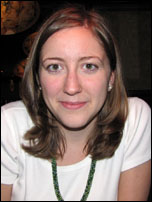 Thought you might like to see what agent Hanna Bowman said she was looking for this past week. Just remember now is not to time to start writing a story to fit this wish list, since by the time you finish, Hanna will probably be on to wanting other things. But maybe there is someone reading this post who has a manuscript written that is a perfect fit and is looking for a home. Or maybe you are working on something that fits and this will spur you on to finishing the book. Tip: Just make sure your manuscript is revised and polished before submitting. I hope this helps someone.
Thought you might like to see what agent Hanna Bowman said she was looking for this past week. Just remember now is not to time to start writing a story to fit this wish list, since by the time you finish, Hanna will probably be on to wanting other things. But maybe there is someone reading this post who has a manuscript written that is a perfect fit and is looking for a home. Or maybe you are working on something that fits and this will spur you on to finishing the book. Tip: Just make sure your manuscript is revised and polished before submitting. I hope this helps someone.
Hannah Bowman joined Liza Dawson Associates Literary Agency in 2011. She has a B.A. from Cornell University, summa cum laude in English and magna cum laude in Mathematics. While a student, she spent four summers working in particle physics at Fermi National Accelerator Laboratory, before eventually deciding her true interest was books.
Hannah’s clients include:
-Pierce Brown (RED RISING trilogy, Del Rey, Feb. 2014) -Rosamund Hodge (CRUEL BEAUTY, Balzer & Bray/HarperCollins, Jan. 2014) -Brian Staveley (THE EMPEROR’S BLADES, Tor, Jan. 2014) -Dianna Anderson (DAMAGED GOODS: CHRISTIAN AND FEMINIST IN THE WAR ON WOMEN, Jericho Books, Spring 2015)
In her free time, she plays the organ.
Hannah specializes in commercial fiction, especially science fiction and fantasy, young adult fiction, women’s fiction, cozy mysteries, and romance. Hannah is also interested in nonfiction, particularly in the areas of mathematics, science and religion (especially history and sociology of Christianity).
HERE IS HANNA’S WISH LIST (This past week):
1. I’d love some great narrative nonfic about the history of science, like Bill Bryson’s A SHORT HISTORY OF NEARLY EVERYTHING.
2. A Crichton-esque science thriller that really knows its science.
3. I’d love a great medieval mystery like Sharon Kay Penman’s THE QUEEN’S MAN
4. And I’m always looking for funny, lighthearted YA contemporary romance, the kind with no heavy issues.
5. I would love to find some great YA fantasy with a female protagonist — think Tamora Pierce, Sabriel,
6. I’m looking for books that play with narrative form like CODE NAME VERITY
7. I would love some great historical fantasy, or other epic fantasy for adults.
8. You know what I want? Fantasy, adult or YA, as fresh and creative as SABRIEL
9. The next Thursday Next. Smart, funny, brilliant, creative, full of literary meta-references
10. A medieval mystery series like Sharon Kay Penman’s THE QUEEN’S MAN or Sharan Newman’s DEATH COMES AS EPIPHANY.
11. YA girl-power fantasy a la Tamora Pierce with some really new, unusual worldbuilding.
12. In YA: a really funny (makes me laugh out loud funny) contemporary.
13. Funny urban fantasy like Kevin Hearne’s Iron Druid books.
14. More fantasy: I want the next LIES OF LOCKE LAMORA or THE PALACE JOB. Magic and heists and cons!
15. Military fantasy that tells its battles as well as THE THOUSAND NAMES — a really great magical campaign.
16. Gorgeously-written, literary historical fantasy — something as numinous as JONATHAN STRANGE AND MR. NORRELL.
Contact Hannah at [email protected].
HANNA’S QUERY TIPS:
1. Who’s the main character, and why is he or she interesting/appealing?
2. What’s the plot, and how will it surprise me and take my breath away?
3. What’s the setting, and what interesting elements make it seem real?
4. A compelling, three-dimensional character in a well-realized setting (realistic or speculative) with a page-turning story to tell, will hook me.
Blog: http://hannahbowman.tumblr.com/
Twitter@hannahnpbowman
For further insight, Literary Rambles has an interview and links to other interviews with Hanna.
Talk tomorrow,
Kathy
Filed under:
Agent,
demystify,
Editor & Agent Info,
opportunity,
Places to sumit,
Publishers and Agencies,
Tips Tagged:
Agent Looking for...,
Agent Query,
Agent Wishlist,
Hannah Bowman,
Liza Dawson Associates Literary Agency 


By: Kathy Temean,
on 3/2/2014
Blog:
Writing and Illustrating
(
Login to Add to MyJacketFlap)
JacketFlap tags:
authors and illustrators,
How to,
Melissa Iwai,
New Idea,
demystify,
Nanci Turner-Steveson,
Agent Sean McCarthy,
Steve Meltzer,
Ask Kathy,
March Writer's Retreat,
Add a tag
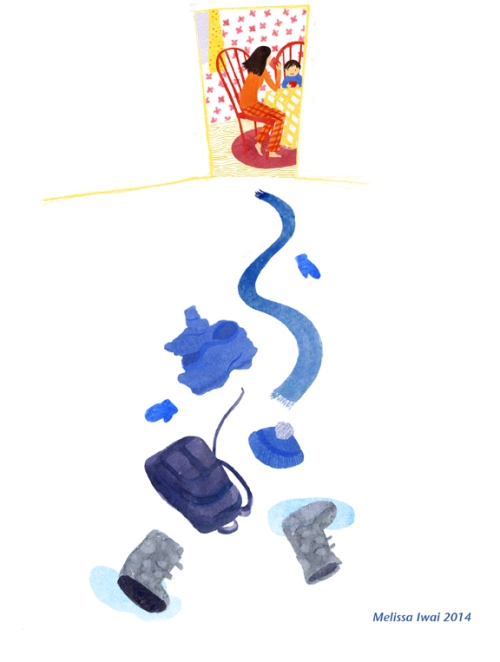
This fun illustration was sent in by Melissa Iwai. Melissa has illustrated over twenty picture books, and her first picture book that she wrote and illustrated was, Soup Day. She was featured on Illustrator Saturday on October 13, 2012. Click here to view.
In the past couple of weeks I have realized that there are always new writers and illustrators stopping by in hopes to learn more about the children’s book publishing industry. I have been blogging everyday for the last five years and so many subjects have been discussed, but many of you have not been following me for that many years. Example, I was afraid to blog about the formatting issue thinking that writers would think I wasn’t covering a important topic, but it turns out that many of you thanked me for clarifying the subject. I breathed a sigh of relief, because I don’t want to waste anyone’s time.
This lead me to wondering if you had more questions that you would like answered. If you do I would be willing to collect them, answer the ones I know and get editors and agents to weigh in on others. Why don’t we give it a test run? I am going to the March Writer’s Retreat that I put out there at the end of last year. Steve Meltzer, Associate Publisher/Executive Managing Editor of Dial Books for Young Readers, Dutton Children’s Books, Kathy Dawson Books, and Celebra Children’s Books and Agent Sean McCarthy from McCarthy Lit are the two faculty members for our small group. We will be spending the weekend with them, so I could get answers to anything you want to know.
If you have a burning question, please send it to Kathy.temean(at)gmail.com. You can ask more than one question and it can be about any aspect of the children’s publishing industry. You can be a completely new writer or illustrator, or an author or and illustrator who has published many books. Just make sure you put ASK KATHY in the subject area of the email, so I can search on that. I look forward to reading your questions and sharing the answers later the month.
Had to share the picture below with all you winter weary people out there. Nanci Turner Steveson move from New Jersey to her dream state – Wyoming. Maybe you will feel a little less weary after you see all the snow at her house.
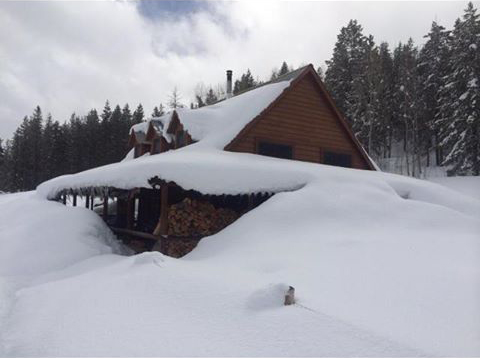
Now that is snow. It brings the words, “Cabin Fever” to my mine.
Talk tomorrow,
Kathy
Filed under:
authors and illustrators,
demystify,
How to Tagged:
Agent Sean McCarthy,
Ask Kathy,
March Writer's Retreat,
Melissa Iwai,
Nanci Turner-Steveson,
New Idea,
Steve Meltzer 


By: Kathy Temean,
on 2/28/2014
Blog:
Writing and Illustrating
(
Login to Add to MyJacketFlap)
JacketFlap tags:
Interview,
Tips,
inspiration,
Advice,
Process,
authors and illustrators,
Wendy Martin,
An Ordinary Girl,
demystify,
Illustrator's Saturday,
School of Visual Arts,
Add a tag
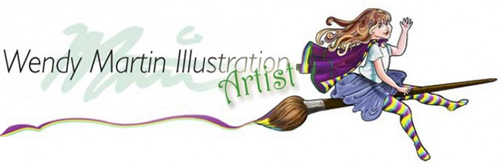
 A transplanted New Yorker now living in Missouri, Wendy Martin has been working as an illustrator for 25+ years.
A transplanted New Yorker now living in Missouri, Wendy Martin has been working as an illustrator for 25+ years.
Wendy’s love affair with art and illustration began at an early age. One of her earliest memories is of sitting with a pile of crayons and papers strewn around her proclaiming to her parents that someday everyone in the world would be looking at her art. In spite of her parents’ attempts to steer her toward a more practical choice, she never wanted to do anything else.
So, Wendy followed her heart and earned a degree in Fashion Design from the Fashion Institute of Technology, then continued her art education at the School of Visual Arts, earning a B.F.A. in Graphic Design. These disciplines can still be seen in her work in her strong lines, textures and detailed patterns.
Her career began in advertising and graphic design in New York, where she was often called upon to create spot art for a variety of clients, which included Fortune 500 companies such as Kraft, General Electric and Sears. After her move to Missouri in 2000, she turned her focus to her true love, children’s books. An Ordinary Girl, A Magical Child, a children’s book she both wrote and illustrated was released in 2005. When the original publisher folded, An Ordinary Girl, A Magical Child was picked up by a new house, edited and re-released in 2008, then went on to become a finalist in the 2009 international COVR awards. Four additional picture books and a coloring book quickly followed.
Wendy can still be found sitting around her studio with papers strewn around her creating stories and illustrations for children. She has since traded in her crayons for watercolor, pen and ink, and a computer.
She is a member of the Society of Children’s Book Writers and Illustrators, and the Mixed-Up Files of Middle-Grade Authors.
Here is Wendy discussing the February 2014 promotional postcard mailer she created entirely in Adobe Illustrator:
I’ve been using AI since it first came out. Sometime in the early to mid 90s, I believe. That first version of the program was installed via a couple of 3×3 floppy disks. Remember those? Not very floppy, and incredibly tiny amount of storage space. I currently use CS5, the CD for the program stores more data than my first Apple computer.
Not only has AI become a much bigger program, it now has so many more capabilities to create painterly art. Here is my illustration process in Adobe Illustrator.
I start out with paper and pencil. I may use a sketchbook, but in most cases, I just grab a piece of blank copy paper and scribble till something comes of it. Once I have a messy thumbnail down (I won’t bother sharing it, since it is unintelligible to anyone but myself) I work on character development. Characters are sketched separately, scanned in and layered into Photoshop. Adjustments and revisions are made and background options explored.

Once I have my rough layout designed in Photoshop, I bring the file into Illustrator as a template layer. I begin inking over the pencil rough. As you can see above, the inking has some major changes, especially to the right half of the image. I decided the image of the three boys and a dog playing with a couple of basketballs was too ordinary. I added more story telling to the illustration by changing the middle boy’s basketball to a swirl of light. Where the boys crossed over the division delineated by the swirl, they and their environment became a fantasy world. The dog was out-of-place, so it transformed into a fox.
I create my characters on separate layers in AI, that way I can revise them in placement, size etc, easily. The only drawback, if you can call it that, of this technique is I have to draw each character in its entirety. It’s a little more work initially, but makes the fine adjustments throughout the image creation much less of a hassle.

When the majority of the character inking is done, I begin adding flat color. With this piece, I had several false starts with getting the swirling light and the portal to reflect the vision in my head. Glowing orbs of light are a lot easier to accomplish in Photoshop, apparently, because I couldn’t find any reference or samples created utilizing AI. Since I didn’t want the background to compete with all that was going on with the main characters, I hadn’t inked it. I wanted to simulate a bright sunny day, but differentiate the left side from the right. I also wanted to avoid flat colors in the hills, fields and court surface, so I messed around with a variety of textures until I got the effect I was looking for. The glowing orb and separation are progressing to closer to the image in my mind. I added a larger, darker version of the background flowers to the foreground.

I worked the details into the left side of the background, adding leaves to the tree with flowers and grass at its roots. I decided the costuming on the boys was too similar in color and values to those of the background. I changed them so the boys appeared to jump forward in the space. The glowing orb and its trailing light has finally come close to what I was aiming for. I began laying in the fur on the fox to make it more dimensional. Then I moved to the boy on the left and concentrated on the highlights and shadows on him, his clothing and the basketball he’s dribbling.
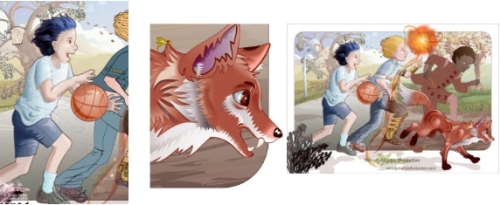
I worked on the boy and then moved over to the fox bring dimensionality and a painterly feel to both of these characters. Then I completed the background on the right side, adding the trees, leaves, flowers and grasses along with their shadows. The color and shading were also added to the basketball hoop. Shading and highlighting of the middle boy was also attacked, paying special attention to the cross-over details on his clothing to differentiate the mundane from the magical worlds he was straddling. The lighting on this was tricky since he is split by the trailing light of the glowing orb.

More details were added to the fox before I moved on to the last boy. As I was working, I noticed all the boys’ legs were in the same position. I didn’t like the way the elf shoes were hitting the fox, so I revised the boy’s lower half to add more variety to the children and remove the confusion between the elf shoes and fox. Once the revisions were made, I continued adding details to the woodland elf costume. It’s hard to tell here, but the elf-child has leaves scattered in his hair as well. I also decided the style of middle boy’s hand didn’t match the rest of the image, so I made it more realistic and changed its position.
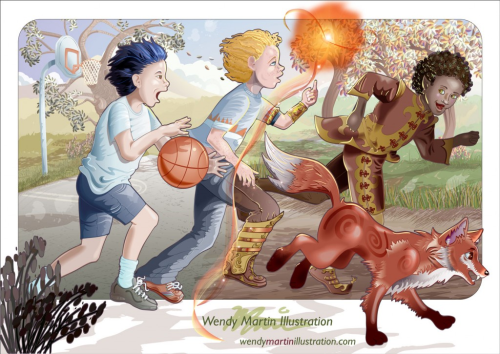
While I was adding final details, I decided the two boys on the left needed to have their faces revised. Although the adjustments are minor, they gave the boys more definition and made their faces more in keeping with the semi-realistic style of the image. Almost done but for a few more minor revisions.
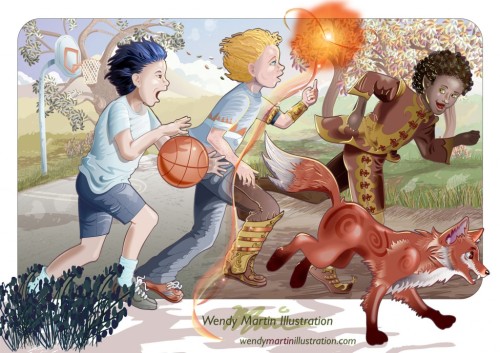
Finished piece.
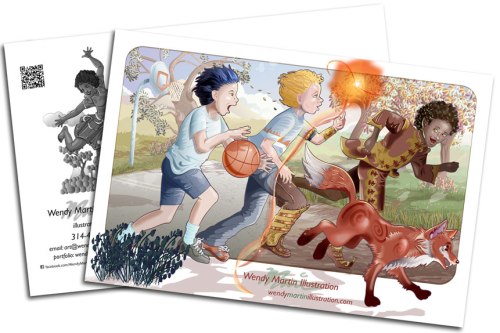
Here is the printed piece back from the printer and ready to mail out.
How long have you been illustrating?
I’ve been creating art in one form or another for as long as I can remember. When I was 12, the children’s librarian was so impressed with my origami pieces she invited me to be the guest artist for the display cases in the children’s wing library entrance. It was quite an honor, since the guest artists were usually well-known professionals from Long Island or New York. The display cases where 2’x6’ long and about 18” high, one case on each side of the entrance hall. I created a mountain village scene for one and a fishing village scene for the other. It took me three months to complete all the origami pieces.

How did you decide to attend Fashion Design from the Fashion Institute of Technology?
I went to a very large high school. There were close to 3,000 students in the 3 grades. Because of the size of the school, and the affluence of a lot of the surrounding communities, my upper grade education was more like college. The high school had wings divided by discipline. One of the wings was the Arts and Theater wing. I had classes in fashion illustration, textile design, life drawing and costuming. I was very passionate about pattern and textile. Everyone assumed I would go to an art college. I wanted to focus on illustration, but my parents talked me into going into fashion design because they believed it had more practical applications in the working world. I applied to Pratt, FIT and Parsons. Pratt granted me a full scholarship, but when my parents and I went to visit the college, they were afraid for my safety in the Brooklyn neighborhood the college was located in. I chose FIT because it had a 2-year program and I wanted to get out on my own as soon as possible.
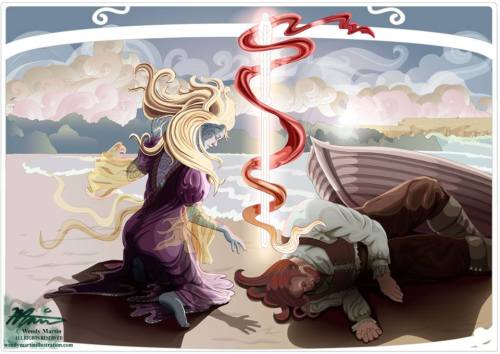
What made you decide to continue your education at the School of Visual Arts for Graphic Design?
I was offered a job before I even graduated from FIT. I was thrilled until the newness wore off. I was the designer for a little firm that created clothing for low-end department stores similar to what Wal-Mart is today. Part of my job was to go to places like Macy’s and Bloomingdales and make sketches of their merchandise, bring my sketches back and make patterns for my employer. In the fashion world it’s called a knock-off and was part of the business. It was sucking the soul right out of me. So I left the fashion world and got a job as an illustrator at a hand-painted clothing store. I was paid by the piece, and became really fast at copying the owner’s designs onto various items of clothing. I struck out on my own, came up with my own line and gave it a go. Part of what I needed to do was create advertising. I loved putting all the pieces together, but decided I would be better off if I got my BFA and learned from experts. So I applied to SVA for their Graphic Design program.
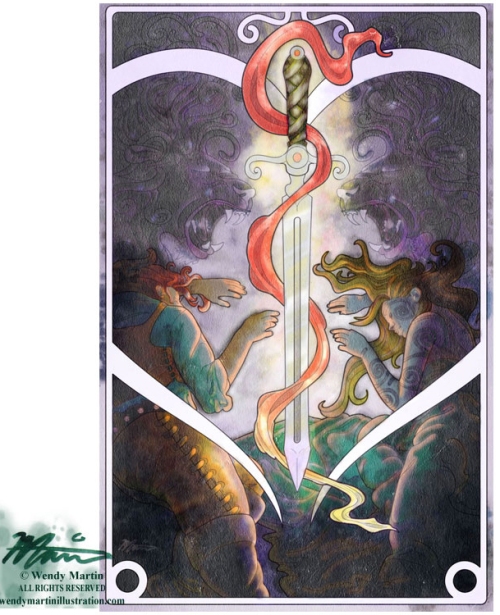
What were you favorite classes?
Richard Wilde, the head of the Graphic Design program, taught one of my classes. He really pushed the students to think outside of the box to fulfill the assignments. I loved that class because there was always a new challenge. I no longer remember what it was called, but I do know Mr. Wilde create a book a number of years later based on the class with samples of student work.
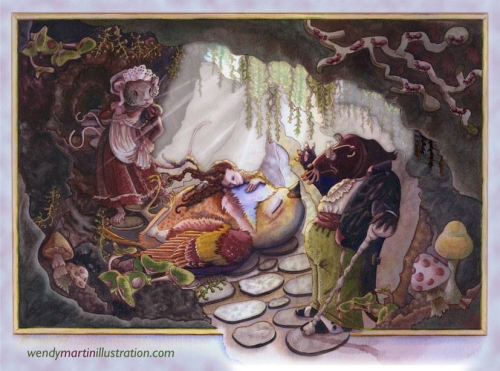
Did SVA help you get the job in advertising after you graduated?
Not really. At that time NYC was a very scary place to be living. I move to Connecticut right after I graduated. I got a job as an Art Director for a publisher of 5 business trade publications. After working there for a while, I found a job closer to home as a paste-up artist for an advertising firm that created ads for the telephone book yellow pages and menus for fine dining establishments. The owner of that business got into serious trouble with the law. One day, after I’d been working there for a few years, I showed up to work and the building was padlocked shut. So I became a freelancer. One of the places I freelanced for was Black Birch Graphics, a non-fiction school library book publisher. Another place I freelanced was an advertising agency creating business-to-business publications for Fortune 500 companies. Eventually, I ended up freelancing for this company full time. I was with them for 9 years.
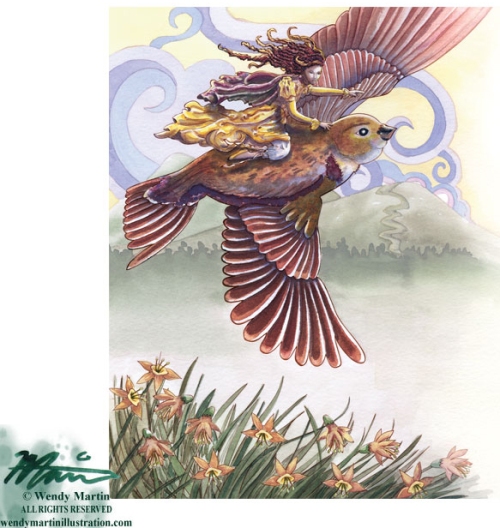
What made you leave that job in Connecticut and move to Missouri?
I blame the Internet. I met the man who became my husband on-line. He didn’t want to be separated from his children by moving to New England, so I sold my house by the beach and relocated to Missouri.
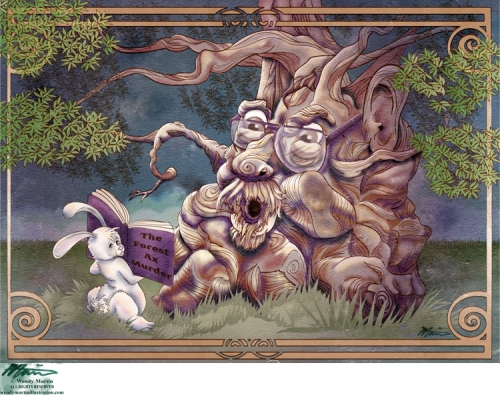
Do you feel that the classes you took in college have influenced your style?
Yes. I love patterns and flowing lines in clothing. My style is very graphic as well, probably from long years as a technical illustrator with the advertising agency.
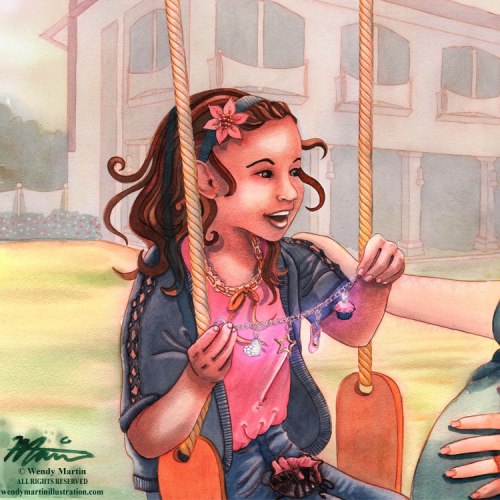
What was the first art related work that you did for money?
When I was 11 or 12, my mother hired me to illustrate a pamphlet she wrote on dog training. I created 5 illustrations for her. I think she paid me $50. The illustrations were not very professional, but I got paid.
My first “real” illustration job was for Crossword Magazine in 1987. Mr. Wilde had an agreement with the art director to show him student work. If the AD liked any of the images, the student was offered the opportunity to create mechanicals for the cover of the magazine. I had two pieces selected. This was before computers. I had to ink all those lines by hand, with a Rapidograph. I was lousy at it and ended up hiring a fellow student to do the inking for me. We split the fee.
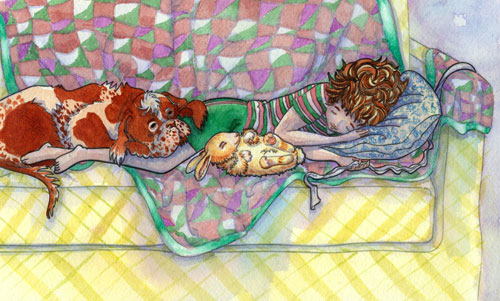
When did you decide you wanted to illustrate a children’s book?
After I moved to Missouri.

How did you do freelance work while you were working to break into the children’s publishing industry?
I freelanced for places like Sear Photo Studios, Purina, and Mays Company. I did illustration, logo design, prop design, photo retouching and general graphic design.

Was An Ordinary Girl, A Magical Child, your first book?
Yes.
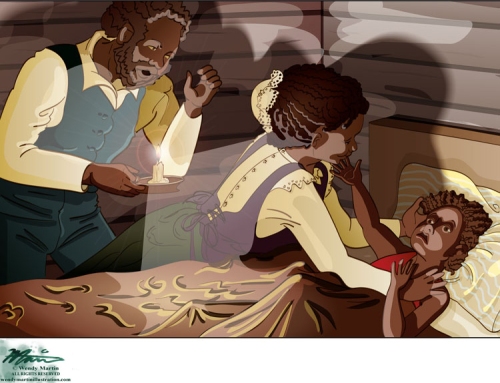
Who published that book in 2005?
Pagan World Press
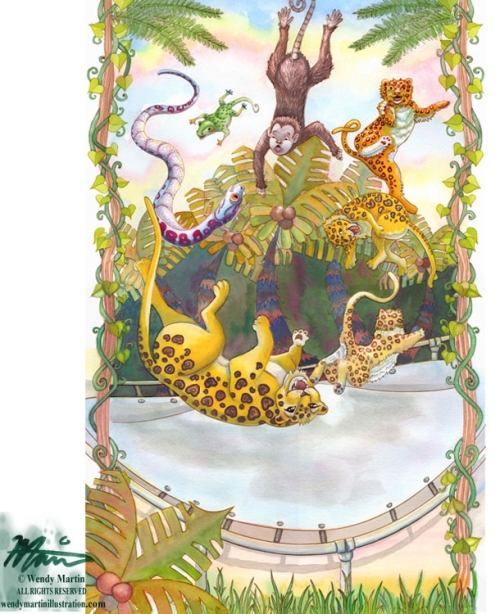
How did that contract come about?
Ordinary Girl is a very niche book. The rejections I received all told me the book’s market was too small. I was lamenting this to a fellow writer friend of mine when she said her publisher was looking for Pagan-focused books. I sent him a query and he jumped at the chance to publish the book. Sadly, the publisher folded shortly after my book was released.

How did you find another publisher after the first publisher folded?
It pays to have friends who know people. Another friend put me in touch with this publisher and I signed a 3-book contract, which included the already published book.
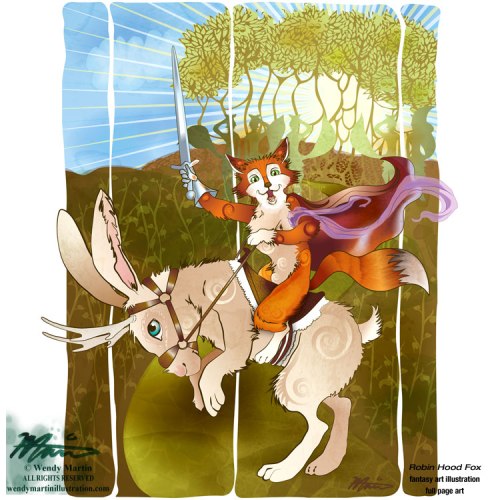
Did you have a hard time regaining your rights, so you could get it published with a new publisher?
I had a lawyer review the first publisher’s contract before signing it. One of the clauses was reversion of rights after a certain time period of the book being unavailable. So I waited the allotted time period, had the lawyer draft me a letter declaring my intentions and the clause for reversion of the rights and got them back. It pays to have a good lawyer on your side.
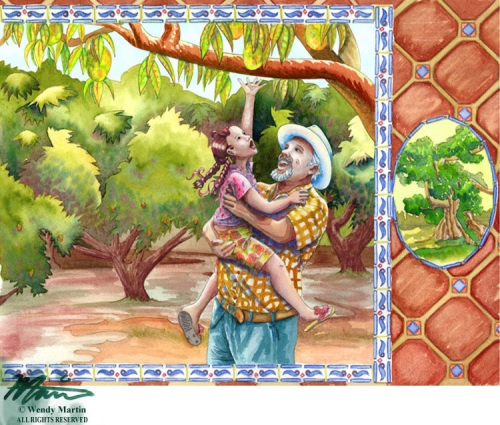
Do you consider that book to be your first big success?
Ordinary Girl went on to get an award sticker and was reprinted 3 times. It’s had a good run and still outsells all my other books.

How many picture books have you published?
Five
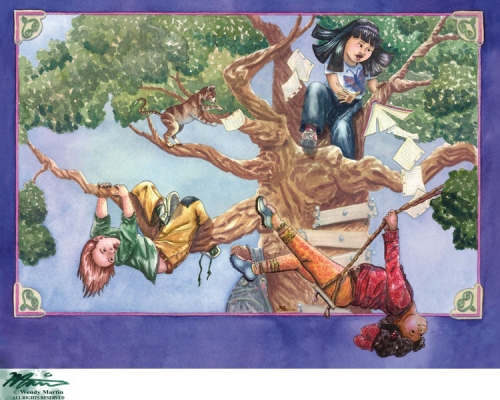
Were they with the same publisher?
Yes.
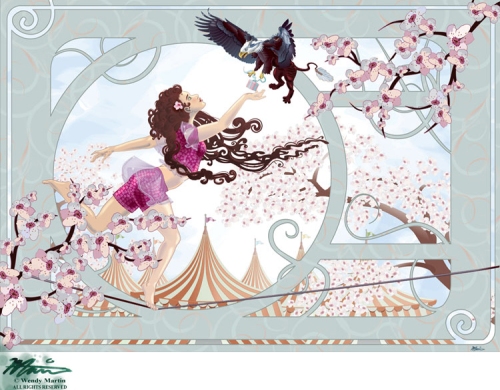
Do you plan to write and illustrate more books?
I’m working on several dummies at the moment.
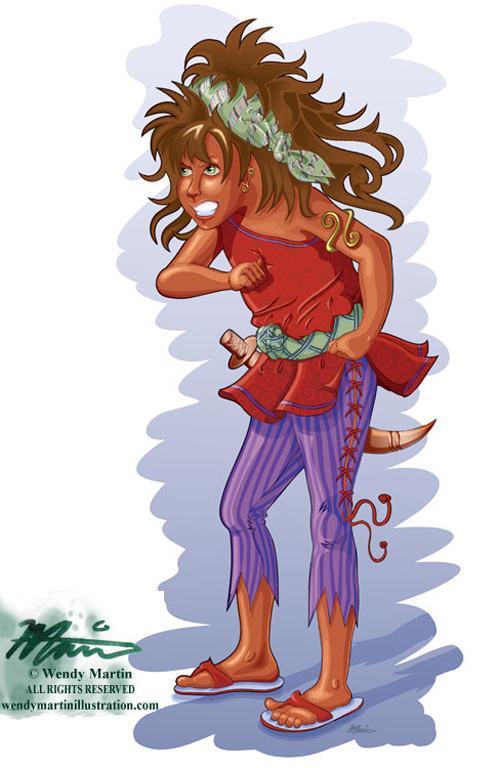
Are you open to working with self-published authors?
I am, under certain conditions.
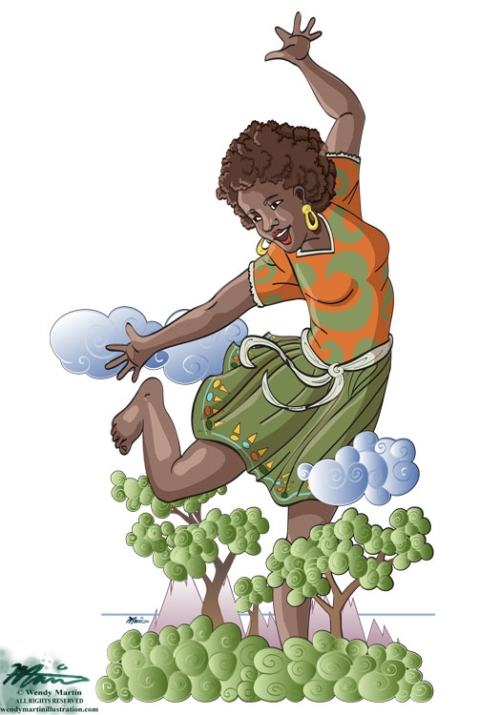
What materials do you use to paint your color illustrations?
I use digital and traditional medias.
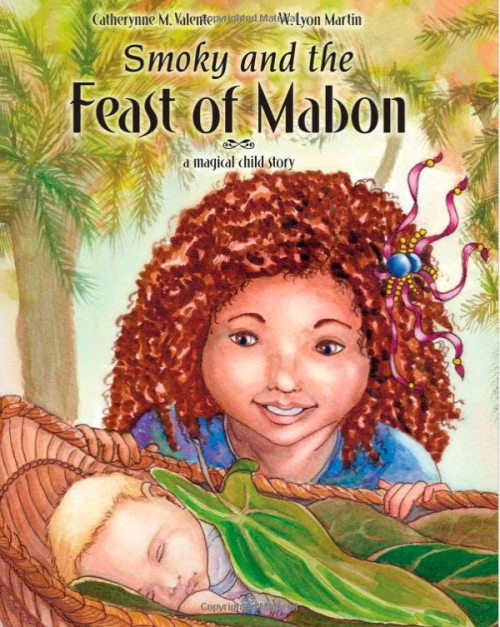
What do you use with your black and white?
Mostly digital. I always start with a pencil sketch.
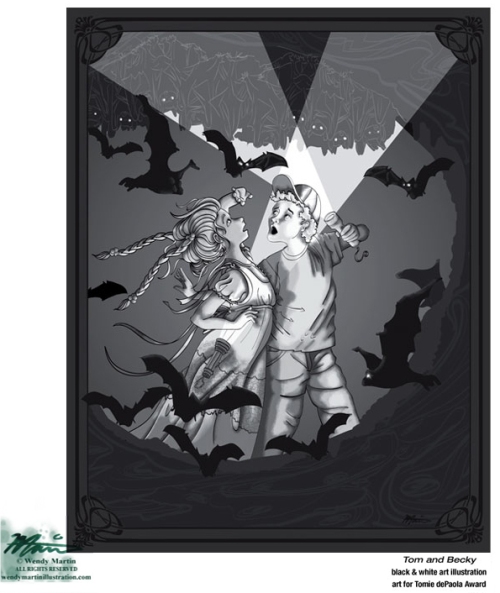
Do you feel there is more work out there for black and white illustrations?
I think it depends on the market and the artist’s style. My dream job would be doing color covers with interior line art for chapter or middle grade books.

Have you done illustrations for any children’s magazines?
Yes.
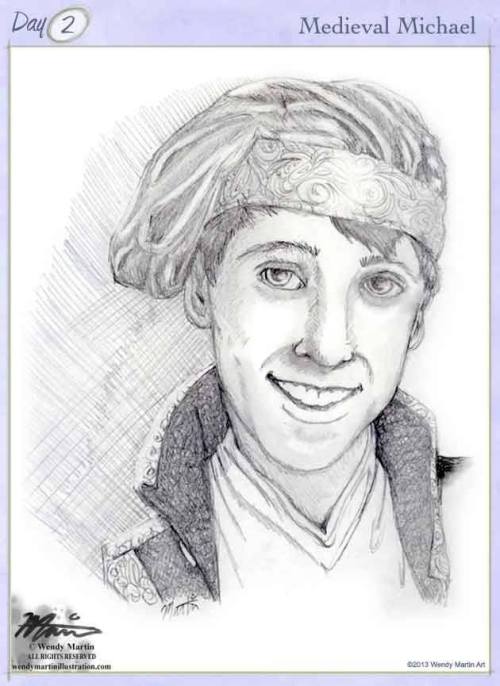
What types of things do you do to find illustration work?
I used to advertise in print annuals and on group portfolio sites, but most of my paying work came from postcards and direct email marketing so that’s where I focus my efforts now.
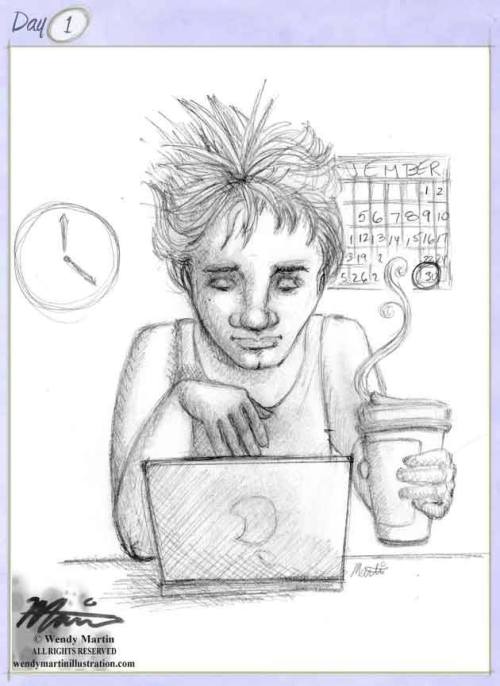
What is the one thing in your studio that you could not live without?
A padded seat cushion. After spending hours in a chair, it really makes a huge difference in being able to keep working in comfort.
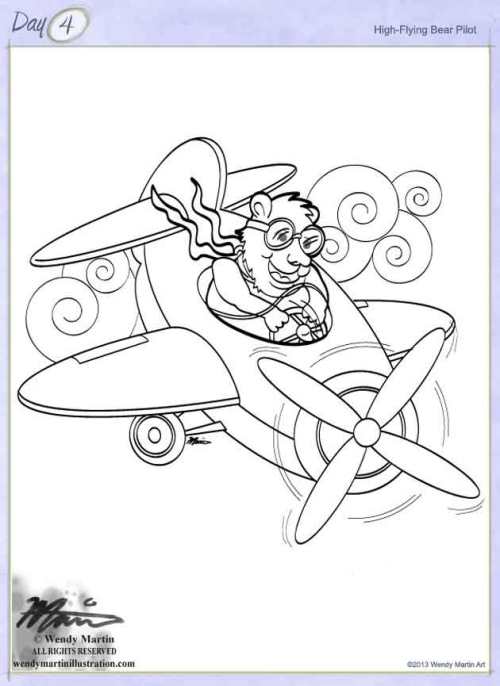
Do you try to spend a specific amount of time working on your craft?
I consider illustration my full-time job. I am in the studio every weekday morning at 7. I usually work until 3 or 4. If I have a pressing deadline, I will go back to work in the evenings and on weekends. I’d say I spend about 40-50 hours a week in the studio, either working on a piece or on marketing or updating my blog and web site.
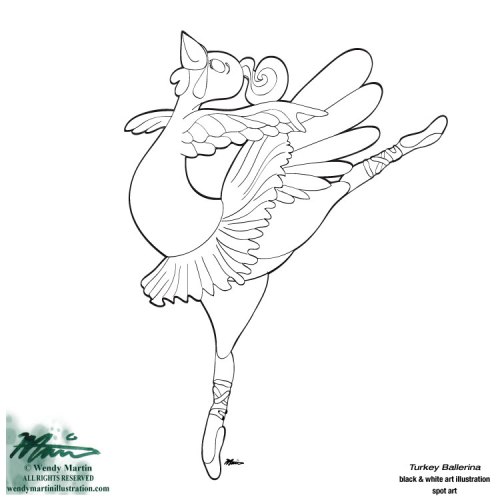
Do you actively look for school visits? Or do they find you through word of mouth?
At the moment I’m not actively seeking school visits. I will probably go back to it when I have a new book to promote.
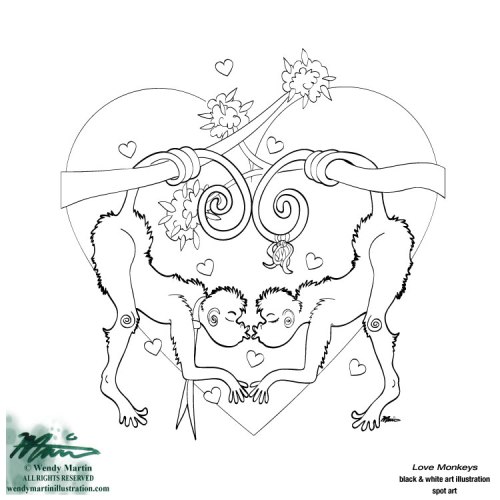
Do you have an artist rep.? If yes, who? If not, would you like to have one?
I’m between agents right now. My last rep decided she no longer wanted to be in the publishing business and quit. The book she was marketing is hidden in a drawer somewhere since I don’t know where it was shown. I have several picture books out on submission with carefully selected agents.
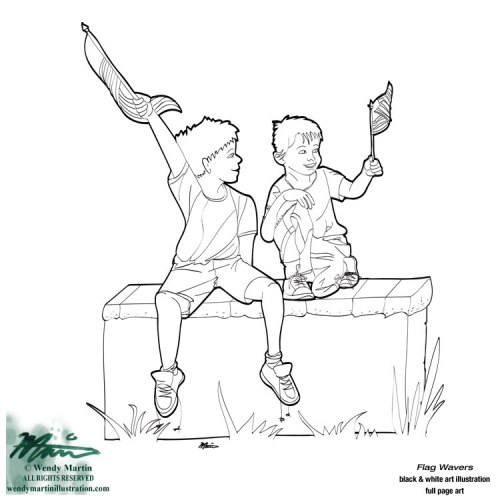
Do you take pictures or do any types of research before you start a project?
I spend a good portion of time on research and reference collection before and during any project. I used to berate myself that I was wasting time, but I now know it’s an essential part of my process.
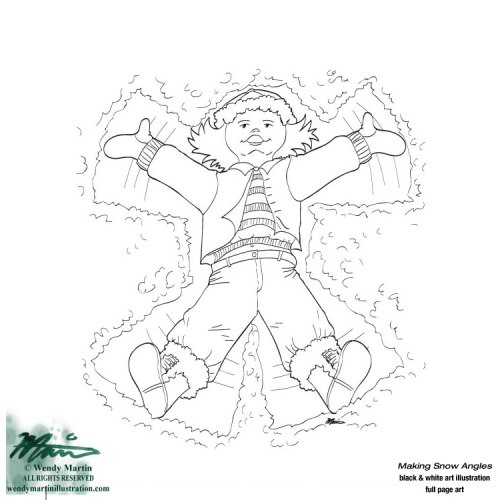
Do you think the Internet has opened doors for you?
Most definitely.

Do you use Photoshop or Corel Painter with your illustrations?
I use Photoshop only after an illustration is 90% done. Mostly for minor editing or color correction.
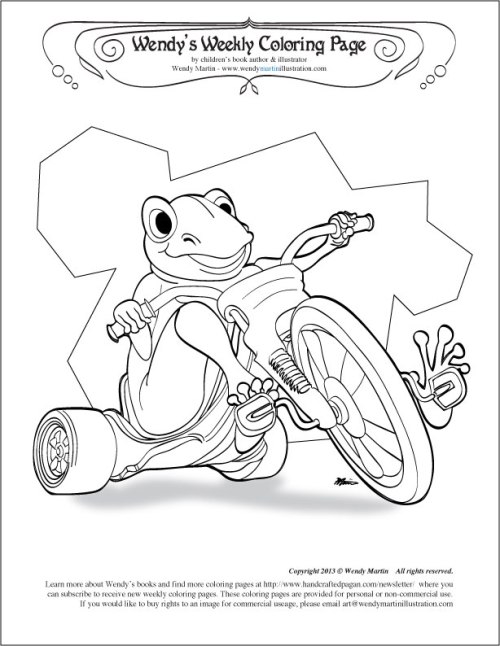
Do you own or have you used a Graphic Drawing Tablet in your illustrating?
I have a 12-year-old 4X5 Wacom tablet. I use it nearly every day.
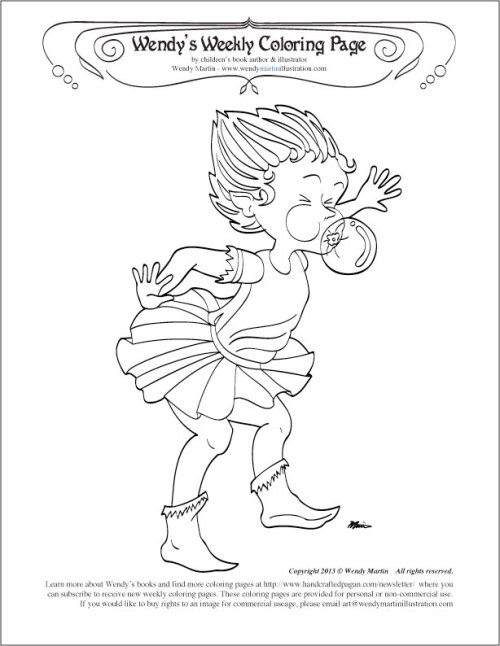
Do you have any career dreams that you want to fulfill?
I’d like to illustrate books for the major publishers. I’d also like to have steady educational publishing clients.

What are you working on now?
I create new pieces all the time. I also have several picture book dummies in the works. Plus, I’ve branched out into fantastic art in the past few years. Last May, my husband and I took a mini vacation to Kansas City and attended Spectrum Fantastic Art Live. I went as a spectator, but took some postcards with me. Charles Vess chastised me for not having a booth and displaying my art there. So this year I bit the bullet and applied for a booth and was accepted. May is only a few short months away, so I’m focusing on creating enough fantasy art to fill my booth. I hope Mr. Vess likes what he sees.

Do you have any material type tips you can share with us? Example: Paint or paper that you love – the best place to buy – a new product that you’ve tried – A how to tip, etc.
One thing I tell my traditional media students is to buy the best quality art supplies they can afford. For years I used the cheapest paper, paints and brushes to save money. When I finally splurged on quality supplies the difference in my paintings was huge. I had a lot more successful end results.
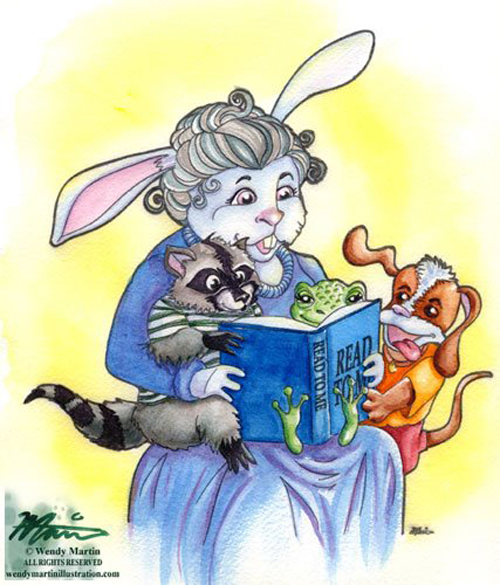
Any words of wisdom on how to become a successful writer or illustrator?
Draw or write every day. Creative endeavors require constant practice. Illustrating is a marathon event. You have to train constantly to compete.
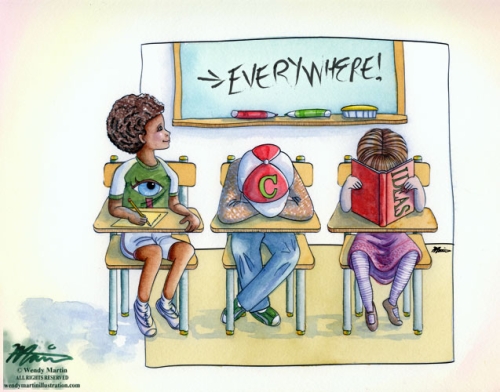
Thank you Wendy for sharing your journey, talent, and process with us. Please remember to keep us up-to-date with all your future successes. You can find Wendy at: www.wendymartinillustration.com
Please take a minute to leave Wendy a comment. I am sure she would like that and so would I. Thanks.
Talk tomorrow,
Kathy
Filed under:
Advice,
authors and illustrators,
demystify,
Illustrator's Saturday,
inspiration,
Interview,
Process,
Tips Tagged:
An Ordinary Girl,
School of Visual Arts,
Wendy Martin 

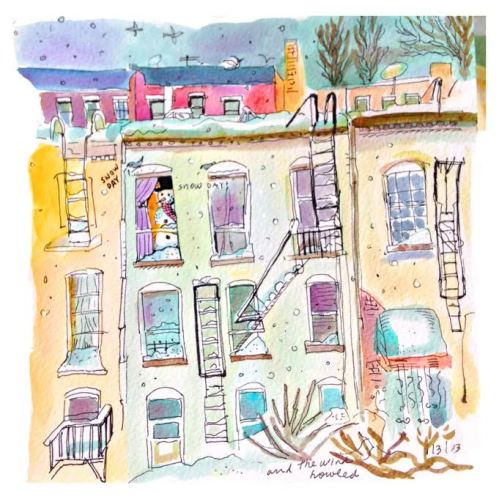
This fun winter illustration was sent in by Illustrator Tracey Berglund. Don’t miss the snowman in the window. It makes me think of the photo Leeza Hernandez sent me a few weeks ago. Her daughter and her built the smallest snowman I ever saw. They made it small, so they could save it in the freezer. Now that is thinking out-of-box. Tracey was my first featured illustrator on Illustrator Saturday back in June 2010. Here is the link: http://kathytemean.wordpress.com/2010/06/05/tracey-berglund-illustrator-saturday/ I think you can see how much Illustrator Saturday has grown since then.
February was a record month for first page submissions. I did not look at all the submissions to see the percentage of people who did not submit properly. We are close to getting the First Pages correct for the monthly critique, but there are still problems which caused a number of people to be pulled out for critique and then skipped, when I opened their Word document and it was not correct.
I think everyone now understands how to format their manuscript when submitting to an agent or editor, so lets just zero in on how to submit for the monthly critique for this blog. You would only format your page this way when you submit a first page to me. If you are doing a first page for an SCBWI event, then they would probably would want a similar forma, but make sure you check. Why the difference? Because if you use the standard format for a first page, you can not show enough for a good critique.
I know I asked you to cut and paste your text into the email, but I sent the word doc to the editor or agent, so if the Word doc isn’t formatted correctly, I can’t send it. I state a first page can have 23 lines, but that doesn’t mean that every manuscript’s text will work out to 23 lines. Some may only be able to fit 21 lines. The first page, just can not be more than 23 lines. Please do not send more than one page.
You don’t have room to put all your contact information on the page. Just your name, title, and genre at the very top. Then start your text on the next line. The example below from Carol Foote drops one line for her title. This is acceptable, but she could have gotten in the 23rd line if she had put everything across the top. The reason her page was not included in the drawing was due to her submitting it after the deadline.
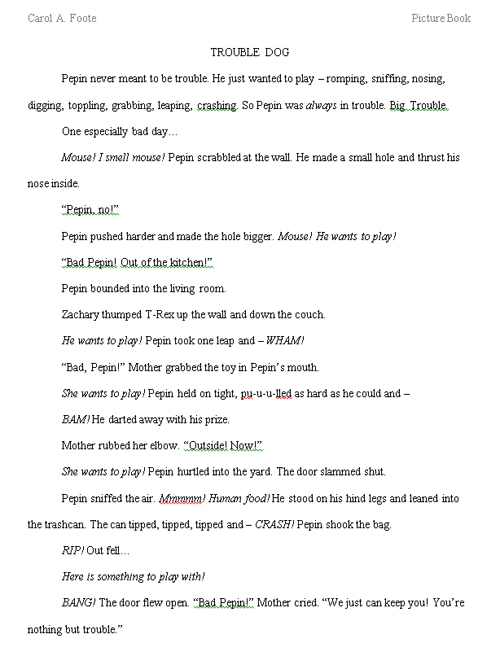
So as long as you follow the guidelines and the example above, send it in before the deadline, cut and paste the text into the email and attach a Word document of the text, put the required title in the Subject area (I search for the submissions using that title), send it to the email listed, and do not include more than one page, you will be good to go.
Hope this helps. If you submitted a first page and did not have it critiqued, please send it in for review in March. Check back tomorrow to read the four that were critiqued. Next week I will announce our Guest Critiquer for March. Deadline for March is March 21st. Title in the subject area March First Page Critique. Email to: Kathy(dot)temean(at)gmail(dot)com
Links for more formatting posts:
Novel: http://kathytemean.wordpress.com/2014/02/13/formatting-novel-manuscript-example/
Picture book: http://kathytemean.wordpress.com/2014/02/02/first-page-critiquer-for-february-formatting-mistakes-call-for-illustrations/
Standards: http://kathytemean.wordpress.com/2009/03/16/formatting-your-manuscript/
Talk tomorrow,
Kathy
Filed under:
authors and illustrators,
Contest,
demystify,
How to,
need to know Tagged:
First Page Critique,
Formatting problems,
Tracey Berglund 


By: Kathy Temean,
on 9/22/2013
Blog:
Writing and Illustrating
(
Login to Add to MyJacketFlap)
JacketFlap tags:
Writing Tips,
Book,
reference,
writing,
Advice,
Writer's Digest Books,
Jessica Page Morrell,
demystify,
Bullies Bastards & Bitches,
Add a tag
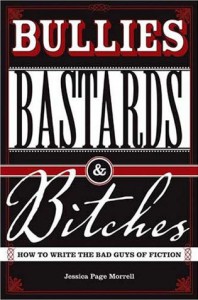
Bullies, Bastards & Bitches
How to Write the Bad Guys of Fiction
by Jessica Page Morrell
Writer’s Digest Books, 2008
ISBN 978-1-58297-484-2
$16.99 paperback, 304 pages
Amazon | BN.com :
- Here are some general differences between a hero and an anti-hero, and how an anti-hero is the antithesis of a traditional hero from:
- A hero is an idealist.
- An anti-hero is a realist.
- A hero has a conventional moral code.
- An anti-hero has a moral code that is quirky and individual.
- A hero is somehow extraordinary.
- An anti-hero can be ordinary.
- A hero is always proactive and striving.
- An anti-hero can be passive.
- A hero is often decisive.
- An anti-hero can be indecisive or pushed into action against his will.
- A hero is a modern version of a knight in shining armor.
- An anti-hero can be a tarnished knight, and sometimes a criminal.
- A hero succeeds at his ultimate goals, unless the story is a tragedy.
- An anti-hero might fail in a tragedy, but in other stories he might be redeemed by the story’s events, or he might remain largely unchanged, including being immoral.
- A hero is motivated by virtues, morals, a higher calling, pure intentions, and love for a specific person or humanity.
- An anti-hero can be motivated by a more primitive, lower nature, including greed or lust, through much of the story, but he can sometimes be redeemed and answer a higher calling near the end.
- A hero is motivated to overcome flaws and fears, and to reach a higher level. This higher level might be about self-improvement, a deeper spiritual connection, or trying to save humankind from extinction. His motivation and usually altruistic nature lends courage and creativity to his cause. Often, a hero makes sacrifices in the story for the better of others.
- An anti-hero, while possibly motivated by love or compassion at times, is most often propelled by self-interest.
- A hero (usually when he is the star of the story in genre fiction, such as Westerns) concludes the story on an upward arc, meaning he’s overcome something from within or has learned a valuable lesson in the story.
- An anti-hero can appear in mainstream or genre fiction, and the conclusion will not always find him changed, especially if he’s a character in a series.
- A hero always faces monstrous opposition, which essentially makes him heroic in the first place. As he’s standing up to the bad guys and troubles the world hurls at him, he will take tremendous risks and sometimes battle an authority. His stance is always based on principles.
- An anti-hero also battles authority and sometimes go up against tremendous odds, but not always because of principles. His motives can be selfish, criminal, or rebellious.
- A hero simply is a good guy, the type of character the reader was taught to cheer for since childhood.
- An anti-hero can be a bad guy in manner and speech. He can cuss, drink to excess, talk down to others, and back up his threats with fists or a gun, yet the reader somehow sympathizes with or genuinely likes him and cheer him on.
- A hero can be complex, but he is generally unambivalent; an anti-hero is a complicated character who reflects the ambivalence of many real people.
- An anti-hero’s actions and ways of thinking demand that the reader think about issues and ask difficult questions.
Hope you will take some time to reflect on whether you can punch up your story by creating nuanced, three-dimensional bad guys who are indispensable to your story. I’m going to add this book to my book shelf.
Talk tomorrow,
Kathy
Filed under:
Advice,
Book,
demystify,
reference,
writing,
Writing Tips Tagged:
Bullies Bastards & Bitches,
Jessica Page Morrell,
Writer's Digest Books 


By: Kathy Temean,
on 7/2/2013
Blog:
Writing and Illustrating
(
Login to Add to MyJacketFlap)
JacketFlap tags:
Dana Lynn Smith,
Marketing a book,
demystify,
Maggie Lyons,
Finding and settiing up book reviews,
The Savvy Book Marketer,
book reviews,
Uncategorized,
Advice,
article,
Add a tag
Last week we talked about the importance of getting book reviews, so I thought you might be interested in reading Dana Lynn Smith’s article that I found on Maggie Lyons Blog http://www.maggie-lyons.blogspot.com/. Maggie is always on the lookout for writing information to share. I think Dana’s information will really help you promote your books.
 Six Common Myths about Book Reviews
Six Common Myths about Book Reviews
by Dana Lynn Smith, the Savvy Book Marketer
Book reviews are a powerful promotional tool, but many authors have some misconceptions about reviews and how to obtain them. Here are some common myths about getting book reviews.
Myth #1 – Book reviews are just for new books.
It’s true that book review journals read by librarians and booksellers review books at or soon after publication. It’s best to focus your review efforts during the first year of a book’s life, but some venues will review older books.
Myth #2 – No one will review a self-published book.
It is more challenging for self-published authors and small presses to get reviews in certain venues, but it’s certainly not impossible. Self-published books are far more likely to be reviewed if they are produced to industry standards (well written, edited and designed). A number of book review websites welcome self-published books or even focus specifically on them, and there are several book journals like Midwest Book Review that are friendly to independent and small presses.
Myth #3 – Book reviews are just for books being sold to bookstores and libraries.
Trade journals like Publishers Weekly and Library Journal are designed to meet the needs of booksellers and librarians, so they focus on books that are available through major distributors and wholesalers at standard discounts. But there are plenty of other places to get book reviews, including book blogs, topical blogs, online bookstores, specialty publications, literary magazines, and reader networks.
Myth #4 – You can’t get reviews for ebooks.
It takes some extra research to identify revenue venues that will review books that are available only in ebook format. Many reviewers accept only printed books, although that is slowly changing as the use of ebook readers becomes more widespread. There are several websites, such as Kindle Obsessed, that focus on ebooks.
Myth #5 – No one pays attention to the reviews in online bookstores.
It’s true that some shoppers view online reviews with skepticism, but I do believe that reviews (or the lack of them) influences shoppers in online bookstores. In my book, How to Get Your Book Reviewed, I cite a research study by the Yale School of Management that backs this up. With so many books to choose from, shoppers are often looking for some factor to help them decide between several books.
Having very few or no reviews on an Amazon sales page can give the impression that the book isn’t very popular. Reviews can also give the shopper more insight into the book, beyond the product description.
Be sure to encourage customers and book reviewers to post their review or recommendation on Amazon.
Myth #6 – It’s not worth the effort of pursing reviews.
Book reviews serve two basic purposes: they bring your book to the attention of people who might not have learned about it otherwise, and they help potential customers decide if your book is a good fit for them. The more reviews you have, and the more places those reviews appear, the greater your reach and your selling power.
All book marketing plans should include a strategy for maximizing the value of reviews, endorsements and testimonials.
About the Author
Dana Lynn Smith, The Savvy Book Marketer, helps authors and indie publishers learn how to sell more books through her how-to guides, blog, newsletter, and private coaching.
Learn how to use reviews to sell more books in her comprehensive guide, How to Get Your Book Reviewed, and get more book marketing tips at TheSavvyBookMarketer.com.
Talk tomorrow,
Kathy
Filed under:
Advice,
article,
demystify,
Marketing a book,
Uncategorized Tagged:
book reviews,
Dana Lynn Smith,
Finding and settiing up book reviews,
Maggie Lyons,
The Savvy Book Marketer 


By: Kathy Temean,
on 6/30/2013
Blog:
Writing and Illustrating
(
Login to Add to MyJacketFlap)
JacketFlap tags:
Namelos,
demystify,
Katia Raina,
Castle of Concrete,
Three Pillars of Fiction,
Writing Tips,
Advice,
article,
Vermont College of Fine Arts,
Add a tag
 Katia Raina is the author of “Castle of Concrete,” a young adult novel about a timid half-Russian, half-Jewish teen in search of a braver “self” reuniting with her dissident mother in the last year of the collapsing Soviet Union, to be published by Namelos.
Katia Raina is the author of “Castle of Concrete,” a young adult novel about a timid half-Russian, half-Jewish teen in search of a braver “self” reuniting with her dissident mother in the last year of the collapsing Soviet Union, to be published by Namelos.
She also is attending the Vermont College of Fine Arts, where she has just completed her first semester in their MFA program. This past week she had a very good post about what she has learned during her first semester. The one I am sharing is the second article to that first post. The link is at the bottom of the page.
Here is Katia’s article on the Three Pillars of Fiction:
DESIRE 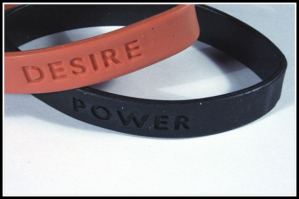
We all want things. That’s what makes life interesting. Fiction, too. Fuel your character’s journey with desire.
What does your character want? It sounds obvious. But looking back, I know I didn’t used to think enough about it. Now, before I write my scenes, I really hone in on the protagonist’s desire. If I am unclear on what it is, I pre-write, have my character speak to me for a couple of hundred words, or throw a few of my people together and let them have a conversation.
It’s good to be aware of both what the character wants throughout the entire story and what the character wants in the scene/chapter you’re working on. As Kurt Vonnegut said: “Every character should want something, even if it is only a glass of water.”
Not wanting something/dreading something can work well too. But, as I always tell my kids, when you focus on what you want, instead of what you don’t want, the results will be so much better!
There is another level of desire for the writer to be aware of: what your character thinks he or she wants. vs. what your character really wants. And why. That’s something else to know.
Finally, a good story is populated with people, all sorts of wonderful, terrible, flawed people, right? The more desires those people have, the more alive and real they will feel to both the writer and the reader. So, get to know your people’s secret (or not so secret) wishes. Then place them into your scenes, sit back and watch, as their desires clash and propel your story forward.
TRUTH
I credit one of my workshop advisors from January, the wise and generous Kathi Appelt, with opening my eyes up to the idea of a character’s “truest truth.” Every character — and I think maybe every person – should have at least one, a big one. Take a moment now to think: what is one thing you believe in with your entire being? What is one truth you could stake your life on? 
And then do the same for your characters. Maybe he believes in the power of music. Maybe his belief is that life is not fair. Maybe her belief is that her physical beauty will carry her through. Or that her mom is perfect. Or that dragons exist, or that there is no God, or that global warming will one day kill us all, or that one day, she will sprout wings, that one day she will fly. (That last one’s from Castle of Concrete, my debut novel  ). Do you see? The belief can be wise or misguided, positive or negative. But characters are much more interesting when they believe in something.
). Do you see? The belief can be wise or misguided, positive or negative. But characters are much more interesting when they believe in something.
Also keep in mind, belief is subject to change. When the character’s innermost belief is shattered by the challenges and events that have been pushing your story forward all along, it turns into an unforgettable moment that transforms your protagonist, and ideally, your reader.
CHANGE 
Of course your main character must change in the course of the novel. An interesting main character will also affect change on others around him. But keep change in mind on scene and chapter level as well, as you write, plot or revise your story. In every single scene something should happen. Which is another way of saying, in every single scene, a change must occur. Or it’s not a scene at all. Just as with desires, changes come in two varieties: internal and external. Here is what I do for every scene, especially when revising (not always when rough drafting, where I explore more):
I write down an Outer Turning Point and an Inner Turning Point for each chapter. Sometimes, by the way, there are more than one. An outer turning point deals with external action, (anything from witnessing a car accident, to leaving the room, to finding treasure), while an inner turning point shows a shift in thought or feeling: for example a change from hope to despair, or a shift in awareness (he will never like me; I am wasting my time). Being aware of these changes helps prevent the characters from constantly see-sawing, or flip-flopping, in their feelings and decisions. (As in: now she likes him, now she doesn’t, now she likes him again). Sure, sometimes a character might change his mind, but it happens in a series of inner and outer turning points building on each other, building into an arc, a progression of change and growth that feels true.
Also, sometimes when I am revising, I’ll copy the first sentence of my scene, and the last, and look at them together. This is a very telling exercise. If you do this, you’ll know right away if there was change or growth in your chapter. You will know whether it was cohesive, or if it falls flat.
So, that’s it. Desire, truth and change.
If your scene loses momentum, or your story does, go back to those three pillars.
These are good to keep in mind for real life as well.
In human experience, desire, truth and change mean everything — or at least they should. As we live out our lives, let’s never be lulled by the daily routine, by the sameness of days and weeks and years, into forgetting our own truths and desires, and change — good change – will take care of itself!
Don’t Miss Reading Katia’s Post Titled, What I’ve Learned At VCFA Series: Semester One (Included: The Secret To Productivity!)
Katia talks about writing and history, and occasionally features interviews and all kinds of lists on her blog, The Magic Mirror, www.katiaraina.wordpress.com.
Talk tomorrow,
Kathy
Filed under:
Advice,
article,
demystify,
Writing Tips Tagged:
Castle of Concrete,
Katia Raina,
Namelos,
Three Pillars of Fiction,
Vermont College of Fine Arts 


By: Kathy Temean,
on 6/16/2013
Blog:
Writing and Illustrating
(
Login to Add to MyJacketFlap)
JacketFlap tags:
Tips,
Book,
Advice,
Process,
demystify,
ebook conversion,
ePub format,
How to handle images,
HowDispaly images in line with text,
No page numbers,
Add a tag
There are three main file types currently associated with eBooks:
• EPUB (.epub) – Short for “electronic publication,” this is the most popular open standard format for eBooks that allows DRM (digital rights management). It is also the format used with all the major retailers EXCEPT Amazon/Kindle. With EPUB, reflowable content ensures that text is displayed in the optimal manner for each eReader or smartphone device.
• Mobipocket (.mobi) – An eBook format that allows users to add a blank page at any point in the text for notes, bookmarks, corrections, and drawings.
• Kindle (.azw) – Amazon’s proprietary format is based on mobipocket, but it comes with its own DRM protections.
1) Once your book has been converted to ePub format, it’s too late to fix a typo! So proof your files for spelling, grammar, and syntax. Remember you are now your own editor! It is up to you to make sure the document you convert to an eBook is meticulously proofread. Even if you pay a company to do the converting for you, you still have to have it perfectly edited, so you might want to consider paying someone to edit your book prior to conversion.
2) Don’t use tabs or the space bar to format paragraphs and individual lines. While it may look the way you want it in a Word or text file, tabs and spaces wreak havoc when converted to eBook format. Use the “Format/Paragraph” menu or alignment buttons in the toolbar of your text-editing program if you want indents.
3) Use standard fonts such as Times New Roman or Courier New. Not all fonts are supported by the eBook format and eReaders. The standard text size is 12 point size font for body text and 14-18 point for chapter titles. Another reason to use Times New Roman: Any special symbols may not convert properly to ePub when using other fonts.
4) The publisher’s name and address, date of publication, copyright info, ISBN number, and other credits should be included on the first two pages of the document.
5) Don’t resize your images in Word or a text editor. All images must be in .png, .jpg, or .tif format, 72 dpi, and in RGB color mode. Do all image resizing outside of the document with image editing software, then reinsert them in your document.
6) If you pay a company to format your manuscript to an ebook, check to make sure of their specs. In general, you will need to resize large images to 300 pixels high if you would like them to display in-line with text. Cover and full-page images should 800-1,000 pixels high by 550-700 pixels wide. Logos or simple images should be 75-100 pixels high.
7) All images (except full-page images) should be set in-line with text. Do not wrap text around images.
8) Tables, sidebars, and inserts will not display properly in ePub format, so extract this type of content and list as ordinary text. Of course, you can always included them as images.
9) Do not include any elements that refer to page numbers other than your formatted Table of Contents. Pages in your document will not coincide with the “pages” on any given eReader.
Talk tomorrow,
Kathy
Filed under:
Advice,
Book,
demystify,
Process,
Tips Tagged:
ebook conversion,
ePub format,
How to handle images,
HowDispaly images in line with text,
No page numbers 

View Next 25 Posts

 Hello all! Jersey Farm Scribe here. Last time we talked I was giving you my take away on how to Attack a Conference. I promised I’d tell you some of the specific, tangible things I learned at the NJ SCBWI.
Hello all! Jersey Farm Scribe here. Last time we talked I was giving you my take away on how to Attack a Conference. I promised I’d tell you some of the specific, tangible things I learned at the NJ SCBWI.


 Marcelo Elizalde was born in Buenos Aires, Argentina, in 1953. He is a self-taught, dedicated children’s books illustrator.
Marcelo Elizalde was born in Buenos Aires, Argentina, in 1953. He is a self-taught, dedicated children’s books illustrator.




















































 Denise Clemmensen has been an artist from the moment she tore open her first box of crayons. In fact she became a drawing maniac. She drew on everything. Her parents finally bought her a little table where her coloring passion could be unleashed a little less destructively. Being a very shy child during her school years, she kept her passion for art quite. Though, one time in fifth grade, while helping out on the class history mural, her fifth-grade teacher noticed she could draw. For the rest of the week her teacher asked her to work on the mural while the rest of the class studied math.
Denise Clemmensen has been an artist from the moment she tore open her first box of crayons. In fact she became a drawing maniac. She drew on everything. Her parents finally bought her a little table where her coloring passion could be unleashed a little less destructively. Being a very shy child during her school years, she kept her passion for art quite. Though, one time in fifth grade, while helping out on the class history mural, her fifth-grade teacher noticed she could draw. For the rest of the week her teacher asked her to work on the mural while the rest of the class studied math.
















 When did you do your the first illustration for children?
When did you do your the first illustration for children?














 What is your favorite medium to use?
What is your favorite medium to use?
















 Thank you Denise for sharing your illustrations, journey, and process with us this week. We look forward to following your career, so please let us know about your new books and all of your future successes.
Thank you Denise for sharing your illustrations, journey, and process with us this week. We look forward to following your career, so please let us know about your new books and all of your future successes.

 Leslie Zampetti has had stories published in online children’s magazines and is now querying agents for her middle grade fantasy novel. A childhood spent in Florida has this transplanted New Yorker frequently dreaming of sunshine – but she enjoys the whirl of the city and its riches, not least of which is the New York Public Library.
Leslie Zampetti has had stories published in online children’s magazines and is now querying agents for her middle grade fantasy novel. A childhood spent in Florida has this transplanted New Yorker frequently dreaming of sunshine – but she enjoys the whirl of the city and its riches, not least of which is the New York Public Library.
























































































 Gideon Kendall was born in Austin, Texas and spent his childhood on a commune deep in the backwoods of West Virginia. He attended high school in Philadelphia, PA and moved to New York City to attend art school. Since receiving his BFA from The Cooper Union in New York City (1989) he has been working as an illustrator, animation, designer, and musician in Brooklyn, NY.
Gideon Kendall was born in Austin, Texas and spent his childhood on a commune deep in the backwoods of West Virginia. He attended high school in Philadelphia, PA and moved to New York City to attend art school. Since receiving his BFA from The Cooper Union in New York City (1989) he has been working as an illustrator, animation, designer, and musician in Brooklyn, NY.


































 Did you know it was going to be a series when you illustrated the first book?
Did you know it was going to be a series when you illustrated the first book? 

























 For the last few weeks we have gone over how to format your manuscript and how to write a synopsis. Every week I have pointed you towards agents and what they are looking for, but really the first thing you need to do is hone your skills on writing a great query letter. It is wonderful that more and more agents are accepting query letters via email, but there a perils that come along with this. We are so used to quickly jotting down a few sentences to talk with friends and hitting the send button without thinking, that the same thing can happen when emailing a query letter to an agent. We all need to beware of doing this an approach the query letter with the same respect as the rest of our writing.
For the last few weeks we have gone over how to format your manuscript and how to write a synopsis. Every week I have pointed you towards agents and what they are looking for, but really the first thing you need to do is hone your skills on writing a great query letter. It is wonderful that more and more agents are accepting query letters via email, but there a perils that come along with this. We are so used to quickly jotting down a few sentences to talk with friends and hitting the send button without thinking, that the same thing can happen when emailing a query letter to an agent. We all need to beware of doing this an approach the query letter with the same respect as the rest of our writing.

 Some of us try to use description language too much in our writing and others need to start thinking about how to use this literary tool more often.
Some of us try to use description language too much in our writing and others need to start thinking about how to use this literary tool more often. We’ve been talking a lot about how to format your manuscript, so I bought The First Five Pages: A Writers Guide To Staying Out of the Rejection Pile by Noah Lukeman to see what other things might be good to share and already he has reminded me of things I forgot to mention to you that you should do before submitting.
We’ve been talking a lot about how to format your manuscript, so I bought The First Five Pages: A Writers Guide To Staying Out of the Rejection Pile by Noah Lukeman to see what other things might be good to share and already he has reminded me of things I forgot to mention to you that you should do before submitting. 






























 Do you feel living in New York City helps you get more work?
Do you feel living in New York City helps you get more work?




















 Thought you might like to see what agent Hanna Bowman said she was looking for this past week. Just remember now is not to time to start writing a story to fit this wish list, since by the time you finish, Hanna will probably be on to wanting other things. But maybe there is someone reading this post who has a manuscript written that is a perfect fit and is looking for a home. Or maybe you are working on something that fits and this will spur you on to finishing the book. Tip: Just make sure your manuscript is revised and polished before submitting. I hope this helps someone.
Thought you might like to see what agent Hanna Bowman said she was looking for this past week. Just remember now is not to time to start writing a story to fit this wish list, since by the time you finish, Hanna will probably be on to wanting other things. But maybe there is someone reading this post who has a manuscript written that is a perfect fit and is looking for a home. Or maybe you are working on something that fits and this will spur you on to finishing the book. Tip: Just make sure your manuscript is revised and polished before submitting. I hope this helps someone. 


 A transplanted New Yorker now living in Missouri, Wendy Martin has been working as an illustrator for 25+ years.
A transplanted New Yorker now living in Missouri, Wendy Martin has been working as an illustrator for 25+ years.















































 Six Common Myths about Book Reviews
Six Common Myths about Book Reviews Katia Raina is the author of “Castle of Concrete,” a young adult novel about a timid half-Russian, half-Jewish teen in search of a braver “self” reuniting with her dissident mother in the last year of the collapsing Soviet Union, to be published by Namelos.
Katia Raina is the author of “Castle of Concrete,” a young adult novel about a timid half-Russian, half-Jewish teen in search of a braver “self” reuniting with her dissident mother in the last year of the collapsing Soviet Union, to be published by Namelos.


Thanks for the great post, Erika! I didn’t get to attend Jill Corcoran’s concept workshop (because there were just so many great ones to choose from!) but heard non-stop fro other attendees how incredibly helpful (and a little scary) it was for stripping down a pitch to the core concept and building it up again stronger and more eloquent.
I’d recommend that anyone who wants more of this great support and advice join the Path to Publishing Facebook group and consider one of their video series. Path to Publishing is also launching 1-day live video workshops for concept/pitch. I’m trying to clear my schedule for one right now!
I remember Jason’s adorable illustration well! Just love it :)
And, hey, Erika! :D I love your guest posts here :) Breaking things down to make them truly understood is the BEST way to help/teach others what may be the best or easiest method. This is all so true. I’ve heard it said (and follow this, too), that a pitch is like a movie trailer. I agree! You get enough of what drives the story in a very concise “in your face” kind of way, which is ultimately the concept, right? You want/need to whet someones curiosity, just the way a title of a blog post will compel someone to “click” and read :)
Thanks for sharing this :D
Thanks Katey! And I def agree, their videos are great! Jill and Martha are amazing. You can go to http://www.apathtopublishing.com to check it out. They have a great Facebook group too like Katey said.
Movie trailer, I love it! A teaser! Make someone want to read/watch/click/listen… more, more MORE! :-)
Thanks so much!
Another super post. This IS what sells our stories! (Bummer that I didn’t meet you at NJ SCBWI!!)
Glad I could be of help, too, Erika :) I sincerely wish I could tell you where and through whom I heard that!
Thanks for the post, Erika, and what a wonderful illustration by Jason! I’ll definitely save this post for future reference.
Thanks for sharing Erica – This is very helpful information.
And Jason, I just love (all) your work and that illustration is amazing. You are so very talented, so happy have gotten to know you!